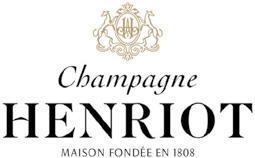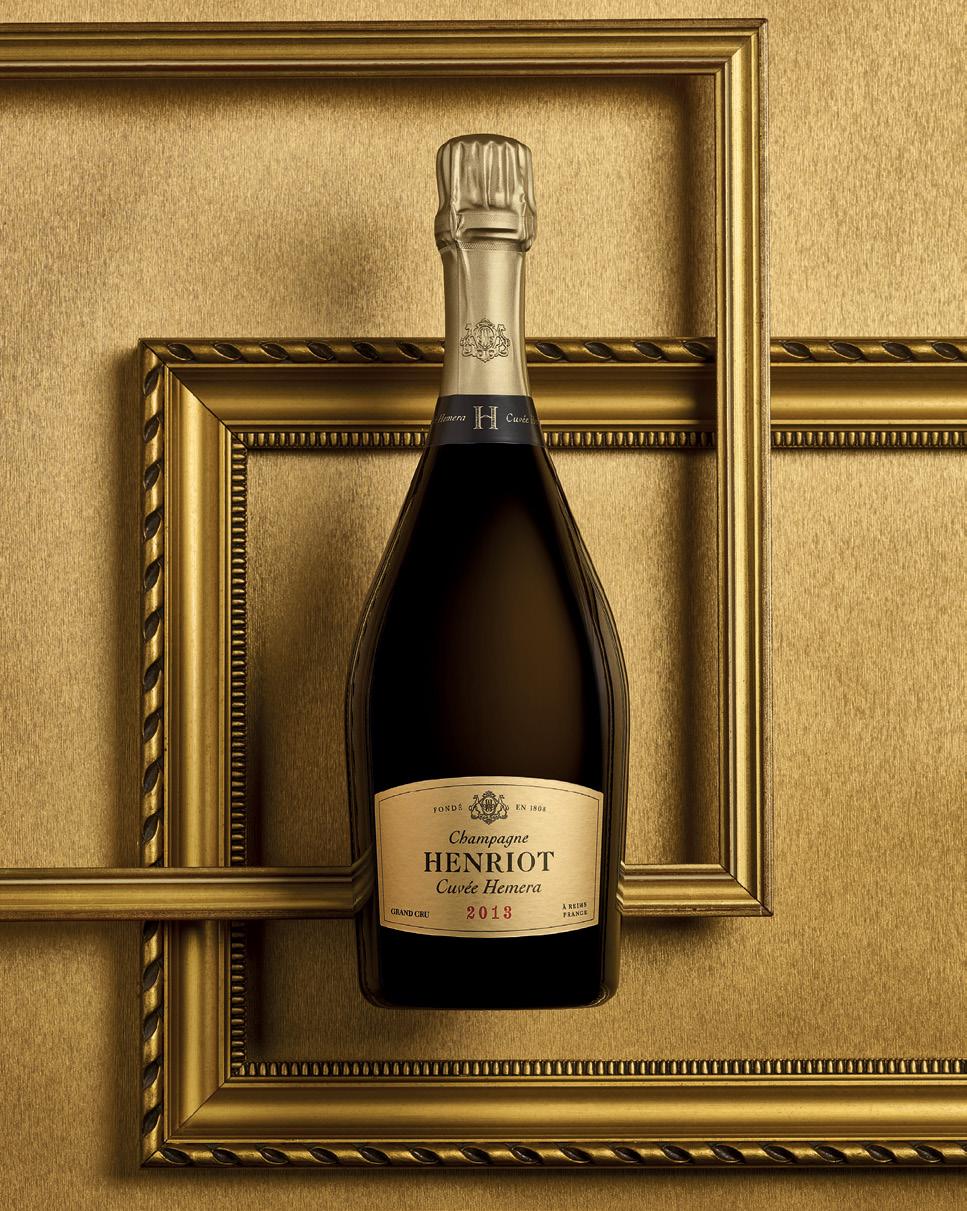










VicenzaOro, le Settimane milanesi del Gioiello, del Design e della Moda, Homo Faber e le Biennali d’Arte e di Architettura a Venezia, Vinitaly, Host e BIT… Sono solo alcune delle tantissime manifestazioni di successo a livello mondiale che l’Italia ogni anno organizza in tutti quei settori che vanno a comporre e a influenzare lo stile di vita delle persone in tutto il mondo: la moda, gli accessori, l’arredamento, l’arte, la convivialità, il turismo e il tempo libero. È proprio di tutto questo che si nutre il Made in Italy: di una storia fatta di bellezza, tecnica e cultura e della capacità di rinnovarla costantemente, contaminandola e rielaborando creativamente gli stimoli e le prospettive che vengono da altri Paesi, da altri mondi. La diversità come ricchezza è una lezione che l’Italia ha fatto propria da lungo tempo. Quando parliamo di Made in Italy parliamo di un qualcosa che è molto italiano ma che è al tempo stesso capace di parlare una lingua internazionale, senza paura di aprirsi al mondo e senza mai cadere nel provincialismo. Ogni creazione realmente “Made in Italy” parla necessariamente questa lingua, che i grandi eventi non fanno che diffondere.
VicenzaOro,the Milanese Jewellery,Design and Fashion Weeks,Homo Faber and the Art and Architecture Biennales in Venice,Vinitaly,Host and BIT...These are just a few of the many globally successful events that Italy organizes every year in all those sectors that make up and influence the lifestyles of people all over the world: fashion,accessories,furniture,art,entertainment,tourism and leisure.Made in Italy is enhanced by all of this: by a history made of beauty,technique and culture and the ability to constantly reinvent it, contaminating it and creatively reworking the stimuli and perspectives that come from other countries, other worlds.The richness of diversity is a lesson that Italy has long embraced.When we talk about Made in Italy we are talking about something that is very Italian but at the same time able to speak an international language,without being afraid to open up to the world and without ever falling into provincialism.Every truly“Made in Italy”creation inevitably speaks this language,which major events only help to spread.

Issue 09
EDITOR-IN-CHIEF
Vincenzo Carbone
EDITORIAL DIRECTOR
Domenico Festa
domenico.festa@huesersmagazine.com
EDITORIAL COORDINATOR
Antonella Garello
antonella.garello@huesersmagazine.com
ART DIRECTOR
Fabrizio Majerna
CONTRIBUTORS
Giuseppe Arena, Salvador Asensio, Silvia Badalotti, Rosa Chiesa, Alberto Corrado, Davide Passoni, Giuseppe Riserbato, Michele Romano, Donatella Zappieri
NAVA COMUNICAZIONE
Via Lattanzio, 15 - 20137 Milano - Italy
CONTACTS
editorialstaff@huesersmagazine.com

HUESERS IS PUBLISHED BY
PRODES ITALIA SRL
Via Sansovino, 6 - 20133 Milano - Italy +39 02.36580208 info@huesersmagazine.com
ADVERTISING
adv@huesersmagazine.com Italy
Barbara Pedone
barbara@prodesitalia.com - +39 3286345142
Other Countries
Cherine Zoia cherine@prodesitalia.com - +39 3519179356
PRINTED BY Denona doo Getaldićeva 1 - 10 000 Zagreb - Croatia
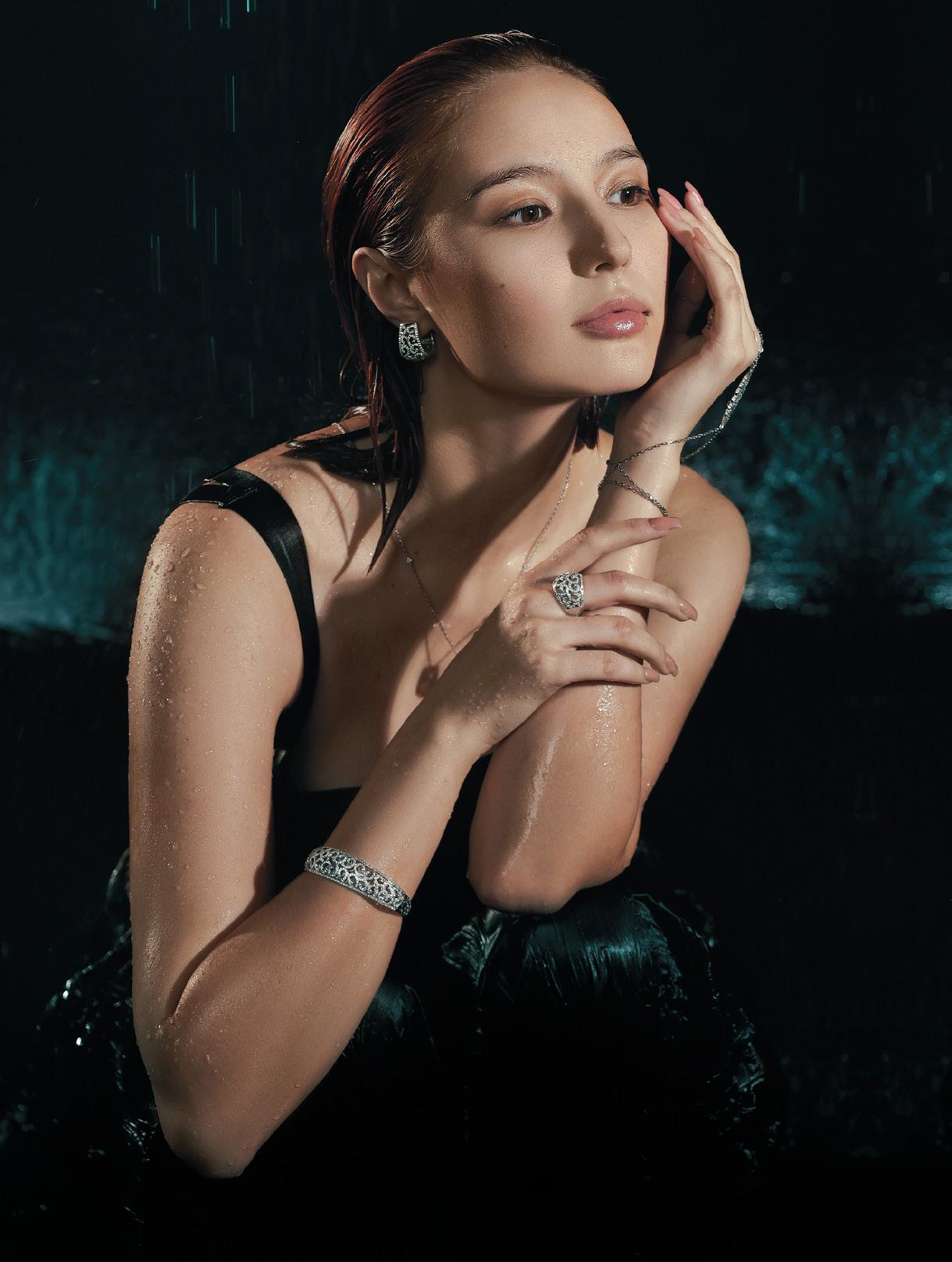

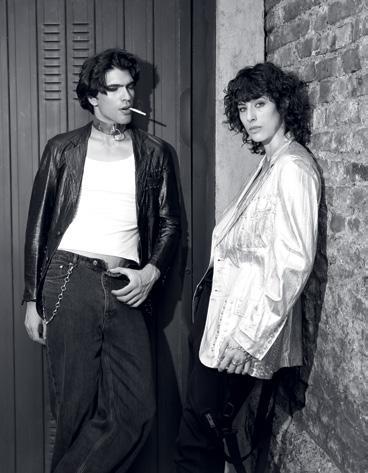



The Milanese Week that celebrates the history, tradition and innovation of the fascinating world of international jewellery.
Milano Jewelry Week creates moments of exchange and interaction, captivating trade operators and attracting the whole public of passionate thanks to a calendar full of events: exhibitions, presentations, workshops, talks, awards, live performances and vernissage.
A widespread event that develops in Milano center within exclusive and evocative locations in the city: historic buildings, high jewelry ateliers, goldsmith workshops, academies, art galleries, fashion boutiques and design showroom.




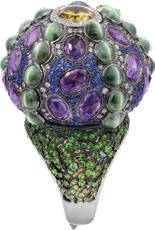


by Alberto Corrado

Ben venga tutto quello che incoraggia a studiare e comunque a non dimenticare quello che fece Gabrielle Bonheur Chanel, straordinaria intellettuale francese di cultura liberale, stilista e femminista di una specie particolare; legata al suo tempo, tra i primi anni del secolo scorso e il dopoguerra, il cui metodo di creazione è adattabile anche all’oggi, in un modo cambiato, ma sempre forte di quell’individualismo classico, lontano da quello degenerato dei nostri giorni, preda della ideologia economica. Quel suo liberalismo al quale non sfugge la proiezione naturalmente sociale della femminilità, che seppe difendere sempre e con successo. E la sua idea di libertà femminile è stata l’apripista per quegli intellettuali che si affacciarono sulla scena a partire dal ’68. Mademoiselle Coco Chanel non creava la femminilità con carta e penna (se non nei momenti di riposo nel suo appartamento parigino o quando era in viaggio attraverso i suoi sketch) ma con stoffa, forme e colori; il che non impedisce che le fossero attribuite comunemente l’autorità e la brillantezza di una couturier del
“Grand Siècle”: elegante come Racine, filosofa come Nietzsche nel non essere superficiale, volendo sapere sempre tutto, poliglotta tale che
«Finiva un mondo,un altro stava per nascere.Io stavo là; si presentò un’opportunità,la presi.Avevo l’età di quel secolo nuovo che si rivolse dunque a me per l’espressione del suo guardaroba.Occorreva semplicità,comodità,nitidezza: gli offrii tutto questo,a sua insaputa».
Coco Chanel
sapeva dialogare perfettamente in francese (la sua madrelingua), inglese, russo e italiano, anche se le faceva ridere il proprio accento. Mademoiselle Coco, si dice, evitava alla moda di
sconfinare nelle barbarie e la colmava di tutti i valori dell’ordine classico: ragione, naturalezza, permanenza, gusto di piacere e di stupire; Gabrielle Chanel era molto amata da qualsiasi magazine, dove occupava una parte principale come chi ha insegnato la buona cultura del vestire. Ma soprattutto colei che ha trasportato l’estremo classicismo verso il futurismo vestendo tutte le donne del mondo, che la riconoscevano come innovatrice assoluta di uno stile in grado di rinnovarsi, senza tradire personalità e individualità. Le sue creazioni contestavano l’idea stessa di moda. Oggi la moda si basa sul sentimento violento del tempo. Ogni anno, la moda distrugge ciò che aveva adorato, e adora ciò che distrugge; la moda sconfitta dell’anno passato potrebbe rivolgere alla moda vincente dell’anno in corso quella frase ostile “ero ieri ciò che sei oggi, sarai domani ciò che sono oggi”. Le creazioni e l’Heritage di Maison Chanel non partecipano, o partecipano poco a questa vendetta annuale. Mademoiselle Coco lavorava sempre sullo stesso modello di bellezza, che si limitava a variare, di anno in anno, come si varia un

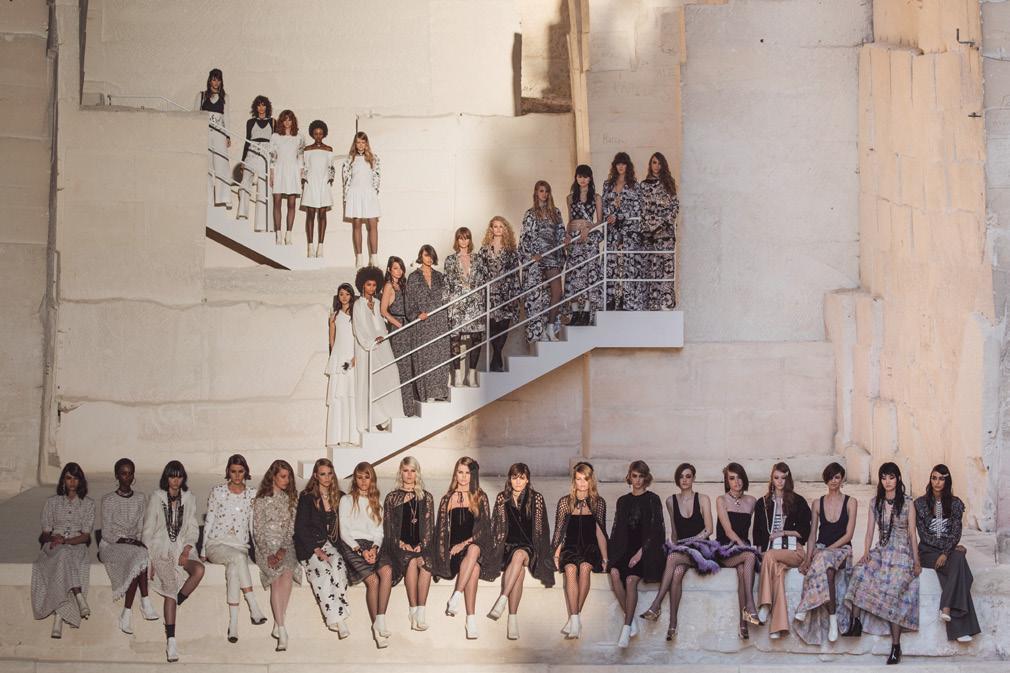
tema musicale; ogni sua creazione era e rimane un’opera, che si trasfigura in una bellezza eterna della donna la cui immagine unica ci è stata trasmessa prima dalla storia dell’arte, poi dalla nuova estetica composta nei primi del Novecento, fino ad arrivare ai giorni nostri. La cosa stessa che nega la moda, la durata, che è trasformata da Gabrielle Chanel in qualità preziosa. Ora, nell’estetica del vestito, o di un gioiello, c’è un valore molto particolare, persino paradossale, che riunisce la seduzione e la durata: è lo chic. Lo chic sopporta e addirittura esige, se non l’usura dell’oggetto, quantomeno il suo uso. Lo chic, sorta di tempo sublimato, è il valore chiave dello stile di Chanel. Il tempo è stile. E così anche una certa idea del corpo femminile. Così, di tutte le mode, lo stile di Gabrielle Chanel è forse il più sociale, perché ciò che combatte, e respinge, non sono, come si crede, le provocazioni futuristiche di una moda giovane, ma piuttosto le volgarità di un guardaroba mediocre. Così, abbiamo ammirato dalla sua mente creativa delle collezioni che parlano di tradizione e d’innovazione, di classicismo e di modernismo. Bisogna credere che la nostra società abbia bisogno di questo duello, poiché essa s’ingegna ad allargarlo a tutti i campi dell’arte, e sotto una varietà di forme; e se esso esplode oggi nella moda, con una nitidezza eccezionale, è perché la moda è anch’essa un’arte, allo stesso titolo della letteratura, della pittura, della musica. Di più, la figura di Mademoiselle
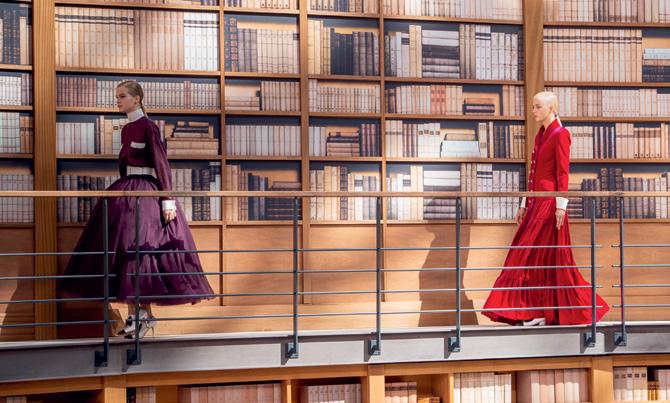
Coco ci insegna e ci conferma che oggi la moda non è soltanto ciò che le donne indossano; è anche ciò che tutte le donne guardano e leggono, soprattutto ammirano. Per questo desideriamo sempre ricordare la sua figura in un modo inedito parlando di quello che ci ha lasciato nel creare abiti, accessori e gioielli che hanno forme e significati, nel momento in cui incontrano il corpo, costituendo una struttura di senso, e perciò oggetto del desiderio.

MADEMOISELLE COCO DÀ VOCE A GABRIELLE BONHEUR CHANEL.
ARTE, VIAGGI E AMORI PASSIONALI HANNO PLASMATO LA SUA
PERSONALITÀ E DI CONSEGUENZA LE SUE CREAZIONI SONO ANCORA
OGGI ELEMENTI ICONICI DI UN MANIFESTO POLITICO FEMMINISTA.
UN’AUTENTICA VISIONARIA, NON SEMPRE COMPRESA, CHE MAI SI È PIEGATA ALLE CONVENZIONI
Women Matter, le donne contano. E Gabrielle Bonheur Chanel lo affermava in quasi tutte le interviste rilasciate ai magazine e alla Radiodiffusion-Télévision Française, scandendo le parole con cura. La stilista francese ha sempre girato il mondo con un manifesto politico femminista che rimaneva sempre lo stesso a cui ispirarsi, e la sua risposta a chi le chiedeva il perché di tanta foga, era sempre la stessa: «Fino a quel momento avevamo vestito donne inutili, oziose, donne a cui le cameriere dovevano infilare le maniche; invece, avevo ormai una clientela di donne attive; una donna attiva ha bisogno di sentirsi a suo agio nel proprio vestito. Bisogna potersi rimboccare le maniche». Un We exist, noi esistiamo, come un grido di battaglia e un progetto dalle grandi ambizioni che è arrivato
fino ai giorni nostri, come uno strumento potente. Un progetto innovativo, dove newsrooms interconnesse abitano nello stesso spazio, e uniscono varie sfaccettature del mondo femminile. Qui possiamo ricordare che nel 1932
«La gente crede che abbia trovato tutte le porte aperte,ma la verità è che le ho spinte».
Coco Chanel
Mademoiselle Coco fu la prima donna a presentare la prima collezione di alta gioielleria in un mondo per sua natura più “conservatore”
come quello della gioielleria. E lo scopo primario, che era offrire alle donne un abbigliamento chic, moderno e funzionale a prescindere dalle mode, oggi lo ritroviamo in Sport, la linea di alta gioielleria presentata dalla Maison a Montecarlo e incentrata sullo sportswear. Una linea di gioielleria perfettamente in linea con la ragion d’essere della fondatrice, dato che lo stesso Patrice Leguéreau ha ritrovato negli archivi un biglietto da visita, risalente al 1921, dell’atelier di “couture sport”, in cui venivano realizzati capi sportswear su misura. E il risultato sono creazioni raffinate che si avvicinano maggiormente alla realtà anatomica del corpo, e allo stesso modo dell’abbigliamento sportivo: dal motivo chevron che evoca ritmo e velocità ai motivi e al design grafico, che rivisitano i sim-

boli di Mademoiselle Coco come il 5 nella tipografia “Chronometer”, il leone incastonato in uno stemma, la stella come simbolo di vittoria, fino alla firma di Chanel, che viene introdotta per la prima volta in creazioni di Alta Gioielleria, a forma di impronta traforata.
Altro vettore di soft power negli anni ’20 era il rossetto, che divenne simbolo di glamour affermato, oltre che di emancipazione. Le suffragette ne fecero un emblema nella loro lotta, proclamando sia le proprie capacità intellettuali che le proprie attitudini per reinventarsi ogni giorno. Da quel momento in poi, Mademoiselle Coco ha caratterizzato il rossetto come simbolo di emancipazione e nelle sue leggendarie citazioni affermava: «Se sei triste, metti un po’ di rossetto e attacca».
Nel 1924, Gabrielle Chanel creò il suo primo rossetto, che considerava un “simbolo di eleganza” e un secolo dopo 31 LE ROUGE riafferma la quintessenza di creatività e lo spirito secondo Chanel. Ispirandosi agli specchi della leggendaria scalinata di Rue Cambon, questo oggetto sofisticato con un nome a 2 cifre unisce la funzionalità tecnica alla brillantezza singolare del colore.
Ma non basta. Un altro percorso, che ha creato un passaparola e di cui la gente ha capito l’importanza, è Les Rende-vous littèraires rue Cambon, per capire ancora di più la figura di Mademoiselle Coco e il suo amore per la letteratura, che forse a molti non è noto. Infatti nel suo bellissimo appartamento di Rue Cambon a Parigi la fashion designer era attorniata di libri, che definiva “i miei migliori amici” ed è proprio grazie alla letteratura che maturò una grande passione per i simbolisti francesi, i grandi classici della letteratura latina e greca, per poi affinare quella consapevolezza e sicurezza che l’aiuteranno a emergere nel suo lavoro. Basti pensare al ruolo importante della letteratura russa, che sfocerà nella collezione Paris-Russe della Maison Chanel, 1920 circa. Dal 2021 l’affascinante Charlotte Casiraghi, ambasciatrice e portavoce della Casa di Moda, ha creato una serie di incontri letterari, riunendo autrici e amiche della Maison per esplorare il
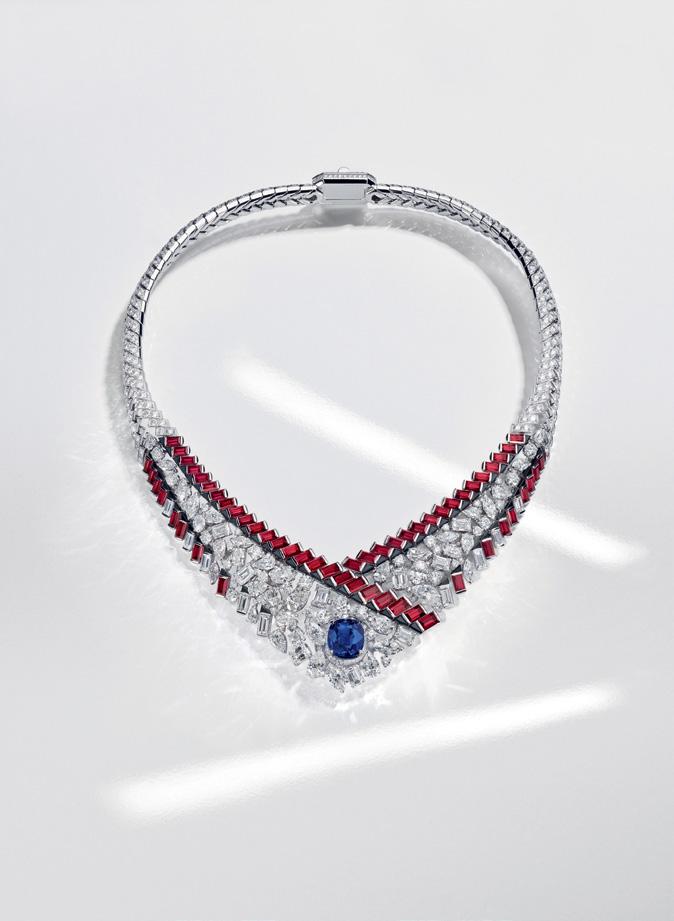
tema dell’emancipazione femminile, attraverso le opere o quelle figure letterarie unificanti. Les Rendez-vous littèraires sono trasmessi sulla piattaforma del sito della Maison Chanel per chiunque desiderasse rivederli o riascoltarli, assieme ai consigli di letture che Charlotte Casiraghi concede ai lettori, secondo la stagione, che sia estate o inverno.
Da oggi Chanel è più di quella che era ieri, creando nuove idee. È una vera rivoluzione del muoversi e del pensare, perché riunisce tutte le donne in una ricerca di nuove mete e di nuovi mondi, per non isolarsi in un totale silenzio digitale. È stato sempre importante, dalla fondatrice ad oggi, riuscire a creare emozioni, gioia, ricordi, delusioni e successi, perché sono emozioni che durano nel tempo e ci seguono ovunque andiamo.

“One world ended, another was about to be born. I was there; an opportunity presented itself, I took it. I was the age of that new century,which turned to me for the expression of its wardrobe. Simplicity, comfort, sharpness were needed: I offered all this, without their knowledge”.
Coco Chanel
Welcome anything that encourages study and in any case not to forget what Gabrielle Bonheur Chanel did, an extraordinary French intellectual of liberal culture, a fashion designer and feminist of a special kind;linkedtohertimebetweentheearlyyearsofthe last century and the postwar period, whose method of creation can also be adapted to today in a different way,but still strong in that classical individualism,far from the degenerate individualism of our days, prey to economic ideology. That liberalism of hers which does not escape the naturally social projection of femininity, which she always successfully defended. And her idea of women’s freedom was the forerunner for those intellectuals who came onto the scene as of ‘68. Mademoiselle Coco Chanel did not create femininity with pen and paper (except when she was resting in her Parisian apartment or when she was traveling through her sketches) but with fabric, shapes and colors; this does not prevent her from being commonly attributed the authority and brilliance of a “Grand Siècle”couturier: as elegant as Racine, as philosophical as Nietzsche by not being superficial,always wanting to know everything,such a polyglot that she could converse perfectly in French (her native tongue),English,Russian and Italian,even if it made her laugh at her own accent.Mademoiselle Coco, it is said, prevented fashion from trespassing into barbarism and filled it with all the values of the classical order: reason, naturalness, permanence, a taste for pleasure and amazement; Gabrielle Chanel was much loved by any magazine, where she had a leading part as somebody who taught about good dressing culture. But above all she who transported extreme classicism to futurism by dressing all the women of the world, who recognized her as an absolute innovator of a style capable of renewal
without betraying personality and individuality. Her creations challenged the very idea of fashion. Today, fashion is based on the extreme sentiment of the time.Every year,fashion destroys what it had adored, and adores what it destroys; the defeated fashion of the past year may say to the winning fashion of the current year the hostile phrase “I was yesterday what you are today,tomorrow you will be what I am today.”Maison Chanel’s creations and heritage do not participate, or they don’t participate much, in this annual vendetta. Mademoiselle Coco always worked on the same model of beauty, which she didn’t change much year on year, like a musical theme changes; each of her creations was and remains a piece,transfiguring itself into an eternal beauty of the woman whose unique image has been transmitted to us first by the history of art, then by the new aesthetics composed in the early twentieth century, and up to the present day.The very thing that denies fashion,durability,which is transformed by Gabrielle Chanel into precious quality.Now,in the aesthetics of a dress, or a piece of jewelry, there is a very special, evenparadoxicalvaluethatbringstogetherseduction and durability: it is chic. Chic endures and even demands,if not in the wear and tear of the object,at least in its use.Chic,a kind of sublimated time,is the key value of Chanel’s style. Time is style. And so is a certain idea of the female body. Thus, of all fashions, Gabrielle Chanel’s style is perhaps the most social, because what she fights and rejects are not, as one believes,the futuristic provocations of young fashion, but rather the vulgarities of a mediocre wardrobe. Thus,we have admired collections from her creations that speak of tradition and innovation, of classicism and modernism. We must believe that our society needs this duel,as it aims to extend it to all fields of art, and under a variety of forms; and if it explodes today in fashion, with exceptional sharpness, it is because fashion is also an art, in the same way as literature,painting or music.
Furthermore,thefigureofMademoiselleCocoteaches andconfirmstousthattodayfashionisnotonlywhat women wear; it is also what all women look at and read,and especially what they admire.
That is why we always wish to remember her figure in an unprecedented way by talking about what she left us in creating clothes, accessories and jewelry that have forms and meanings as they meet the body, constituting a structure of meaning,and therefore an object of desire.

“People think I had all the doors open,but the truth is that I pushed them open”.
Coco
Chanel
Women Matter. And Gabrielle Bonheur Chanel affirmed this in almost every interview she gave to magazines and Radiodiffusion-Télévision Française, carefully punctuating her words.
The French designer always traveled the world with an unchanging feminist political manifesto to draw inspiration from,and her answer to those who asked her why she was so eager was always the same:“Up to that point we had been dressing useless,idle women, women whose maids had to tuck in their sleeves; instead, I now had a clientele of active women; an active woman needs to feel comfortable in her dress. You have to be able to roll up your sleeves”.
on, Mademoiselle Coco made lipstick a symbol of empowerment and in her legendary quotes stated: ”If you’re sad, put on some lipstick and attack”. In 1924,Gabrielle Chanel created her first lipstick,which she considered a“symbol of elegance,”and a century later 31 LE ROUGE reaffirms Chanel’s quintessential creativity and spirit. Inspired by the mirrors of the legendary Rue Cambon staircase, this sophisticated object with a 2-digit name combines technical functionality with singular brilliance of color. Butitisnotenough.Anotherroute,whichhassparked talkandwhoseimportancepeoplehaverealized,isLes Rendez-vous littèraires rue Cambon, to understand even more about Mademoiselle Coco and her love of literature, which may not be known to many. In fact, in her beautiful apartment on Rue Cambon in Paris,the fashion designer was surrounded by books, whichshecalled“mybestfriends”,anditwasthrough literature that she developed a great passion for the French Symbolists, the great classics of Latin and Greek literature, and then honed the awareness and confidence that would help her emerge in her work. Just think of the important role of Russian literature, which would result in Maison Chanel’s ParisRusse collection, ca. 1920. Since 2021, the charming Charlotte Casiraghi, ambassador and spokesperson for the fashion house, has created a series of literary encounters, bringing together female authors and friends of the Maison to explore the theme of women’s empowerment through the works or those unifying literary figures. Les Rendez-vous littèraires are broadcast on the Maison Chanel website platform for anyone who would like to review or listen to them again,along with the reading recommendations that Charlotte Casiraghi grants readers,depending on the season, whether it is summer or winter. As of today Chanel is more than what it was yesterday, creating new ideas. It is a real revolution in movement and thought because it brings all women together in a search for new destinations and new worlds, so that they are not isolated in a total digital silence. It has always been important, from the founder to the present,to be able to create emotions,joy,memories, disappointments and successes, because these are emotions that last and follow us wherever we go.
Mademoiselle Coco gives voice to Gabrielle Bonheur Chanel. Art,travel,and passionate loves shaped her personality, and as a result her creations are still iconic elements of a feminist political manifesto. A true visionary,who wasn’t always understood and who never bowed to anything conventional
A We exist, as a battle cry and a project with great ambitions that has reached the present day as a powerful tool. An innovative project, where interconnected newsrooms inhabit the same space, and bring together various facets of the female world. Here we can recall that in 1932 Mademoiselle Coco was the first woman to present the first high jewelry collection in a world that was by nature more “conservative” like jewelry. And the primary purpose,which was to offer women chic,modern and functional clothing regardless of fashions, can now be found in Sport, the high jewelry line presented by the Maison in Monte Carlo and focused on sportswear. A jewelry range that is perfectly in line with the founder’s raison d’être,as Patrice Leguéreau himself found in the archives a business card dating back to 1921 for the “couture sport” atelier, where custom-made sportswear garments were made. And the result is refined creations that are closer to the anatomical reality of the body, and similar to the way sportswear does: from the chevron motif that evokes rhythm and speed to the patterns and graphic design, which revisit Mademoiselle Coco’s symbols like the 5 in the“Chronometer”typography,the lion set in a coat of arms, the star as a symbol of victory, to Chanel’s signature, which is introduced for the first time in High Jewelry creations in the form of an openwork imprint. Another vector of soft power in the 1920s was lipstick, which became a symbol of established glamor as well as emancipation. The suffragettes made it an emblem in their struggle, proclaiming both their intellectual abilities and their attitudes to reinvent themselves every day.From then

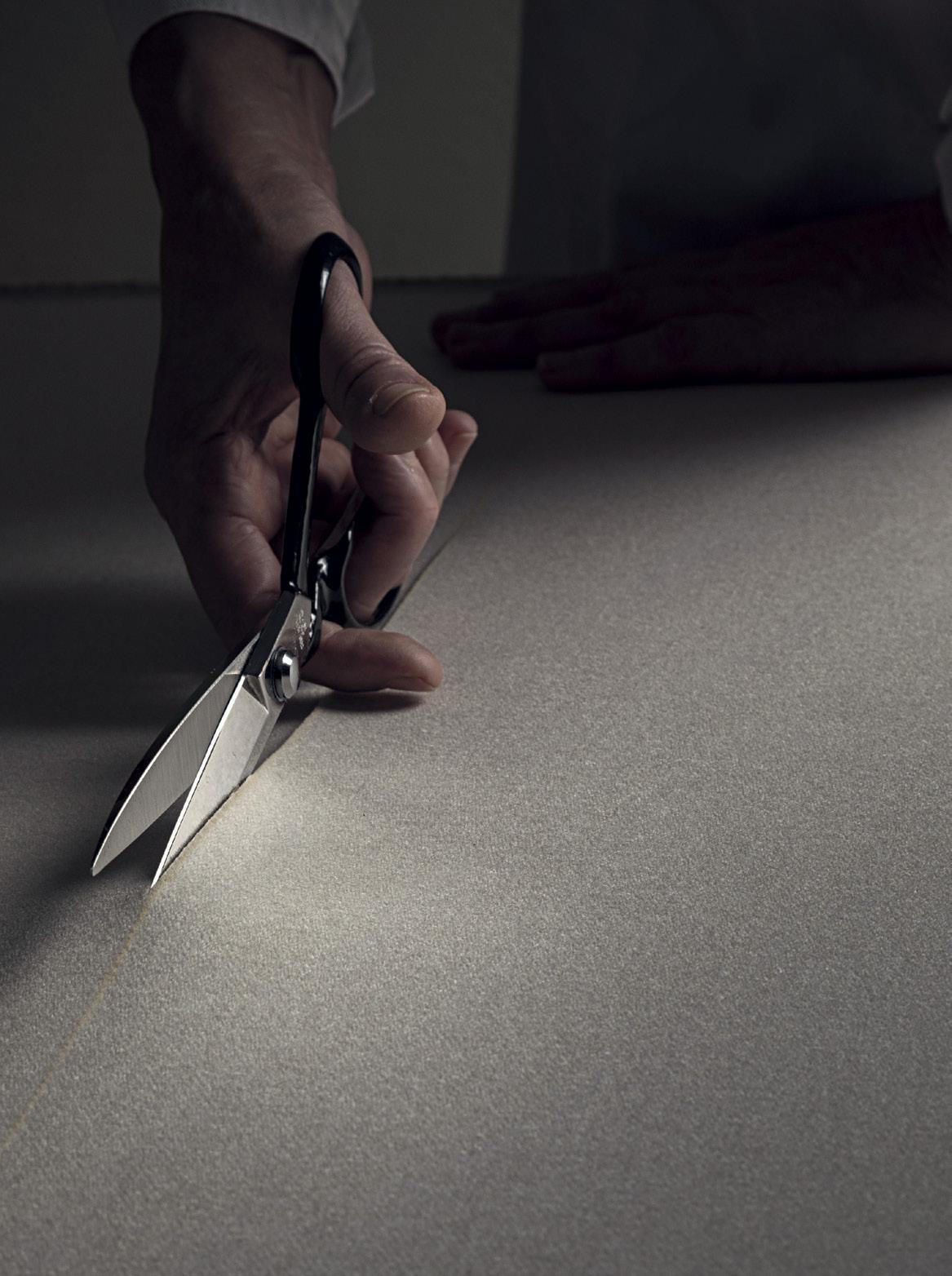
by Alberto Corrado
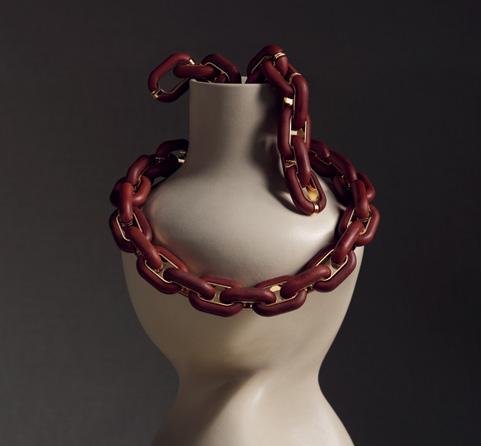
L’ARTE SUPREMA DELL’ECCELLENZA E DELLA RAFFINATEZZA DI LORO PIANA SI MESCOLA CON I MACCHINARI DALLA TECNOLOGIA AVANZATA, PER GARANTIRE UN PRODOTTO DI LUSSO SEMPRE PIÙ PERFORMANTE, CHE STRIZZA L’OCCHIO ALL’INTRAMONTABILE FASCINO DI UNA ESTETICA OLD MONEY
«Io faccio. Ovvero: per quanto incredibile possa apparire un tessuto,se non serve a niente, non mi interessa».
Pierluigi Loro Piana

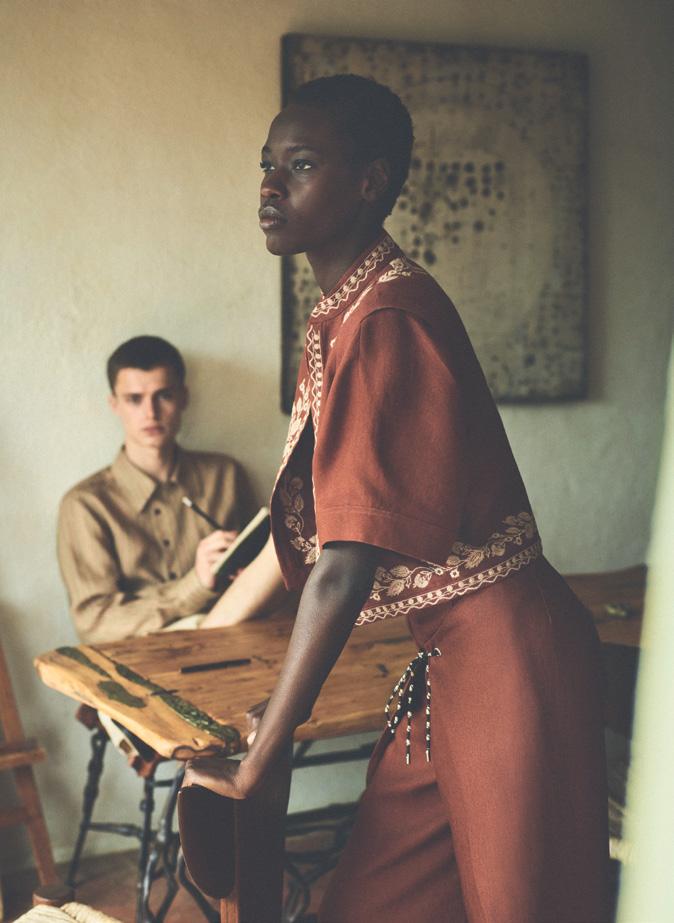
Che cosa dovrebbe fare un’azienda del lusso? Impegnarsi ogni giorno, per avere la possibilità di fare quello che le piace, indipendentemente dalla tendenza del momento.
E il principio che guida Loro Piana, da sempre, è proprio questo. La storia di questo impegno parte da lontano, esattamente dall’inizio del diciannovesimo secolo, a Trivero, Tërvé in piemontese, dove la famiglia Loro Piana comincia la propria attività di mercanti di lana. Altro lasso di tempo fondamentale: la seconda metà del secolo, quando la famiglia si trasferisce in Valsesia, dando origine al lanificio Fratelli Lora e Compagnia, a cui segue il lanificio di Quarona di Zignone & C, all’inizio del ventesimo secolo.
Nel periodo dopo la seconda guerra mondiale Franco Loro Piana, nipote di Pietro, avvia la propria programmazione, trasformando l’attività di famiglia in un brand ampiamente conosciuto nel settore dell’alta moda mondiale. Una strategia vincente che negli anni Novanta viene portata avanti dai figli, i quali portano a diversificare la propria produzione: dall’abbigliamento agli accessori tessili, dalle calzature al settore home,
distribuiti attraverso una rete di negozi di proprietà, situati nelle strade dello shopping più esclusive del mondo.
Oltre cento anni di una storia, quindi, che continua a rinnovarsi, grazie anche alle nuove strategie introdotte da LVHM, che ha acquisito l’85% del gruppo, e allo stesso tempo ricerca e sostiene il grande patrimonio di artigianalità delle sue Maison, anche quelle più appartate, e che dal 2011 sono visibili al grande pubblico attraverso “Les Journées Particulières”: una iniziativa inedita che rende omaggio al patrimonio unico dei mestieri e savoir-faire delle sue Maison, facendo emergere chi opera con magia e con tutela alla qualità attraverso la pazienza e il rispetto della materia prima, che dovrebbe essere sempre principio esclusivo per chi opera nei beni di lusso. Una peculiarità di stile che è stata portata avanti in modo serio, fin dall’inizio, anche quando spadroneggiavano altri tipi di tendenze, puntando solo sulla genialità di mani esperte e sulle fibre migliori, tattili e uniche, che ricordano sempre più spesso la morbidezza delle nuvole. Ma l’attività di Loro Piana non è legata soltanto a questi elementi citati, ma anche al rapporto con la natura, elemento essenziale del lusso, che assume un carattere esperienziale e uno stile, sinonimo di divertimento en plein air, come nelle collezioni del prossimo inverno, dove si esplora il mondo dell’hiking e dell’outdoor. Qui il savoir faire di Loro Piana traspare con evidenza nei tessuti tecnici accostati a sete e cashmere pregiati, tutti sapientemente lavorati per resistere agli elementi. E poi un altro elemento altamente
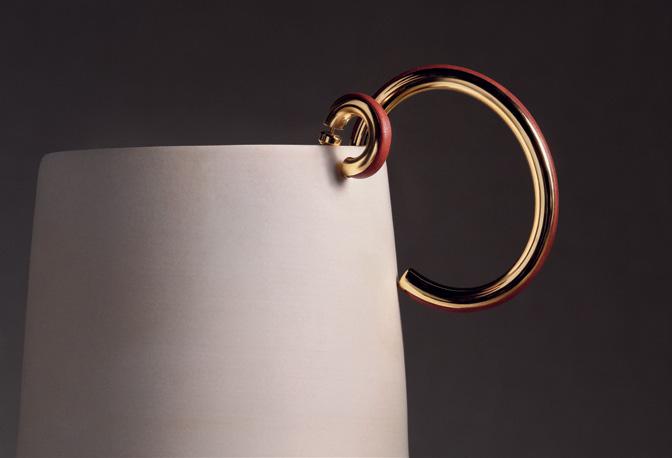
performante è l’introduzione di una innovativa membrana contenente grafene, ideata da Loro Piana, dalle straordinarie proprietà conduttive, in grado di distribuire il calore del corpo in modo uniforme, garantendo la massima sensazione di comfort. Questo riflette sull’importanza della innovazione tecnologica nell’elaborare un proprio lusso indipendentemente dal mercato e dalle mode, creando un completamento di offerta che permette di possedere pezzi che abbiano una lunga vita oltre l’hype del momento. L’uomo o la donna contemporanei sono interessati a proiettare un guardaroba di capi essenziali e di altissima qualità da portare tutti i giorni, lasciando intravedere una comprensione più sofisticata di quel sinonimo di eleganza e distinzione. Se si vuole cercare un insegnamento dietro questo stile, allora possiamo forse riprendere una famosa frase di Vivienne Weestwood: «Compra meno, scegli bene, fallo durare». Una offerta che si può trovare nel gusto inconfondibile di tradizione e modernità di Loro Piana anche nella linea senza tempo DUO di Costume Jewellery che rappresenta l’armoniosa fusione di metallo e pelle in collane a catena, in orecchini e in bracciali. L’alternarsi di metallo, raso e pelle offre un’esperienza sensoriale inimitabile, creando quel meraviglioso gioco di contrasto tra morbidezza e resistenza. Tra i pezzi più iconici le spille in ottone a forma di fiore di cardo, in Sun Gold e Antique Silver, che si ispirano al patrimonio e al simbolo storico della Maison, presente nel suo stemma dal 1951, ma anche al ricordo di Sergio Loro Piana che riponeva le giacche nel suo guardaroba, con il colletto alzato e revers chiusi e appuntati, per mantenere la morbidezza della piega. Nell’ambiente competitivo di un mercato globale che muta rapidamente come quello attuale, la capacità dell’azienda di Trivero ha reso e rende anche oggi Loro Piana un brand vincente, proprio perché è espressione di una cultura all’avanguardia, visionaria, ma allo stesso tempo concreta e nella quale la tradizione e il capitale umano sono gli elementi più valorizzati, portandoci a interagire con una forma di quiet luxury, che ci apre i confini delle gabbie ansiogene, precostituite, dell’estetica fine a se stessa. Una moda che è concretezza, ha un carattere e identità, dà emozioni e non ha confini. Ed è in continuo divenire.
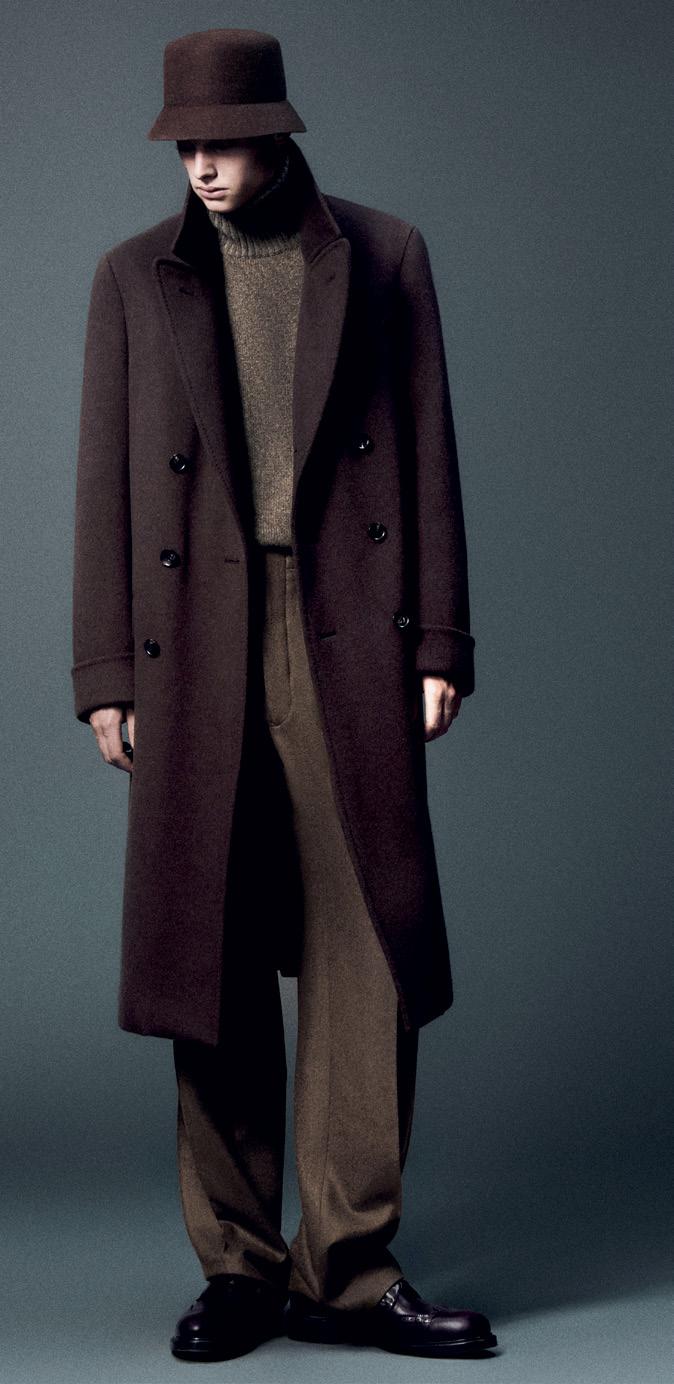
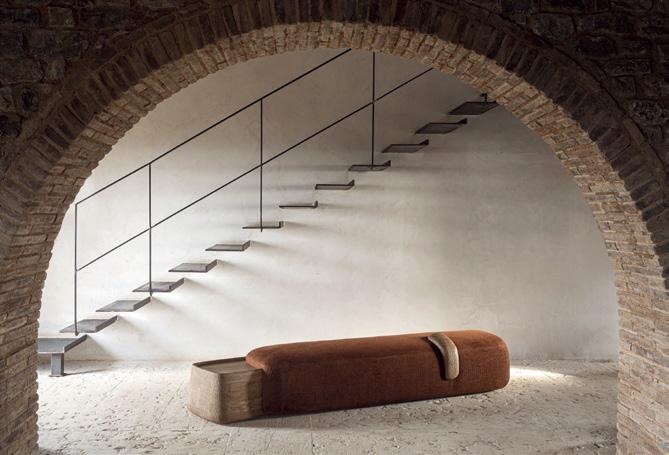
Loro Piana’s superlative art of excellence and sophistication is combined with state-of-the-art equipment to guarantee an ever more highperformance luxury product that nods to the timeless appeal of“old money”style
“I am a doer.In other words: nomatterhowamazingafabric maylook,ifitservesnopurpose, I am not interested”.
PierluigiLoroPiana
Whatshouldaluxurycompanydo?
Commit every single day,to have the chance to do what itlikes,regardlessofthecurrenttrend.
This is exactly the principle that has always inspired Loro Piana.The history of this commitment starts way back, precisely from the early nineteenth century in Trivero,Tërvé in the Piedmont dialect,where the Loro Piana family began their business as wool merchants. Anotherkeytimeperiod:thesecondhalfofthecentury, when the family moved to Valsesia, giving rise to the Fratelli Lora e Compagnia woolen mill, which was followed by the Quarona di Zignone & C woolen mill at thebeginningofthetwentiethcentury.
In the post-World War II period, Pietro’s grandson, Franco Loro Piana, implemented his agenda, turning the family business into a widely known brand in the global high fashion industry.A win-win strategy that in the1990swascontinuedbyhischildren,whodiversified the production: from clothing to textile accessories,
from footwear to the home sector,distributed through a network of company-owned stores located in the world’s most exclusive shopping avenues. A history over 100 years long,then,that continues to renew itself, also thanks to the new strategies introduced by LVHM when it acquired 85% of the group, while at the same time researching and championing the great heritage of craftsmanship of its Maisons,even the most secluded ones,which since 2011 have been visible to the general public through“Les Journées Particulières”: an original initiative that honors the Maisons’ unique heritage of craft and savoir-faire, showcasing those who work with magic and care for quality through patience and respect for the raw material, something that should always be an overriding principle for those working in luxury goods.A distinctive style that has been seriously pursued, right from the beginning, even when other kinds of trends prevailed,relying only on the cleverness of expert hands and the best tactile and unique fibers, increasinglyreminiscentofthesoftnessofclouds.
But Loro Piana’s business is not only linked to the elements mentioned above but also to the relationship with nature, a key element of luxury, which takes on an experience-based nature and a style synonymous with fun en plein air, as in next winter’s collections, which explore the hiking and outdoor world. In these collections, Loro Piana’s savoir-faire clearly shows through in the use of technical fabrics combined with finesilksandcashmere,allexpertlycraftedtowithstand the elements.Plus,another high-performance element is the introduction of an innovative membrane containing graphene, engineered by Loro Piana, featuring outstanding conductive properties and capable of evenly distributing body heat to ensure a feeling of utmost comfort. This is a reflection of the importance of technological innovation in developing one’sluxuryregardlessofthemarketandfashiontrends, creatingacompleterangeofproductsthatallowsoneto own garments that last a long time beyond the current hype. Contemporary men or women are interested in a wardrobe made up of basic, top-quality clothing to be worn every day, suggesting a more sophisticated understanding of what is synonymous with elegance and distinction.If one wants to find a lesson behind this stylethenwecanperhapsborrowafamousphrasefrom VivienneWestwood:“Buyless,choosewell,makeitlast”. This can be found in Loro Piana’s unmistakable taste for tradition and modernity also in DUO, its timeless line of costume jewelry, which represents the harmonious blend of metal and leather in chain necklaces,earrings and bracelets.The interplay of metal,satin and leather delivers an unparalleled sensory experience, creating that stunning contrast between softness and strength. The most iconic pieces include brass brooches in the

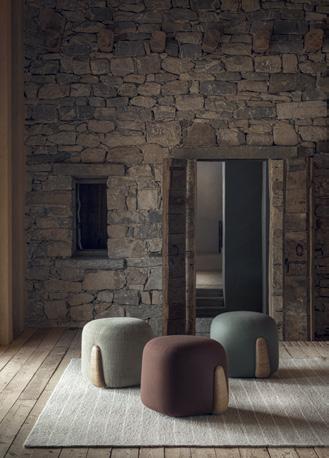
shapeofathistleflower,madeofSunGoldandAntique Silver,inspired by the heritage and historical symbol of the Maison, which has been featured in its logo since 1951, but also by the recollection of Sergio Loro Piana putting jackets in his closet with the collar turned up and lapels closed and pinned,to retain the softness of the fold.In the competitive environment of today’s fastchangingglobalmarket,theabilityofthecompanybased in Trivero has made and still makes today Loro Piana a successfulbrand,preciselybecauseitistheembodiment of a culture that is avant-garde, visionary but at the same time down-to-earth and in which tradition and humancapitalarethemostvaluedelements,leadingus to interact with a type of quiet luxury that opens the locksofanxious,pre-establishedcagesofstyleasanend in itself.A fashion that is concrete,has personality and identity,createsemotionsandhasnoboundaries.Andis constantlyever-changing.







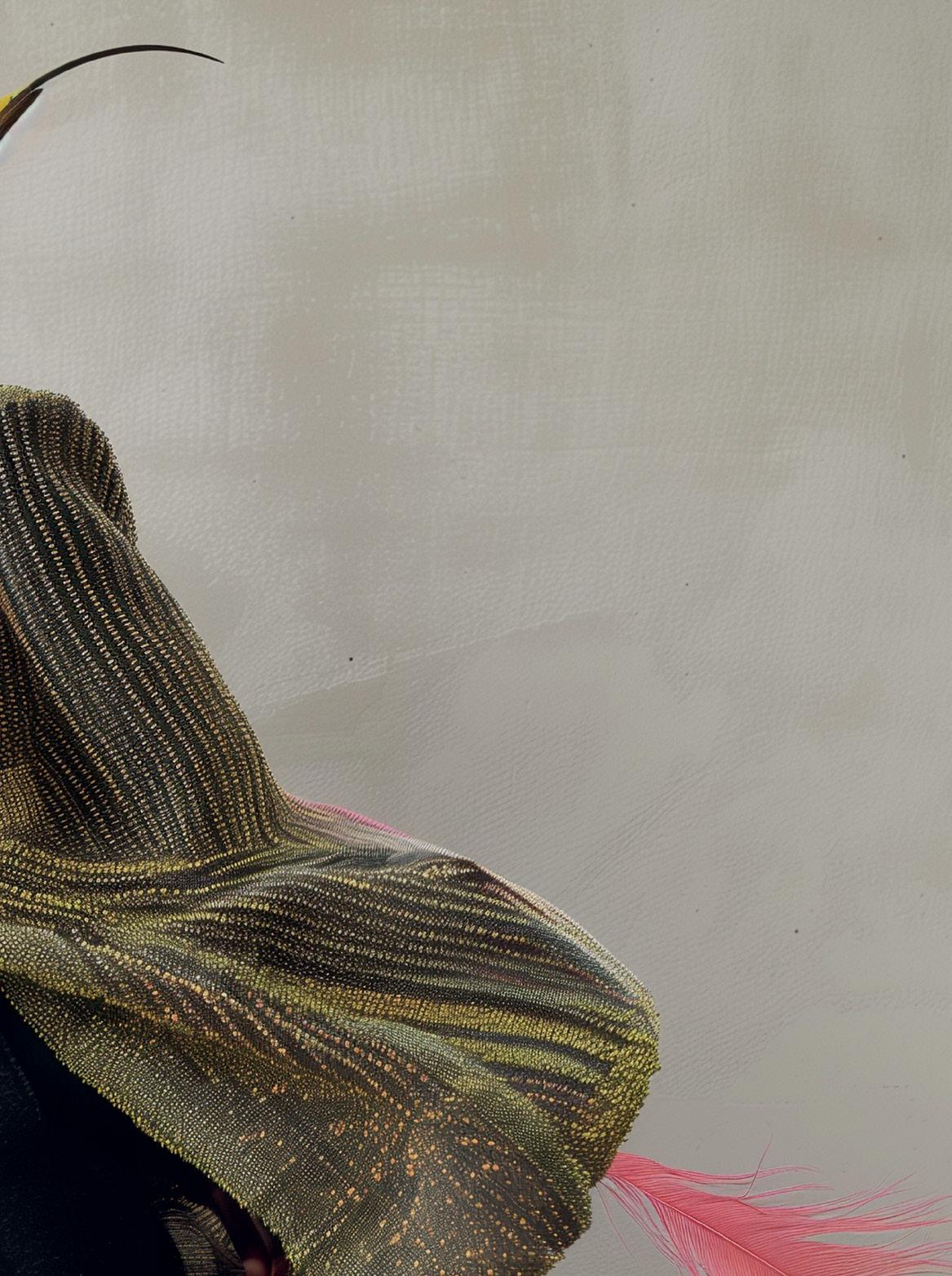
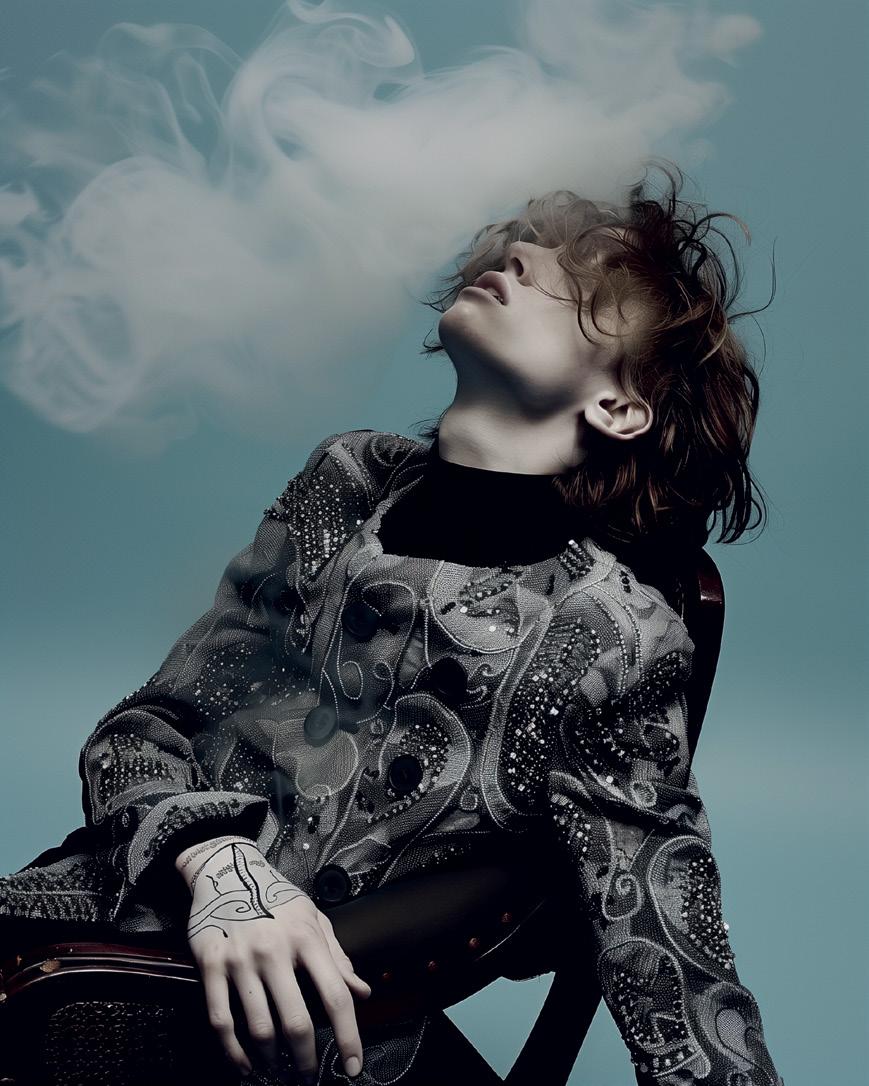

by Alberto Corrado
ABBIAMO RIFLETTUTO SUL SIGNIFICATO, LETTERALE E FIGURATO, DELLE COLLEZIONI
DI ALESSANDRO DELL’ACQUA. PER NOI
DI HUESERS RAPPRESENTANO FLESSIBILITÀ,
EVOLUZIONE E CAMBIAMENTO. COGLIAMO
QUESTA OCCASIONE PER ESPLORARE
IL SUO MONDO E LA SUA DOPPIA NATURA, COME RAFFINATO ESEMPIO
DI RAZIONALISMO ITALIANO
E STILE INTERNAZIONALE
«Oggi con una collezione dobbiamo rispondere a una moltitudine di esigenze e stili di vita di donne di età e Paesi anche molto distanti. È necessario calibrare ogni dettaglio e prendere in considerazione diverse restrizioni commerciali,ma continuo a usare molto il mio istinto».
Alessandro Dell’Acqua

Alessandro Dell’Acqua è un rivoluzionario, non convenzionale. O meglio, il suo aspetto può suggerire quest’idea: lo sguardo intenso e viso duro da bel tenebroso, il temperamento impetuoso; ma l’appetito quasi imperiale per la stravaganza che lo contraddistingue come uno degli edonisti di maggior successo del mondo della moda dice anche altro. Dopotutto Alessandro Dell’Acqua è sinonimo di uno stile di vita e di varie rivoluzioni nel guardaroba sia femminile che maschile, diventando un outsider che ha cambiato definitivamente la storia della moda degli anni 2000, cercando di infrangere le regole, e creando un nuovo linguaggio. Come i grandi designer, si discosta dal mainstream del settore, per coltivare una prospettiva personale che, unita a un’incrollabile temerarietà, si insinua nel suo lavoro, per emergere come corrente sovversiva. Il carattere non convenzionale di Alessandro Dell’Acqua è filtrato dal suo umorismo, dalla sua generosità, dall’entusiasmo con cui abbraccia la fisicità e la sessualità. Si diverte a mettere alla pro -
va i limiti del bon ton e così facendo rivela lo snobismo dei critici. Alessandro Dell’Acqua provoca, celebrando la vita.
Ama la cultura in tutte le sue sfaccettature, essendosi diplomato presso l’Accademia di Belle Arti di Napoli. Si nutre di rigoroso classicismo, ma anche di elaborati eccessi sensuali che si combinano attraverso l’utilizzo di tessuti preziosi.
Il suo ostinato amore per il cinema, passione coltivata fin dall’adolescenza, quando andava con il nonno a vedere i film e ammirava le dive italiane e non solo sul grande schermo, lo ha portato a corteggiare figure intellettuali o artisti in grado di esprimersi in un gran numero di campi del sapere, o dell’arte, e tutti ricambiano il suo affetto, da Vanessa Beecroft ai fotografi con cui lavora, come Juergen Teller e Helmut Newton, dalle top model Eva Herzigova e l’italiana Mariacarla Boscono a Kylie Jenner. La sua arma segreta è la padronanza dell’arte della moda, che simboleggia la seduzione, l’allure: nozioni interpretabili in vari modi, espresse nelle diverse tecniche. Possono ri-
splendere in un abito da sera, come in un tailleur dal taglio impeccabile, o in una giacca di pelle, tutti recanti l’etichetta N°21, simbolo cabalistico, che simboleggia la creatività come espressione e sviluppo dell’intelletto. Tutte nozioni che rappresentano l’ideologia di Alessandro Dell’Acqua: non tanto i codici visivi della Maison, bensì il suo spirito, il ragionamento, le convinzioni che vi si nascondono dietro. Proprio questa sua sensibilità è l’elemento vitale che permette di comprendere l’attrazione esercitata dallo stilista ieri, oggi e domani. Non si tratta di una semplice silhouette, ma di un insieme di ideali originariamente incarnati in quella determinata silhouette, e che possono facilmente esserne estratti. Questa identità si ritrova nei sinuosi abiti, nella cangiante fluidità dei suoi tagli che alleggerisce la struttura a uso della contemporaneità, e quella fusione tra femminilità e femminismo operata nella mescolanza tra sartoria e sportswear. Una sensibilità talmente caratteristica della Maison che la si ritrova perfino nelle collezioni da uomo, per trarne un guardaroba maschile che utilizza linee leggere, tessuti preziosi, e quel potere dell’eterno femminino. Queste indicazioni offrono uno scorcio della dimensione più intima di Alessandro Dell’Acqua, dei suoi interessi, dei suoi pensieri, del suo atteggiamento verso la vita. Abbiamo incontrato il designer nel suo headquarter milanese, riguardo a ciò che lo spinge a creare questi lavori.
Guardando le sue collezioni e la loro immagine visiva nelle campagne, ho subito cercato di immaginare l’atto della loro creazione, lei lo fa sembrare il risultato di un processo intuitivo e meditativo. Ho indovinato? È come


creare una bolla in cui rifugiarsi?
Più che un processo meditativo il mio è un processo intuitivo. Mi piace definire N°21 l’errore perfetto: attraverso associazioni e colpi di scena inaspettati, mi piace sempre dare una visione contemporanea. L’attenzione ai dettagli, l’artigianalità e i tessuti di estrema qualità che contraddistinguono N°21 come un marchio italiano e che, allo stesso tempo, sono stati fondamentali per il suo successo.
Le sue collezioni o collaborazioni sono piuttosto distinte e provengono da luoghi diversi; si sovrappongono mai? Si influenzano?
Ogni volta che mi approccio a una nuova collezione o collaborazione parto dal DNA del brand per poi iniziare un mio percorso personale che ‘rivitalizza’ i suoi codici, rendendoli attuali e ricreando un equilibrio perfetto. È importante mantenere uno stile e un’identità unici. Le persone oggi devono essere in grado di riconoscere il tuo vestito da una semplice immagine di Instagram.
Immagino che la gente le faccia molte domande sul suo momento creativo: qual è la cosa più strana che le è stata detta riguardo alle sue collezioni o alle cose che magari l’hanno sorpresa?
Onestamente mi ritengo fortunato e sono sempre stato molto sostenuto sia dagli addetti ai lavori che dal consumatore finale. Mi hanno a volte sorpreso recensioni molto violente, che allo stesso tempo mi hanno però insegnato molto.
Da dove viene questo interesse per le muse e il cinema?
La mia passione per il cinema, soprattutto per il cinema neorealista italiano, nasce in giovane età. Mio nonno, a Napoli, mi portava al cinema ogni pomeriggio. In adolescenza ho iniziato a sviluppare la passione per i vestiti che indossavano le dive italiane e non solo. Adrian, il costumista delle dive hollywoodiane, mi ha avvicinato al mestiere dello stilista.

Più uno guarda le sue creazioni, più uno si immerge in esse e talvolta si è in grado di riconoscere qualcosa di familiare della sua vita trascorsa fin qui. Poi talvolta c’è questa astrazione, che mi fa quasi dubitare che quello che vedo sia ciò che penso di vedere. Quindi i vestiti e gli accessori giocano scherzi interessanti all’osservatore e non so se era sua intenzione oppure è semplicemente il risultato di una creazione attenta al dualismo tra estetica e materiale?
C’è da sempre qualcosa del mio trascorso familiare nelle mie creazioni. Sono cresciuto in una famiglia di donne, mia madre, le zie e mia sorella. All’inizio della mia carriera gli indumenti intimi neri e color carne (reggiseni, mutande e sottovesti) indossati in casa nelle torride estati, mi hanno molto influenzato e sono tutt’oggi parte del mio DNA stilistico. La parte più astratta è la visione più contemporanea e meno nostalgica. Il dualismo è sempre presente nelle mie collezioni e prende sempre forme diverse sia nell’estetica che nella parte più materica.
We reflected on the literal and figurative meanings of Alessandro Dell’Acqua’s collections.For us at Huesers,they represent flexibility,evolution and change.Let us take this opportunity to explore his world and dual nature as a fine example of Italian rationalism and international style
“Todaywithacollectionwehave torespondtoamultitudeofneeds andlifestylesofwomenofoftenvery differentagesandcountries.Youneed tocalibrateeverydetailandconsider different business restrictions, butIstillusemyinstinctsalot”.
AlessandroDell’Acqua
Alessandro Dell’Acqua is a revolutionary; he is unconventional.Or rather,his appearance may suggest this: the intense gaze and hard face of the handsome mysterious, the impetuous temperament; but the almost imperial appetite for extravagance that marks him out as one of the fashion world’s most successful hedonists also says more. After all, Alessandro Dell’Acqua is synonymous with a lifestyle and various revolutions in both women’s and men’s wardrobes, becoming an outsider who permanently changed the fashion history of the 2000s, trying to break the rules and creating a new language. Like the great designers, he deviates from the mainstream of the field to cultivate a personal perspective that,combined with an unwavering temerity, creeps into his work to emerge as a subversive current.Alessandro Dell’Acqua’s unconventional character is filtered through his humor, his generosity, and the enthusiasm with which he embraces physicality and sexuality. He enjoys testing the limits of the bon ton and in doing so reveals the snobberyofcritics.AlessandroDell’Acquaisprovocative, whilecelebratinglife.
He loves culture in all its facets,having graduated from the Academy of Fine Arts in Naples.He thrives on strict classicism, but also on elaborate sensual excesses that arecombinedthroughtheuseofpreciousfabrics.
His stubborn love for cinema,a passion cultivated since histeenageyearswhenhewouldgowithhisgrandfather
to see movies and admire Italian divas and others on the big screen,has led him to court intellectual figures or artists capable of expressing themselves in a large number of fields of knowledge or art, and everyone reciprocates his affection,from Vanessa Beecroft to the photographersheworkswithsuchasJuergenTellerand Helmut Newton,from supermodels Eva Herzigova and ItalianMariacarlaBosconotoKylieJenner.
His secret weapon is the mastery of the art of fashion, symbolizing seduction, allure: notions that can be interpreted in various ways, expressed in the different techniques. They can shine in an evening gown, in an impeccablycutsuit,orinaleatherjacket,allbearingthe N°21 label,a Kabbalistic symbol symbolizing creativity asanexpressionanddevelopmentoftheintellect.
These are all notions that represent Alessandro Dell’Acqua’s ideology: not so much the visual codes of the Maison,but his spirit,reasoning,and beliefs behind them.Itispreciselythissensitivityofhisthatisthevital element in understanding the attraction exerted by the designeryesterday,todayandtomorrow.Itisnotsimplya silhouette,butasetofidealsoriginallyembodiedinthat particular silhouette,and which can easily be extracted from it. This identity can be found in the sinuous dresses,intheiridescentfluidityofhiscutsthatlightens the structure for contemporary use,and in that fusion of femininity and feminism worked into the mixture of tailoringandsportswear.Asensitivitysocharacteristicof theMaisonthatitisevenfoundinthemen’scollections, tocreateamen’swardrobethatuseslightlines,precious fabrics, and that power of the eternal feminine. These pointers offer a glimpse into Alessandro Dell’Acqua’s innermost dimension, his interests, his thoughts, and his attitude towards life. We met with the designer at hisMilanheadquarterstotalkaboutwhatdriveshimto create these works.
Looking at your collections and their visual image in the campaigns, I immediately tried to imagine the act of how they were created, you make it seem like the result of an intuitive and meditative process.DidIguessright?Isitlikecreatingabubble totakerefuge?
More than a meditative process, mine is an intuitive process.I like to call N°21 the perfect mistake: through unexpected associations and twists,I always like to give a contemporary view.Attention to detail,craftsmanship,
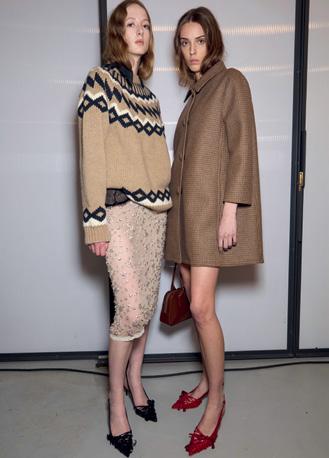
andextremelyhighqualityfabricsthatdistinguishN°21 asanItalianbrandand,atthesametime,havebeenkey to its success.
Your collections or collaborations are quite distinct and come from different places; do they ever overlap?Dotheyinfluenceeachother?
WheneverIapproachanewcollectionorcollaborationI startfromtheDNAofthebrandandthenbeginmyown personaljourneythat‘revitalizes’itscodes,makingthem currentandrecreatingaperfectbalance.Itisimportant to maintain a unique style and identity. People today need to be able to recognize your outfit from a simple Instagramimage.
I imagine people ask you a lot of questions about yourcreativetime:what’sthestrangestthingyou’ve been told about your collections or things that maybesurprisedyou?
Honestly, I consider myself fortunate and have always been supported by both industry insiders and the end consumer. I was sometimes surprised by very violent reviews,butatthesametimetheytaughtmealot.
Where does this interest in muses and cinema come from?
My passion for cinema, especially Italian neorealist cinema,beganatayoungage.MygrandfatherinNaples used to take me to the movies every afternoon.During my teens I began to develop a passion for the clothes that Italian divas and others wore.Adrian,the costume designer of Hollywood divas,introduced me to the craft offashiondesign.
Themoreonelooksatyourcreations,themoreone becomes immersed in them and sometimes one is able to recognize something familiar from your life so far.Then sometimes there is this abstraction, which almost makes me doubt that what I see is what I think I see. So the clothes and accessories play interesting tricks on the observer, and I don’t know if that was your intention or is it simply the result of a creation that is attentive to the dualism between aesthetics and material?
There has always been something of my family background in my creations. I grew up in a family of women with my mother, aunts and sister. Early in my career, black and flesh-colored undergarments (bras, panties, and petticoats) worn at home in scorching summers heavily influenced me and are still part of my stylistic DNA today. The more abstract part is the more contemporary and less nostalgic vision. Dualism is always present in my collections and always takes different forms both in aesthetics and in the more materialpart.
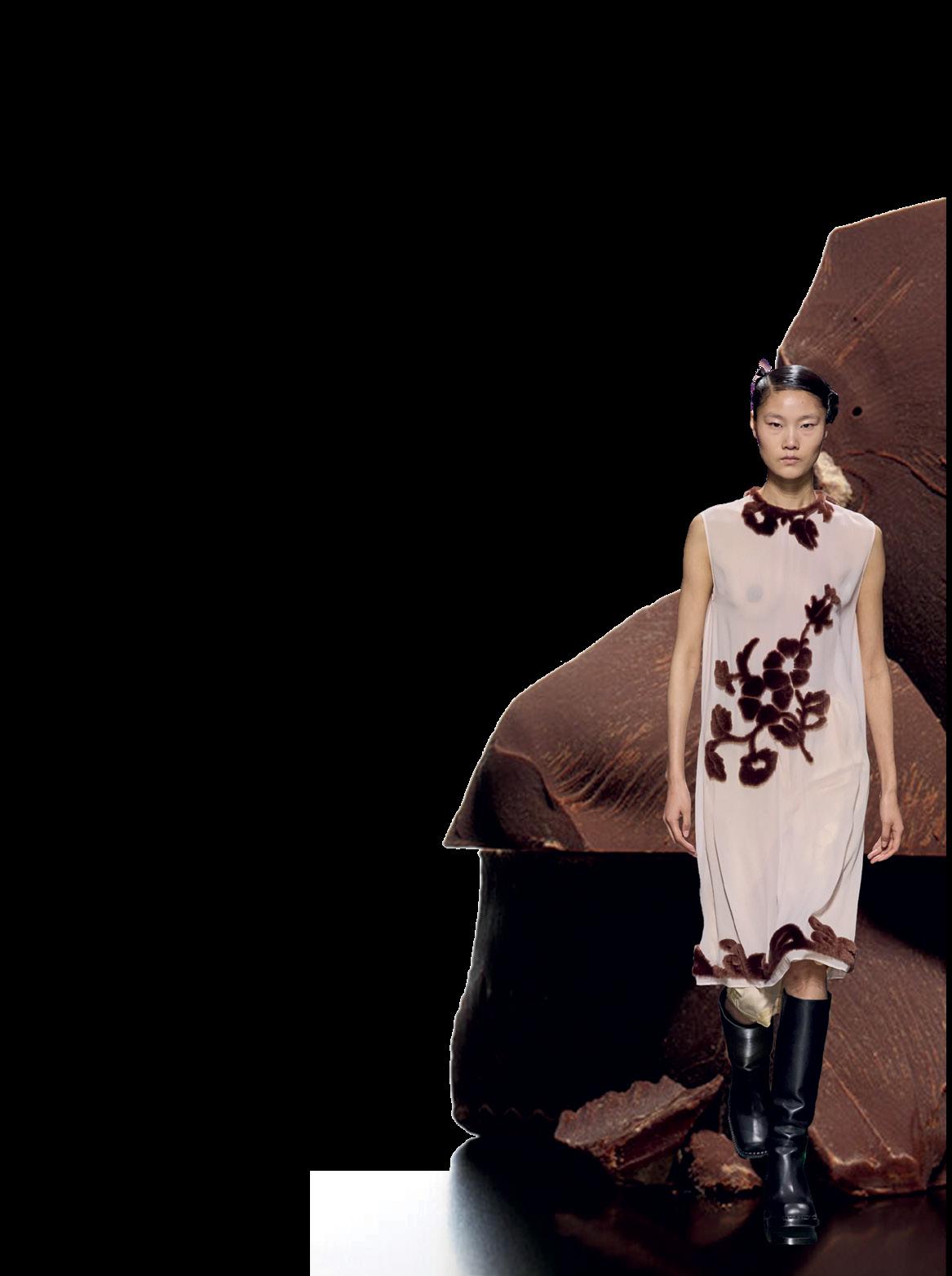
by Michele Romano
Una nuance calda e avvolgente pronta a cullarci, con tutte le sue sfumature, nei mesi più freddi dell’anno. Scura e decisa, ricorda le gamme del cacao amaro appena tostato, da indossare in total look o abbinata a colori neutri. Una tendenza di stagione considerata una valida alternativa al nero, simbolo di una nuova eleganza che spazia dal giorno fino ad abbracciare la sera.
A warm and enveloping shade ready to lull us with all its hues into the coldest months of the year.Dark and bold,reminiscent of the ranges of freshly roasted bitter cocoa,to be worn as a full look or paired with neutral colors.A seasonal trend considered a viable alternative to black,symbolizing a new elegance that ranges from daytime to embracing evening.
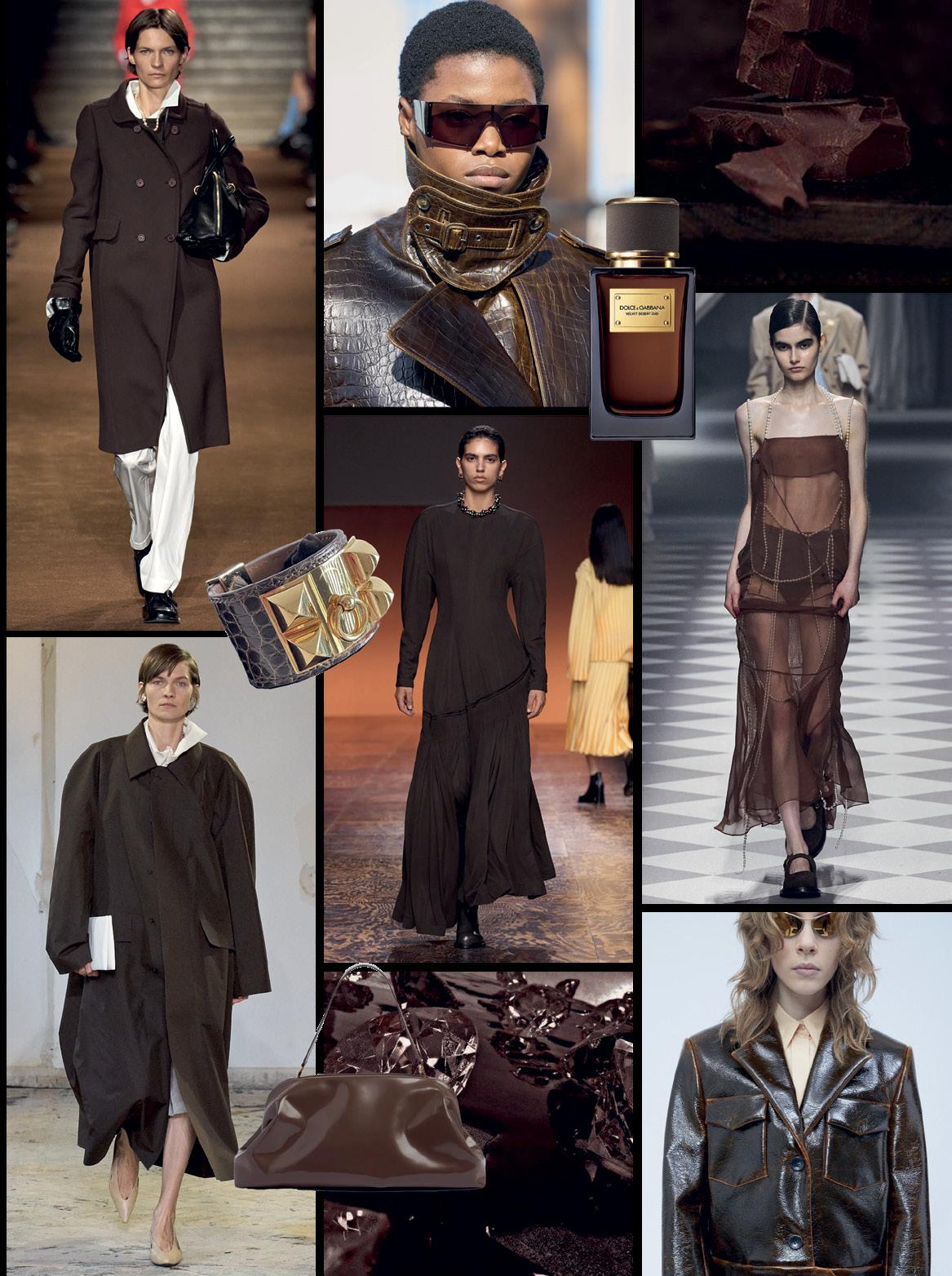
by Michele Romano
Nel prossimo autunno-inverno assisteremo al grande ritorno del colore green, complice e alleato di un wardrobe dove l’estetica e l’artigianalità rappresenteranno una combo vincente. Una sfumatura di colore ereditata dal passato, precisa e rassicurante, che unisce due mondi, quello maschile e quello femminile, facendoli dialogare in una disinvolta armonia.
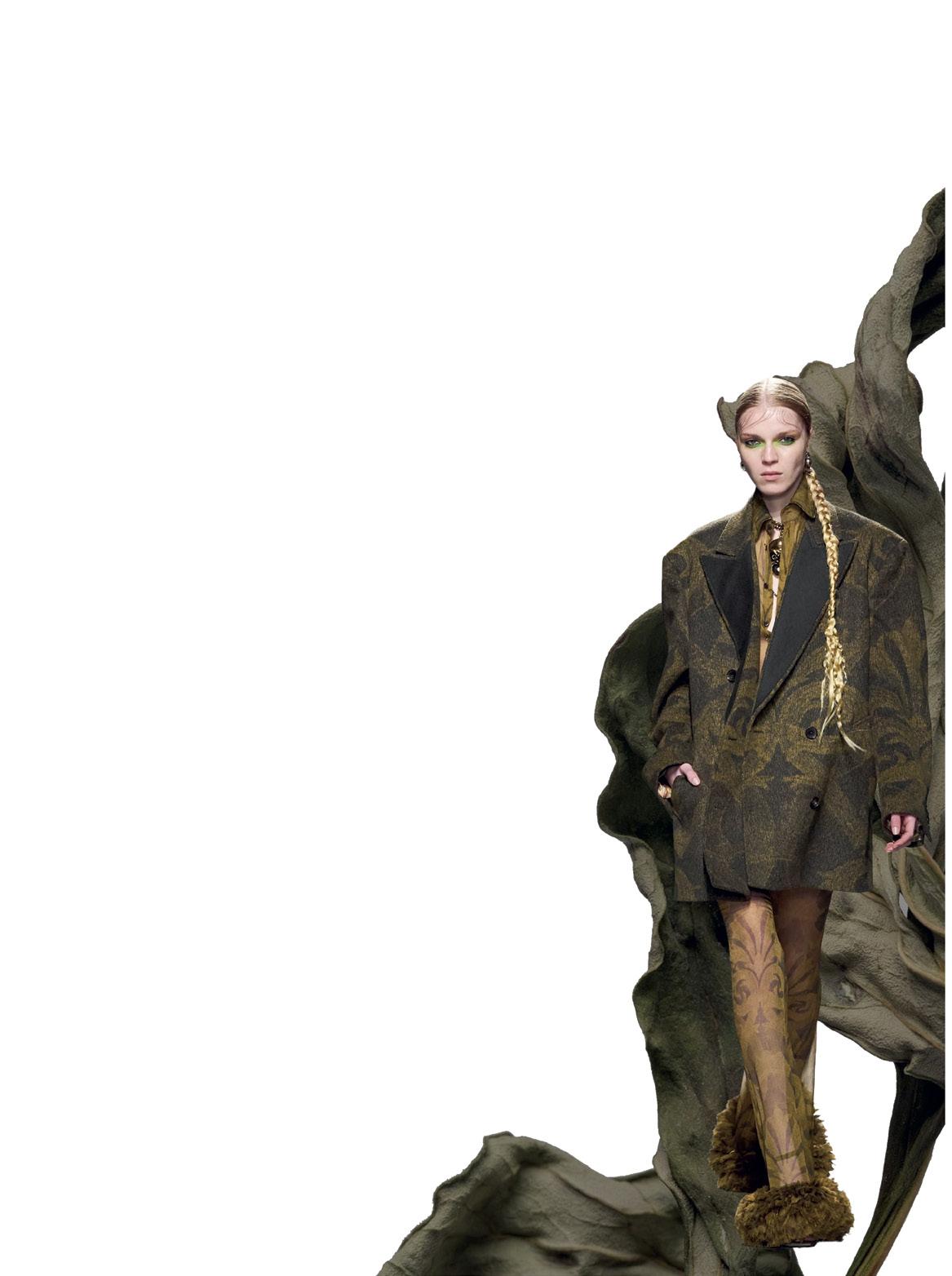
Next fall-winter we will witness the big comeback of the color green,accomplice and ally of a wardrobe where aesthetics and craftsmanship will represent a winning combo.A shade of color inherited from the past, precise and reassuring,uniting two worlds,male and female, making them intertwine in a casual harmony.
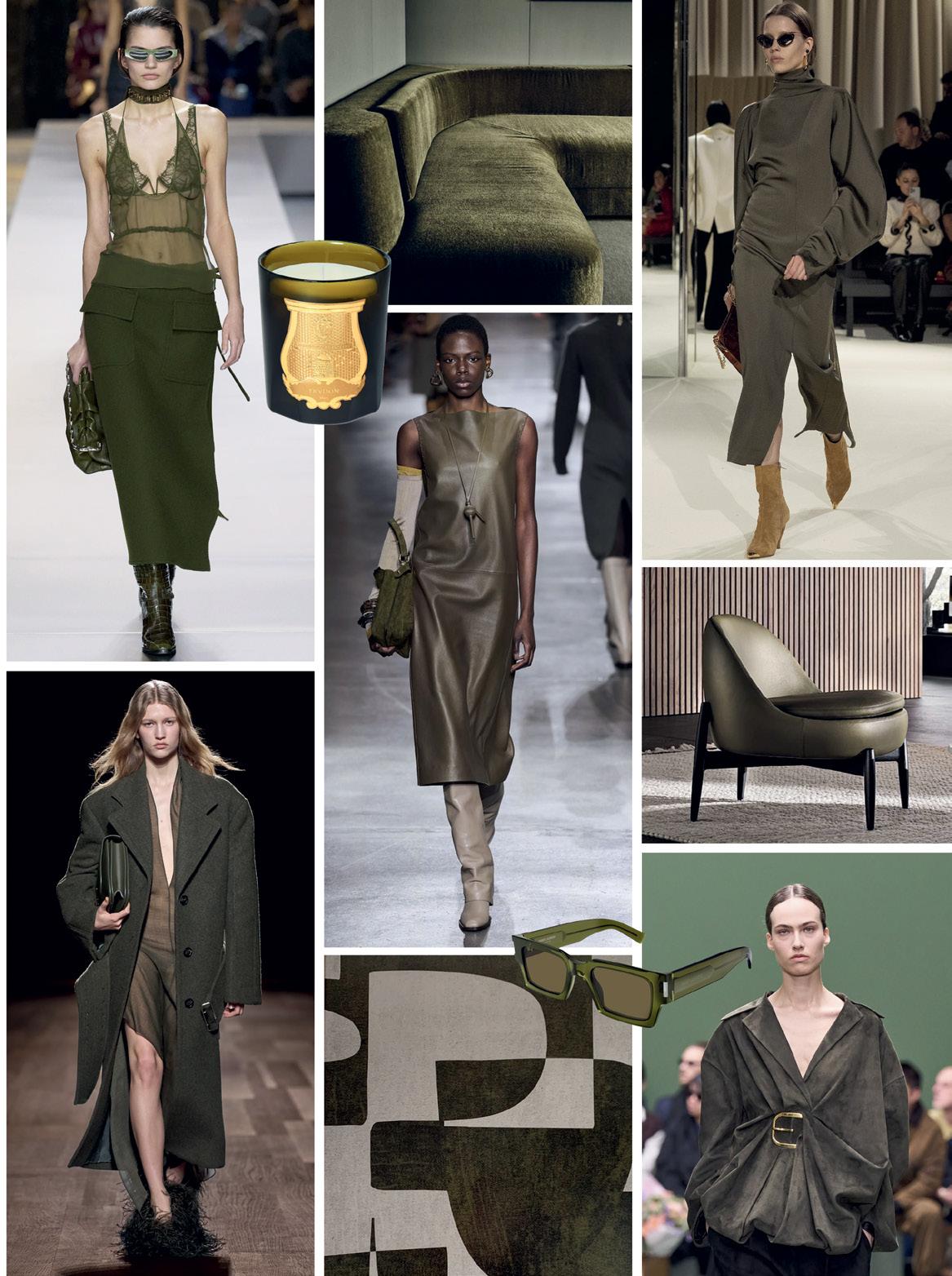

by Michele Romano
Voglia di colori bright, ma anche di semplicità e pulizia. Un desiderio di integrare tonalità protagoniste abbinate tra loro oppure completate con nuance più classiche, come il nero e il grigio. Una chiara dichiarazione contro la monotonia della vita quotidiana e un esempio perfetto di come l’eleganza moderna sperimenti nuovi expression codes per un outfit urbano unexpected.
A desire for bright colors,but with simplicity and cleanliness.A willingness to integrate leading shades combined with each other or complemented with more classic shades, such as black and gray.A clear statement against the monotony of everyday life and a perfect example of how modern elegance experiments with new expression codes for unexpected urban ensembles.

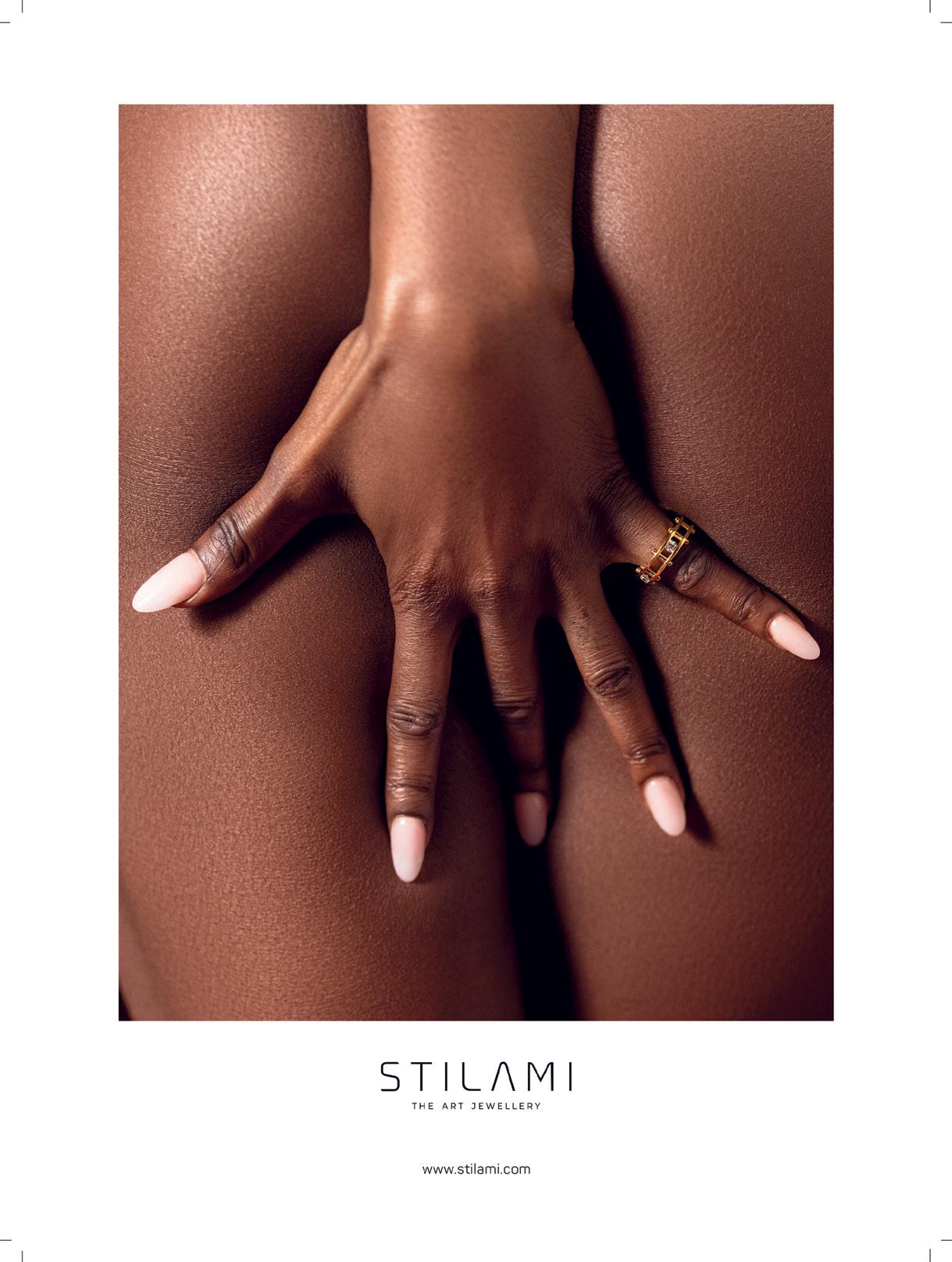

by Davide Passoni


Buona parte delle storie di successo dei grandi marchi di orologeria inizia da un nome, da un cognome, da un luogo. Quella di Panerai non fa eccezione. La differenza con le storie più note, però, sta proprio nel dove. Niente Svizzera ma Italia, Toscana. Niente Neuchâtel o La Chaux-deFonds ma Firenze. Più precisamente Ponte alle Grazie. È lì che nel 1860 Giovanni Panerai aprì un piccolo negozio di orologi, il primo in città, che vendeva segnatempo da tasca importati dalla Svizzera. Importati non assemblati, un dettaglio che obbligò Giovanni a investire in un laboratorio per imparare i trucchi del mestiere. Come fornitori delle migliori marche svizzere, i discendenti di Giovanni, Guido e Giuseppe, furono contattati nei primi decenni del ‘900 dalla Regia Marina italiana per avere orologi da tasca e cronografi di precisione da assegnare ai propri ufficiali. All’inizio della Grande Guerra, Panerai produsse così per la Regia Marina alcuni sofisticati strumenti di precisione, molti dei quali potevano contare sull’impiego del Radiomir, una sostanza radioattiva luminescente al buio, brevettata dal marchio nel 1916. Costituita da una miscela di bromuro di radio e solfuro di zinco, la sua luminescenza superlativa le consentiva di brillare nelle acque più buie e fu impiegata in strumenti come i timer illuminanti per i detonatori, i profondimetri da polso, le bussole da polso. Perché dunque non negli orologi? Fu questa, infatti, la richiesta che a Panerai arrivò nel 1935 ancora dalla Regia Marina italiana. Orologi con specifiche ben definite:
quadrante di grandi dimensioni e leggibilità perfetta anche nelle condizioni più avverse, comprese le acque fangose dei porti. Nel 1936, 10 prototipi dell’orologio Panerai Radiomir furono assegnati ai commando degli uomini rana, diventando i primi orologi militari subacquei professionali della storia. E non tutti sanno che il movimento e la cassa furono affidati da Panerai a Rolex: in quanto inventore del primo orologio civile impermeabile nel 1926, Rolex aveva il knowhow tecnologico giusto. I Radiomir avevano in sé i tratti che ancora oggi definiscono gli orologi Panerai: 47 mm di diametro, cassa a cuscino, corona e fondello avvitati, anse saldate, quadranti con un mix di numeri arabi e romani luminescenti. Negli anni successivi il quadrante fu semplificato con quattro grandi numeri arabi a ore 3, 6, 9 e 12 e una struttura a sandwich composta da due piastre sovrapposte; il quadrante superiore presentava le cifre e gli indici traforati, permettendo allo strato di pasta di radio sul quadrante inferiore di illuminarsi attraverso i fori. Nel 1949, i documentati effetti tossici del radio spinsero all’uso del trizio, meno tossico e brevettato con il marchio Luminor. Il Panerai Luminor del 1950, altro subacqueo professionale, aveva un quadrante e una cassa molto simili a quelle del Radiomir; la grande differenza stava nel ponte di protezione della corona con una leva, brevettato, che aumentava le proprietà di impermeabilità dell’orologio e che ancora oggi distingue i Luminor. Nel secondo dopoguerra, Panerai continuò a fornire orologi
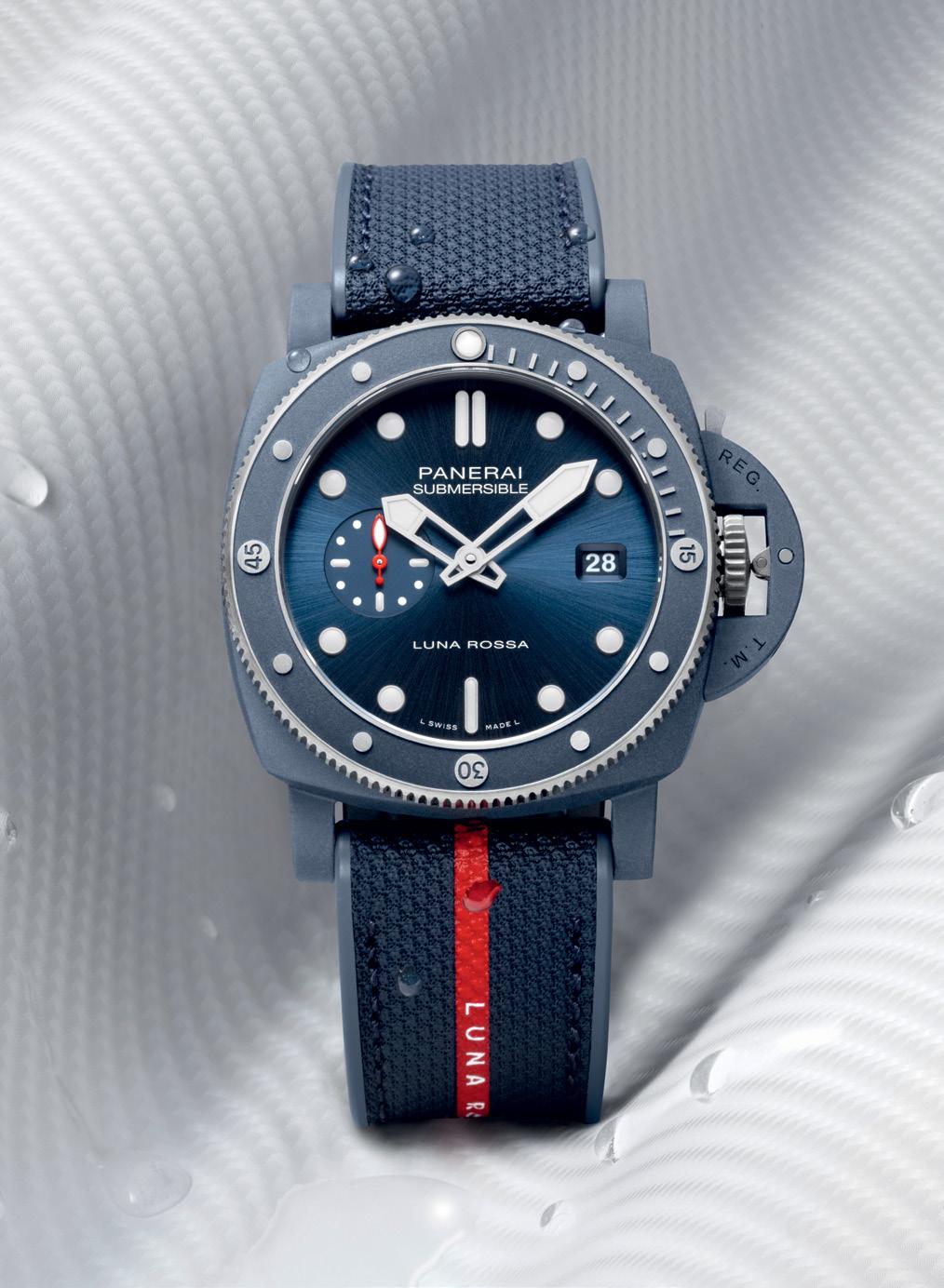
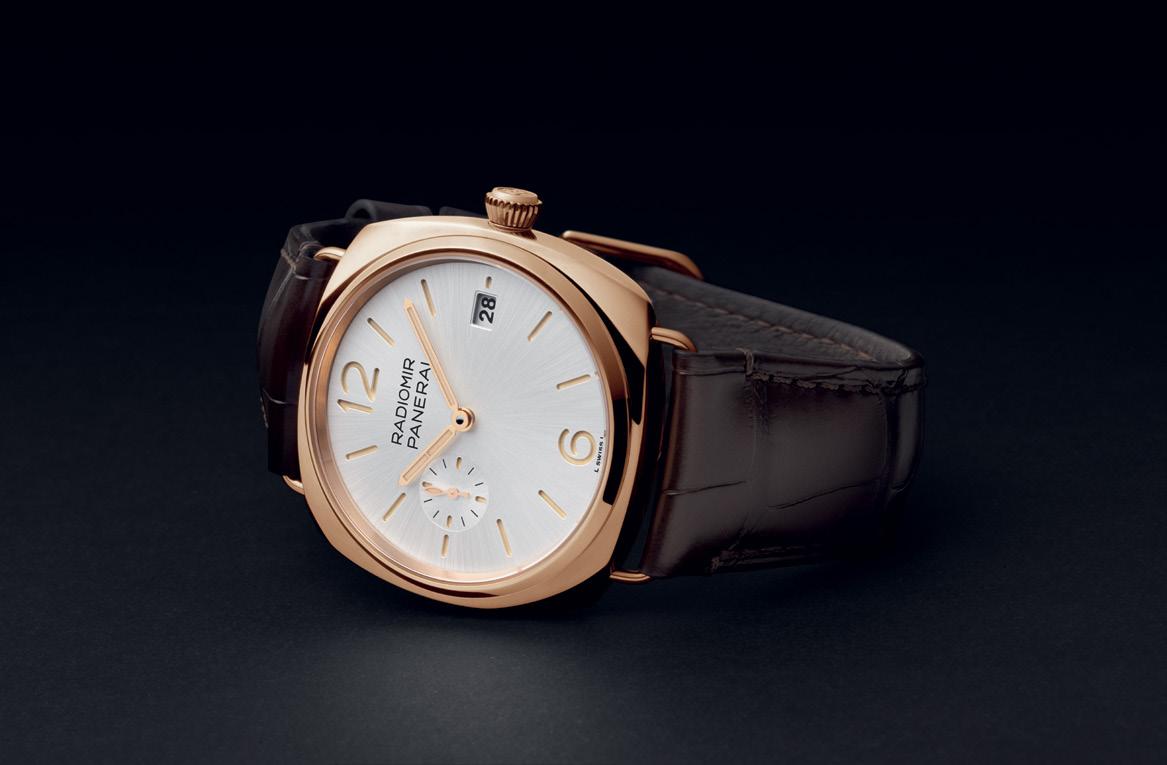
a diverse Forze Armate ma nel 1972 l’ultimo discendente della famiglia, Giuseppe Panerai, morì senza lasciare eredi. Dino Zei, colonnello della Marina in pensione che era stato incaricato di procurare strumenti e armamenti per le operazioni della Marina stessa, rilevò l’azienda, le cambiò il nome in Officine Panerai e continuò a fornire la Marina Militare. Nel 1997, Officine Panerai fu acquisita dal Gruppo Richemont (allora Gruppo Vendôme) e l’intero ramo di produzione militare dell’azienda fu chiuso. Un anno dopo fu presentata al pubblico la prima collezione di orologi Panerai, dallo stile militare, grandi e funzionali. Furono un successo che continua ancora oggi e vive in quattro collezioni base, due delle quali fortemente radicate nella storia del brand: Radiomir, Luminor, Luminor Due e Submersible. Come abbiamo visto, la più classica delle collezioni è la Radiomir. Anche nelle referenze attuali, ha mantenuto l’estetica che la rende inconfondibile non solo nel mondo dell’orologeria ma anche all’interno dell’assortimento stesso di Panerai. Parliamo principalmente del quadrante a sandwich, delle anse a filo e della cassa a cuscino. Quest’ultima in alcune referenze mantiene le dimensioni piuttosto generose delle origini (47 mm di diametro), ma non mancano misure più portabili come i 45 mm. Negli ultimi anni, per rispondere a una ri-
chiesta sempre crescente di orologi meno massicci e più indossabili da entrambi i sessi, è stata introdotta la variante Quaranta, il cui nome indica il nuovo millimetraggio della cassa. Nella collezione trovano spazio complicazioni di alta orologeria come il tourbillon, il calendario annuale o la ripetizione minuti, ma il Radiomir vince soprattutto per alcuni movimenti divenuti mitici per Panerai come l’8 giorni brevettato o il 3 giorni. Anche la collezione Luminor attuale attinge a piene mani dalla tradizione iniziata nel 1950 con il capostipite di questo modello. Ciò che la differenzia principalmente dalla Radiomir sono le anse (integrate e non a filo e saldate) e soprattutto il ponte proteggi corona, divenuto ormai un simbolo del brand. Il Luminor ha dimensioni importanti, principalmente 44 mm, ma non mancano referenze che si spingono fino ai classici 47 mm. Così come, anche qui, è presente la gamma Quaranta per i polsi più sottili. Se dal punto di vista delle complicazioni i Luminor lasciano spazio a soluzioni come il cronografo, il tourbillon, il calendario perpetuo e l’equazione del tempo, ciò che caratterizza questa collezione è principalmente il fatto di essere per Panerai una vera “palestra” in cui utilizzare materiali d’avanguardia per le casse. Carbotech, Goldtech, Platinumtech sono materiali frutto della ricerca di anni da parte di quello
che a Neuchâtel, dove ha sede la manifattura, si chiama “Laboratorio di idee”. Materiali innovativi pensati non solo per rendere preziosi gli orologi, ma soprattutto per renderli più performanti. A proposito di performance, la partnership che ormai da alcuni anni lega Panerai a Luna Rossa ha portato nella collezione Luminor allo sviluppo di numerose referenze Luna Rossa, che si fanno portabandiera dei migliori ingegni del Made in Italy in termini di estetica, meccanica e, appunto, materiali. Luminor Due è invece di fatto una estensione di gamma della collezione Luminor pensata... al ribasso. Non certo in termini di qualità, quanto di dimensioni. È infatti la collezione più femminile nel portafoglio di Panerai, che punta a intercettare i gusti di un target che non è mai stato particolarmente nei radar del brand. Che cosa la rende appetibile al gentil sesso? Principalmente la dimensione della cassa, poiché buona parte delle referenze misura 38 mm, con alcune eccezioni che salgono fino a 42. Poi l’utilizzo di materiali eleganti quali la madreperla per i quadranti, l’oro o il Goldtech per casse e bracciali. Infine la scelta di introdurre complicazioni poetiche come quella delle fasi lunari o tonalità pastello su quadranti e cinturini, che contrastano con la tradizione dei Panerai “duri e puri” fatta di colori decisi come marrone, blu, nero, antracite o verde milita-
re. Una scelta coraggiosa nella quale l’attuale Ceo della marca, Jean-Marc Pontroué, crede molto e su cui fa grande affidamento. Erede dell’audacia sottomarina dei Panerai dell’era bellica, infine, è la collezione Submersible. Il design è affidabile e robusto, con la grande lunetta girevole per le immersioni che dà alla collezione un look simile a quello degli oblò di un sottomarino. Le casse da 47, 44 e 42 mm arrivano fino ai 45 e ai 49 mm di alcune serie speciali e sono impermeabili fino a 30 bar, come richiesto da un orologio subacqueo professionale. Anche la Submersible è caratterizzata dal ponte proteggi corona e, poiché si tratta di una collezione professionale, le complicazioni sono ridotte all’essenziale per privilegiare la funzionalità. In questo caso, Panerai ha preferito concentrarsi su materiali classici, d’avanguardia o spiccatamente marini come il bronzo, riservando alcuni modelli in edizione limitata per la collaborazione con Luna Rossa o con Brabus. Sylvester Stallone, inconsapevole promotore del successo recente di Panerai, quando nel film “Daylight” del 1996 indossò un Luminor 5218-201 da lui comprato in Italia disse che «quell’orologio era una star». Una star vera, con una storia autentica.
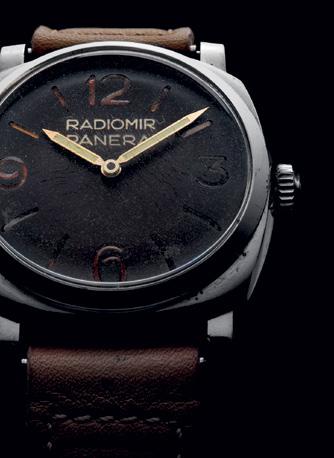
Muchofthesuccessstoriesofmajorwatchbrandsbegin with a first name,a last name,a place.Panerai’s story is no exception.The difference with the better-known stories, however, is about the where. Not Switzerland but Tuscany in Italy. Not Neuchâtel or La Chaux-deFonds but Florence.More specifically,Ponte alle Grazie. It was there in 1860 that Giovanni Panerai opened a small watch store, the first in town, selling pocket timepieces imported from Switzerland. Imported not assembled,a detail that forced Giovanni to invest in a workshop to learn the tricks of the trade.As suppliers of top Swiss brands, Giovanni’s descendants, Guido and Giuseppe, were approached in the early decades of the 1900s by the Italian Royal Navy for pocket watches and precision chronographs for its officers. At the beginning of the Great War,Panerai produced a number of sophisticated precision instruments for the ItalianRoyalNavy,manyofwhichcouldrelyontheuse of Radiomir, a radioactive glow-in-the-dark substance patented by the brand in 1916. Made from a mixture
of radium bromide and zinc sulfide, its superlative luminescence enabled it to glow in the darkest waters andwasusedinsuchinstrumentsaslight-uptimersfor detonators, wrist depth gauges, and wrist compasses. Why not for the watches? This,in fact,was the request that came to Panerai in 1935 from the Italian Royal Navy. Watches with well-defined specifications: large dials and perfect legibility even in the most adverse conditions, including muddy harbor waters. In 1936, 10 prototypes of the Panerai Radiomir watch were assigned to frogmen commandos, thus becoming the first professional military dive watches in history.And not everyone knows that the movement and case were entrusted to Rolex by Panerai. As the inventor of the first waterproof civilian watch in 1926, Rolex had the right technological know-how.The Radiomirs contained the traits that still define Panerai watches today: a 47 mm diameter,cushion case,a screw-down crown and back, soldered lugs, dials with a mix of luminescent Arabic and Roman numerals. In later years, the dial was simplified with four large Arabic numerals at 3, 6, 9, and 12 o’clock and a sandwich structure consisting of two overlapping plates; the upper dial had the numerals and indices pierced, allowing the radium paste layer on the lower dial to shine through the holes. In 1949, the documented toxic effects of radium prompted the introduction of tritium, which was less toxic and patented under the brand name Luminor. The 1950 Panerai Luminor, another professional diver model,had a dial and case very similar to those featured in the Radiomir; the big difference was in the crown protection bridge with a lever, patented, which increased the watch’s waterresistant properties and still distinguishes Luminors today.After World War II,Panerai continued to supply watches to various Armed Forces, but in 1972 the last descendant of the family, Giuseppe Panerai, died leaving no heirs.Dino Zei,a retired Navy colonel who had been in charge of procuring instruments and armaments for the Navy’s own operations, took over the company, changed its name to Officine Panerai and continued to supply the Navy. In 1997, Officine Panerai was acquired by the Richemont Group (then Vendôme Group) and the company’s entire military production branch was closed. A year later, the first collection of Panerai military-style, large and functional watches was presented to the public. They were a success that continues to this day and lives on in four core collections, two of which are strongly rooted in the brand’s history: Radiomir, Luminor, Luminor Due and Submersible. As we have seen, the most classic of the collections is the Radiomir.
Even in its current references, it has maintained the aesthetics that makes it unmistakable not only in the watchmaking world but also within the Panerai range itself.We mainly mean the sandwich dial,flush lugs, and cushion case. The latter in some references retains the rather generous original dimensions (47 mm in diameter), but there is no shortage of more wearable sizes such as the 45 mm. In recent years, in response to an ever-increasing demand for watches that aren’t as hefty and more wearable by both sexes, the Quaranta (“40”) variant,whose name indicates the new millimeter case size, has been introduced. Haute horlogeriecomplicationssuchasthetourbillon,annual calendar, or minute repeater find their way into the collection, but the Radiomir wins mainly for some movements that have become legendary for Panerai such as the patented 8-day or 3-day. The current Luminor collection also draws heavily on the tradition that began in 1950 with the progenitor of this model. What mainly differentiates it from the Radiomir are the lugs (integrated rather than flush and welded) and particularlythecrownprotectorbridge,whichhasnow become a symbol of the brand. The Luminor is large, mainly 44 mm, but there is no shortage of references that go up to the classic 47 mm. There is also the Quaranta range for thinner wrists. While in terms of complications,the Luminors leave room for solutions such as the chronograph, tourbillon, perpetual calendar,and equation of time,what characterizes this collectionismainlythatitisareal“trainingground”for Panerai where it can use avant-garde materials for the cases.Carbotech,Goldtech,Platinumtech are materials thataretheresultofyearsofresearchbywhatiscalled a“laboratory of ideas”in Neuchâtel,where production is based. Innovative materials designed not only to makewatchesvaluable,butmoreimportantlytomake them perform better. Speaking of performance, the partnership that has linked Panerai to Luna Rossa for a number of years now has led to the development of numerous Luna Rossa references in the Luminor collection, which act as standard-bearers for the best made-in-Italy ingenuity in terms of aesthetics, mechanicsand,indeed,materials.LuminorDue,onthe other hand,is in fact a range extension of the Luminor collection designed ... at a discount. Certainly not in terms of quality as much as size.Indeed,it is the most feminine collection in Panerai’s portfolio, aiming to intercept the tastes of a target audience that has never beenparticularlyonthebrand’sradar.Whatmakesher attractive to the fairer sex? Mainly the size of the case, as most of the references measure 38 mm,with some exceptions going up to 42. Then the use of elegant materials such as mother-of-pearl for dials, gold or Goldtech for cases and bracelets.Finally,the choice to introduce poetic complications such as moon phase or pastel shades on dials and straps,which contrast with the ‘hardcore’ Panerai tradition of bold colors such as brown, blue, black, anthracite or military green. A bold choice which the brand’s current CEO,Jean-Marc Pontroué,believes strongly in and relies heavily on. Finally, heir to the underwater audacity of war-era Panerai is the Submersible collection. The design is reliable and sturdy,with the large rotating diving bezel givingthecollectionalooksimilartotheportholesofa submarine.The47,44,and42mmcasesgoupto45and 49 mm in some special series and are water resistant to 30 bar,as is required for a professional dive watch. The Submersible also features the crown protector bridge, and because this is a professional collection, complicationsarereducedtotheessentialstoprioritize functionality.In this case,Panerai preferred to focus on classic,avant-garde or distinctly marine materials such as bronze, reserving some limited edition models for collaboration with Luna Rossa or Brabus.
Sylvester Stallone, an unwitting promoter of Panerai’s recent success,said when he wore a Luminor 5218-201 he bought in Italy in the 1996 film Daylight,that“that watch was a star”.A real star with a true story.
by Davide Passoni

1 - A. LANGE & SÖHNE Lange 1
Il classico delle collezioni Lange. Con l’inimitabile design del quadrante e la gran data ha ispirato un nuovo gusto in orologeria. Rigoroso.
TheclassicfromtheLangecollections.Withitsinimitabledial designandlargedate,itinspiredanewtasteinwatchmaking. Rigorous.
2 - BLANCPAIN Tourbillon Volant Une Minute 12 Jours Qui il platino è abbinato a una delle complicazioni regine dell’alta orologeria, che può essere ammirata da un’apertura nel quadrante. Très chic.
In this model platinum is paired with one of the quintessential complications of haute horlogerie,which can beadmiredthroughanopeninginthedial.Trèschic.
3 - BULGARI Octo Finissimo Perpetual Calendar
Con la sua cassa ottagonale da 40 mm spessa solamente 5,80 mm, questo orologio incarna l’estetica della meccanica Bulgari. Da record.
With its 40 mm octagonal case only 5.80 mm thick, this watchembodiestheaestheticsofBulgarimechanics.Recordbreaking.
4 - PATEK PHILIPPE In-line Perpetual Calendar 5236P Eleganza, essenzialità, purezza delle linee e leggibilità: nell’orologio ci sono i quattro vangeli che diffondono il verbo eccellente del brand. Divino.
Elegance,essentiality,purityoflineandreadability:thewatch contains the four gospels that spread the brand’s excellent word.Divine.
5 - ROLEX 1908
Il colore azzurro del quadrante distingue gli orologi del brand con la cassa in platino, ma il nuovo motivo guilloché è unico e clamoroso. Inconfondibile.

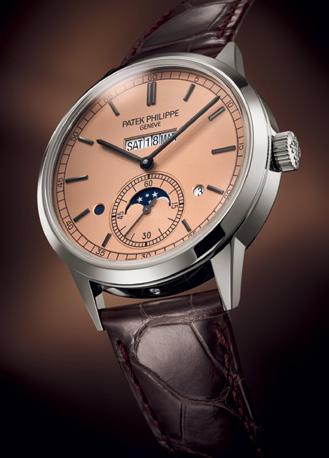

The light blue dial color sets the brand’s watches with platinumcasesapart,butthenewguillochépatternisunique andresounding.Unmistakable.
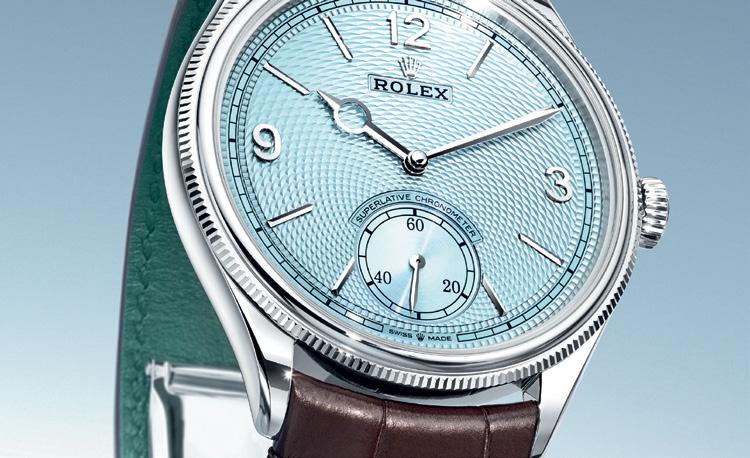

by Antonella Garello
PERFETTAMENTE BILANCIATI,
INDOSSABILITÀ IMPAREGGIABILI:
Come è nato il suo amore per la gioielleria?
Sono figlio di un orafo. L’atelier di mio padre è stato il mio parco giochi e sono felice di aver imparato questa professione straordinaria proprio da lui. In seguito ho lavorato in un’impresa spagnola dove ho imparato molto, traendone sensazioni e ispirazioni profonde e durature. Nel corso del tempo, poi, il mio amore per la creazione di gioielli non ha fatto che aumentare, man mano che acquisivo sempre più abilità come orafo e praticavo questo meraviglioso mestiere... Nel 1996 ho iniziato la mia attività lanciando la mia prima collezione di gioielli.
Quali studi, specializzazioni, esperienze lavorative e non l’hanno convinta che la gioielleria sarebbe diventata il suo destino e la sua passione?
Da giovane sognavo di diventare un pilota di Formula 1, un architetto o uno chef. Questi “ingredienti” mescolati in un metaforico pentolone, mi hanno portato a scegliere la professione del gioielliere: ho sempre trovato ispirazione per i miei gioielli nelle auto, ho sempre progettato/costruito/ingegnerizzato i gioielli come un architetto e, proprio come uno chef, ho dato alle mie creazioni il tocco finale aggiungendo qua e là qualche ingrediente quando mancava. Quindi i miei sogni si sono realizzati perché la mia vita è ora una perfetta miscela di queste tre passioni!
Quanto l’ha influenzata il fatto di essere nato e cresciuto a Idar-Oberstein?
Essere nato e cresciuto a Idar-Oberstein è stato fondamentale per iniziare a comprendere questo settore nelle sue peculiarità, stabilire i primi contatti, disporre di un’arena professionale dove regnava una sana competizione, guadagnare attenzione. Mi ha fatto anche venir voglia di uscire da una città così piccola e conoscere il mondo.
Quali sono secondo lei le caratteristiche che in generale un gioiello deve avere?
E cosa dovrebbe comunicare?
Come tanti altri manufatti, i gioielli dicono molto della personalità del loro creatore, del modo in cui sono realizzati e di altro ancora. A una persona sensibile e attenta, ogni gioiello racconterà il proprio passato. A mio parere, i particolari, i dettagli di ogni gioiello dovrebbero parlare di rispetto, amore e passione.
I suoi gioielli sono bellissime, piccole sculture da indossare. L’architettura e la pittura la influenzano in qualche modo?
Creare gioielli per me è giocare, e costruire strutture con volumi, proporzioni, linee e colori. Li disegno con matita, righello, acquarelli e uso una calcolatrice per calcolare il rapporto aureo. Gli architetti mi ricordano il mio modo di lavorare, che ha anche a che vedere con la composizione musicale, basata sul ritmo e su diversi strumenti.
Dove compra le gemme e cosa la colpisce in una pietra? Quando acquista una gemma, già immagina che tipo di gioiello prenderà vita?
Le gemme sono le vere protagoniste, le star dei miei gioielli. Per colpire e affascinare me - e il mio pubblico - devono avere carattere, espressione, personalità, unicità, autenticità e carisma. La mia sfida e il mio brivido stanno nell’andare a scovarle da specialisti gemmologi e appassionati di tutto il mondo. Acquisto queste gemme speciali solo da persone di cui mi fido e che
talents
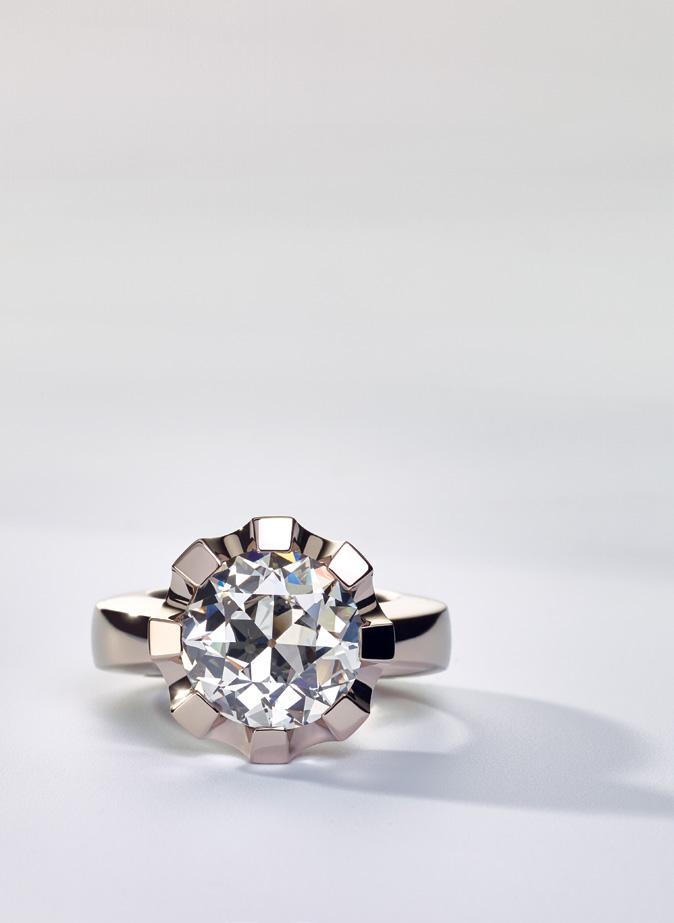
apprezzo, da persone che mi contagiano con la loro passione e la loro profonda conoscenza. Nel momento in cui mi innamoro di una gemma, di una gemma a cui non posso resistere, già vedo nella mia mente il gioiello finito. Già vedo la felice proprietaria, proprio di fronte a me...
Acquista gemme già tagliate o le fa tagliare nel suo atelier?
Siamo un team di circa 20 orafi e incassatori specializzati. Creiamo e realizziamo ogni singolo gioiello esclusivamente nella nostra sede che è aperta, illuminata da luce naturale, in una tranquilla zona residenziale di Idar-Oberstein. Per il taglio delle pietre preziose ci affidiamo ai nostri partner specializzati, basati nelle vicinanze della mia città natale ma anche in varie parti del mondo. Non compro pietre preziose grezze, seleziono solo pietre preziose eccezionali e tagliate.
Ha gemme o colori preferiti? Utilizza altri metalli oltre l’oro?
In considerazione della nostra economia e nel rispetto dei futuri clienti, utilizziamo solo pie-
tre preziose rare, di colori impressionanti e di altissima qualità per quanto riguarda chiarità e durezza, che siano perfette per gioielli da portare quotidianamente. Non vogliamo deludere i nostri clienti. Quello che vogliamo è essere orgogliosi del nostro lavoro e identificarci con esso. Con questo in mente, incidiamo ogni gioiello, in solo oro 18 carati o platino, con il nome POHL e le iniziali dell’orafo e dell’incassatore che lo hanno realizzato. Non ho una gemma preferita, sono un cacciatore e un collezionista di bellezze straordinarie e seducenti.
A quali fiere partecipa? Quali sono oggi i mercati più importanti per la sua azienda? In passato siamo stati espositori entusiasti di Baselworld. Oggi esponiamo a Monaco di Baviera, a Inhorgenta, e a Las Vegas, al Couture Show, per essere presenti nei nostri principali mercati di riferimento: Germania, Svizzera, Austria e Stati Uniti.
Come definirebbe i suoi gioielli? Quali sono le caratteristiche e i valori che li rendono unici?
Per comprendere l’essenza dei nostri gioielli basta prenderli in mano, vederli e provarli nella vita reale: questa prima impressione non si dimentica, ci si rende immediatamente dell’intensità che mettiamo nel nostro modo di operare, privo di compromessi. Il fascino e la forza di ingredienti eccezionali e di una solida artigianalità sono le caratteristiche evidenti che rendono i nostri gioielli così unici e senza tempo.
Ha in serbo progetti o iniziative speciali per il prossimo futuro?
Per il futuro cercheremo di continuare il nostro percorso, a fianco dei nostri collaboratori, dei gioiellieri partner e dei nostri clienti,conquistando sempre nuovi sostenitori affezionati.
Nostra figlia Hannah è già un elemento molto attivo in azienda: insieme agli altri giovani del nostro team rappresenta e anticipa il futuro e l’evoluzione dell’heritage di Jochen Pohl.


Outstanding gemstones, clean lines,perfectly balanced volumes, exceptional comfort and wearability: Jochen Pohl’s jewelry boasts an unmistakable style and speaks of the highest level of craftsmanship,sensitivity, culture,and a love for jewelry that,as he himself recounts,is born from afar
How did your love for jewelry begin?
Igrewupasasonofagoldsmith.Myfather’sworkshop was my playground and I am very happy I learned this extraordinary profession personally from him. Later on I benefited from working in a workshop in Spain where I gained many inspiring impressions.My love for creating jewelry increased over and over in the course of time,getting more skills as a goldsmith, practicing this wonderful craft…In 1996 I started my own business with my first jewelry collection.
What studies,specializations,work and non-work experiences have mostly convinced you that jewelry would be your destiny and passion?
When I was young I dreamed of becoming a racing driver, architect or chef. These ingredients stirred together in a cooking pot, resulting in my chosen profession as a goldsmith: I have always found inspiration for my jewelry in cars, have always designed/ constructed/engineered the jewels like an architect and,like a chef,had to decide,whether any ingredient is missing to give the creation its final touch. So my dreams came true because my life is now a perfect mixture of these three passions!
How much has the fact of being born and raised in Idar-Oberstein influenced you?
Being born and raised in Idar-Oberstein was fundamental for my start to understand this special business, to have the first contacts, the possibility to find a professional arena for serious competition and gettingattention.Italsocreatedthedesiretobreakoutof this little city and see more of the world.
In your opinion,what are the general characteristics that a jewel must have? And what should it communicate?
Like many other products jewelry exposes much about the personality of its creator, the way of its manufacturing and many more things. If you are sensible and attentive every piece of jewelry will tell you about its background. In my opinion the details of jewelry should tell something about respect, love and passion.
Your jewels are beautiful, small sculptures to be worn.Do architecture and painting influence you in any way?
Creating jewelry for me is playing and constructing building structures with volumes, proportions, lines and colors.I draw them with pencil,ruler,water color and use a calculator to calculate the golden ratio. When I listen to architects it reminds me of my way of working. It is also related with composing music based on rhythm and different instruments.
Where do you buy your gems? What must a gem have to strike you? When you buy a gem,can you already imagine what kind of jewel it will come to life?
Gemstones are the stars of my jewelry.They need character,expression,personality,uniqueness,authenticity and charisma to entertain and fascinate me and the audience. My challenge and thrill is to discover them from gemstone specialists and lovers all over the world.I only buy these selected gems from people I trust and appreciate. From people which infect me with their passion and deep knowledge. The moment I fall in love with a gemstone that I can’t resist I already see the finished jewel in my mind. I alreadyseethehappynewownerrightinfrontofme…
Do you buy already cut gems or have them cut in your atelier?
We are a team of around 20 gifted goldsmiths and specialized gemstone-setters, creating and producing every single piece of jewelry exclusively in our open workshop, fluted with natural light, in a quiet, residential area of Idar-Oberstein. For cutting the gemstones we rely on our experienced partners around us in my hometown and also worldwide.
I don’t buy rough gemstones. I only select excellent cut precious stones.
Do you have any favorite gems or colors? Do you use other metals besides gold?
In responsibility of my own purse and in respect of the future customer we only use rare gemstones in impressive colors of highest quality in relation to clarity, hardness and suitability as daily usable jewelry.We don’t want to disappoint our dear clients. Rather we want to be proud of our work and identify with it.With that in mind we engrave every piece of jewelry,only made of 18K gold or platinum with the name POHL and the initials of the goldsmith and the gemstone setter who manufactured it. Since I don’t have a favorite gemstone I am a hunter and collector of extraordinary seductive beauties.
Which fairs do you participate in? Which are the most important markets for you at the moment?
In the past we have been a passionate exhibitor of the Baselworld. Nowadays we exhibit in Munich at Inhorgenta and in Las Vegas at The Couture Show,to be present in our most important markets,Germany, Switzerland,Austria and the USA.
How would you define your jewelry? What are the characteristics and values that make it unique?
To understand our jewelry you simply have to take it in your hands to see and feel it in real life - you will neverforgetthisfirstimpressionandwillimmediately realize the intensity as well as the uncompromising way of our actions. The fascination and power of outstanding ingredients and solid craftsmanship are the obvious characteristics and make our jewelry so unique and timeless.
Do you have any special projects or initiatives in mind for the near future?
For the future we try to continue and cultivate our pathwithouremployees,partnerjewelersandclients and win additional friends. Our daughter Hannah is already a very active part of our company. Together with the other young people in our team she represents and advances the future and evolution of the heritage of Jochen Pohl.


by Donatella Zappieri
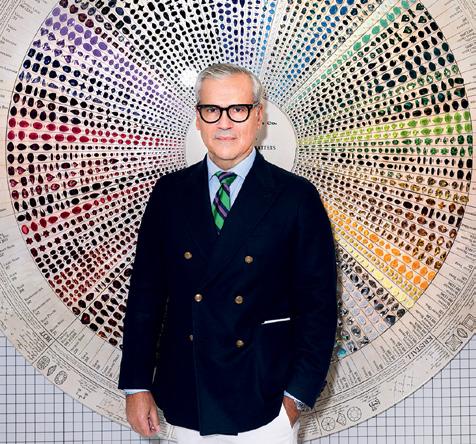
UNA CONTINUA INNOVAZIONE, DI SVILUPPARE
Daniel Swarovski, il fondatore, nasce in Boemia, ma decide di trasferirsi nel 1891 a Wattens, Tirolo (Austria), dove la ricchezza dell’acqua alpina gli consentirà di produrre più facilmente l’energia idroelettrica necessaria per realizzare il suo sogno imprenditoriale: tagliare a livello industriale il cristallo, soprattutto nelle dimensioni più piccole, e dare l’opportunità a ognuno di possedere “un diamante”. Dopo anni di tentativi, osservazione, intenso lavoro, questo macchinario innovativo consentiva di molare i cristalli ad un altissimo grado di perfezione, senza aver bisogno del lavoro manuale e con un’efficienza e una rapidità inestimabili. Il brevetto di questa macchina diede vita all’azienda attuale. Da questa sua intuizione nasce Swarovski, oggi la maggiore azienda privata in Austria, riconosciuta a livello internazionale per i suoi cristalli usati nell’abbigliamento e nel design, per le collezioni di figurine in cristallo e per le linee di bijoux e gioielli in oro 18 ct impreziositi da “Created Diamonds”. Nei primi anni Swarovski si specializza nelle pietre in cristallo – dal taglio chandeliers - utilizzate principalmente per i lampadari nelle più belle residenze internazionali. A partire dagli anni ’20, l’eccitazione nelle jazz hall americane porta i trend verso abiti impreziositi di perline e i cristalli Swarovski diventano il giusto elemento scintillante per decorare questi abiti sfrangiati. Negli anni ’30 e ’40 i cristalli Swarovski vengono utilizzati per la prima volta dalle grandi Maison di moda parigine. Nel 1953, Robert Goossens, creatore di gioielli per Coco Chanel, inserisce i cristalli Swarovski nelle sue creazioni ed ancora oggi una spilla Chanel può essere ammirata al Museo di Swarovski Kristallwelten. Mademoiselle Chanel integra le pietre sfaccettate Swarovski in varie colorazioni nelle sue creazioni di bigiotteria dando loro codici di lusso poiché utilizzati in modo inusuale e in silhouette estremamente all’avanguardia. Storica la sua frase «Il bijoux non è concepito per dare alla donna un’aurea di benessere ma per renderla più bella». Dior commissiona addirittura un effetto particolare chiamato Aurora Boreale: un tocco speciale che conferisce al cristallo bianco delle iridescenze che ci riportano alle aurore tipiche dei

Poli. Inizia quindi un nuovo corso per il bijou che può essere indossato sostituendo la gioielleria vera. Gli anni ’70 segnano l’ingresso di Swarovski nel mondo dell’oggettistica: durante le Olimpiadi di Innsbruck viene affidato a Swarovski il compito di disegnare la mascotte e un operaio, giocando con elementi di cristallo incollati assieme, crea un piccolo topolino. Questa simpatica e delicata creazione apre la strada a intere famigliole di piccoli animaletti che presto diventano oggetto di collezionismo, arredano le case e sono spesso utilizzati come cadeau soprattutto per le cerimonie nuziali. Negli anni ‘90 arrivano le prime collezioni di bijoux a marchio Swarovski e nel 2000 il lancio dell’anello Nirvana, pezzo iconico interamente realizzato in cristallo e disponibile in varie colorazioni. Nel 2008, il magico design di interni “Crystal Forest” è stato implementato nei negozi di tutto il mondo, accogliendo gli acquirenti in un paese delle meraviglie architettonico di cristallo. Swarovski Crystal Business oggi ha una distribuzione globale in oltre 140 paesi, con circa 2.300 negozi e selezionate boutique multi-brand. Oltre 16.600 persone sono impiegate in tutta la filiera.
Unitamente alle sue aziende consociate Swarovski Optik (dispositivi ottici) e Tyrolit (abrasivi), Swarovski Crystal Business fa parte del Gruppo Swarovski. Nel 2021 la nomina di Giovanna Engelbert a Global Creative Director segna l’inizio di un nuovo corso e la spinta verso un nuovo posizionamento. Engelbert integra un’audace visione da lei definita “Ignite your Dreams” celebrando il cristallo in ogni sua forma in un universo avvincente ed irresistibile, lavorando su un mondo onirico e pieno di emozioni, colore e forme. Il nuovo mondo delle meraviglie di Swarovski e sogno di Giovanna Engelbert prende vita con l’inaugurazione dei negozi “Instant Wonder” nei principali mercati globali. Si inizia a Milano nel 2021, in Galleria Vittorio Emanuele, con il primo spazio di vendita sensoriale, arricchito da colori e trame vivaci, sculture ottagonali metalliche e materiali innovativi in sinergia tra loro per incoraggiare l’esplorazione e l’espressione delle emozioni. Negli anni successivi si sono susseguite le aperture di ulteriori concept store “Wonderlux” in tutto il mondo. A novembre 2023, Swarovski apre il suo più grande flagship store di sempre nella Fifth Avenue di New York, il negozio punta a suscitare meraviglia rendendo omaggio alla bellezza scintillante del cristallo. Disposto su due piani e con una superficie di 1.000 mq, Swarovski on Fifth è come entrare in un vivace portagioielli pieno di tesori, incluso il più grande chaton di cristallo mai tagliato. Sempre nel 2023, a dicembre, viene aperto un altro flagship a Seoul nella famosa Dosan Park. Futuristico, luminoso, lo spazio si sviluppa su quattro piani con una dimensione di 488 metri quadrati. Sulla facciata si staglia il riconoscibile logo cigno e ogni piano è caratterizzato dai colori del brand: blue, giallo e rosa.
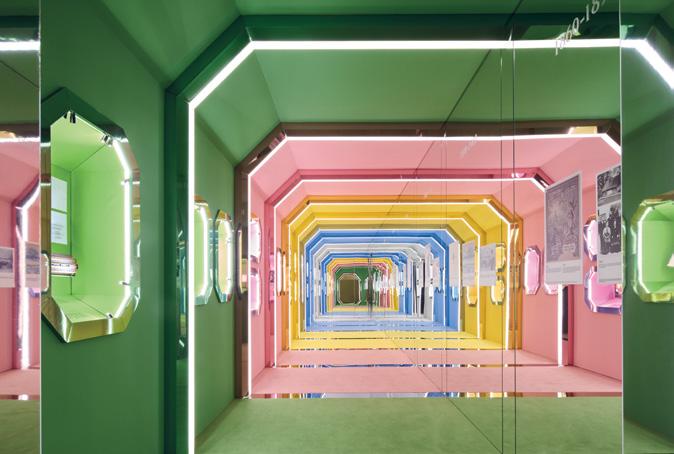

La crescente distribuzione è suggellata da un’ulteriore apertura a Milano proprio in piazza Duomo, spazio incubatore perfetto di tutte le anime del business Swarovski con all’interno alcune aree inedite che nessun altro store ha mai avuto. Al suo interno uno shop in shop dedicato ai “Created Diamonds” così come l’area espositiva dedicata ai “loose components”, che permette al brand di dare visibilità anche a questa parte che, specialmente per il mercato italiano, ha un’importanza strategica fondamentale. Se agli albori dell’azienda il logo era una stella alpina, evolutosi in un cigno negli anni ’70 col passaggio al mondo del prodotto finito, con l’avvento di Engelbert anche il cigno Swarovski cambia direzione e si volta come ad abbracciare la nuova visione creativa, pronto a spiccare il volo. La figura si evolve e acquisisce un aspetto più slanciato, accentuato dal collo affusolato, per sottolineare il cambiamento intrapreso dalla Maison austriaca. In termini simbolici, il cigno rappresenta l’amore eterno, un sentimento che si riflette nella passione che Swarovski ha per il cristallo. Il nuovo logo sottolinea l’orgoglio del brand nei confronti della tradizione e al tempo stesso la volontà di abbracciare il cambiamento. Il tocco finale è dato da una forma ottagonale, nella quale il cigno è racchiuso, che ricorda le confezioni delle caramelle. L’ottago -
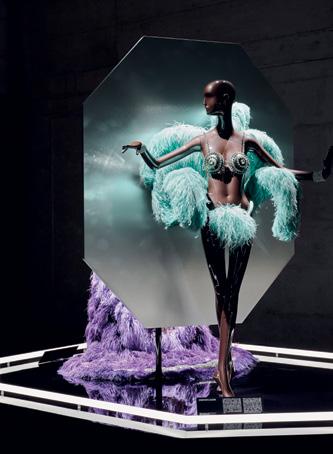
no, simbolo di rinascita, è un chiaro riferimento al cristallo sfaccettato, con Swarovski al centro. Swarovski significa anche impegno nel sociale: l’acqua è sempre stata fondamentale per l’attività di Swarovski e ora più che mai gioca un ruolo come fonte della vita sul pianeta. Il programma Swarovski Waterschool è stato istituito nel 2000: quello che era iniziato come un progetto locale si è poi evoluto in un’iniziativa globale, operando nelle aree dei fiumi più importanti del mondo, in paesi quali Brasile, Cina, India, Tailandia, Uganda e Stati Uniti.
Il progetto ha garantito l’accesso all’acqua pulita nelle scuole di tutto il mondo, istruendo al tempo stesso le comunità sui problemi igienico-sanitari, sull’igiene e sull’acqua. Swarovski Waterschool mira, infine, a consentire ai bambini e alle loro comunità di tutto il mondo di diventare ambasciatori dell’acqua fornendo strumenti e formazione che affrontino le sfide idriche locali.
La mostra itinerante “Masters of Light” di Swarovski, che ha debuttato a Shanghai lo scorso autunno, è arrivata a Milano a giugno 2024 nelle sale nobili di Palazzo Citterio, la magnifica estensione della Pinacoteca di Brera che ha riaperto al pubblico, proprio in quest’occasione, a seguito dei lavori di restauro appena terminati. Frutto della visione della Global Creative Director Giovanna Engelbert, e curata dal giornalista, autore e critico di moda Alexander Fury, la mostra celebra i quasi 130 anni di storia della Maison austriaca e la sua rilevanza nel settore della moda, della gioielleria e della cultura POP in generale. Tracciando un viaggio nel tempo e nello spazio attraverso la storia di Swarovski dal 1895 ai giorni nostri, questa mostra iconica è la prima esplorazione del patrimonio e dello spirito rivoluzionario di uno dei più antichi brand del lusso europei. La mostra mette in scena una selezione eccezionale di capi (cristallizzati) provenienti dagli archivi di brand internazionali come Balenciaga, Dior, Gucci, Schiaparelli, Versace e Armani, così come scintillanti look custom-made indossati da star globalmente riconosciute del calibro di Harry Styles, Doja Cat, Katy Perry e Beyoncé. La prossima tappa della mostra resta ancora un segreto!

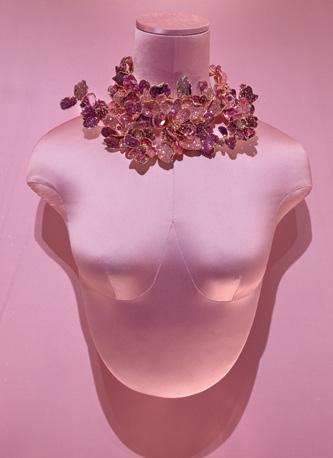
for Coco Chanel, incorporated Swarovski crystals into his creations, and even today a Chanel brooch can be admired at the Swarovski Kristallwelten Museum. Mademoiselle Chanel integrated faceted Swarovski stones in various colors into her costume jewelry creations giving them codes of luxury as they were used in unusual ways and in extremely avant-garde silhouettes.Her statement is memorable,“Bijoux is not designed to give women an aura of well-being but to make them more beautiful”.Dior even commissioned a specialeffectcalledAuroraBorealis:aspecialtouchthat gives the white crystal a shimmer that transports us to thenorthernlightsthatcanbefoundinthePoles. Thus begins a new course for bijou that can be worn replacing real jewelry. The 1970s marked Swarovski’s entry into the world of giftware: during the Innsbruck Olympics, Swarovski was tasked with designing a mascot and a worker, playing with crystal elements glued together, created a small mouse. This cute and delicate creation paved the way for whole families of smallanimalsthatsoonbecamecollectibles,decorating homes and often used as gifts,particularly for wedding ceremonies. In the 1990s came the first Swarovskibranded jewelry collections, and in the year 2000 was the launch of the Nirvana ring, an iconic piece made entirelyofcrystalandavailableinvariouscolors.
129 years of Swarovski history: unique expertise in the industrial cutting of crystal,a rare ability to cut it into tiny dimensions and,above all,the ability to develop its use in so many areas through continuous innovation,from abrasive grinding wheels to fashion, and from jewelry to design
DanielSwarovski,thefounder,wasborninBohemia,but decidedtomovein1891toWattens,Tyrol(Austria),where the abundance of alpine water would make it easier for him to produce the hydroelectric power needed to fulfill his entrepreneurial dream: to industrially cut crystal, particularly into smaller dimensions, and give everyone the opportunity to own “a diamond”. After years of trial and error, observation, and intense work, this innovative machinery made it possible to grind crystals to a very high degree of perfection,without the need for manual labor and with invaluable efficiency and speed. The patent for this machine gave birth to the current company. From this insight Swarovski was born, now the largest privately owned company in Austria, internationally recognized for its crystals used in apparel and design,crystal figurines collections,and 18-carat gold jewelry and bijoux lines embellished with“Created Diamonds”.In the early years,Swarovski specialized in crystal stones (chandeliers cut) used mainly for these ornate lighting fixtures in the finest international residences. Beginning in the 1920s, excitement in American jazz halls led trends towards beaded embellished dresses, and Swarovski crystals became just the right sparkling element to decorate these frayed dresses.In the 1930s and 1940s,Swarovski crystals were first used by the top Parisian fashion houses. In 1953, Robert Goossens, jewelry designer
In 2008,the magical interior design“Crystal Forest”was implemented in stores around the world, welcoming shopperstoanarchitecturalcrystalwonderland.
The Swarovski Crystal Business today has global distribution in more than 140 countries, with around 2,300 stores and selected multi-brand boutiques. More than 16,600 people are employed throughout the supply chain. Together with its sister companies Swarovski Optik (optical devices) and Tyrolit (abrasives), the Swarovski Crystal Business is part of the Swarovski Group.In 2021,the appointment of Giovanna Engelbert as Global Creative Director marked the beginning of a new course and a push toward a new positioning. Engelbert integrated a bold vision she calls “Ignite your Dreams” by celebrating crystal in all its forms in a compelling and irresistible universe, working on a dreamlikeworldfullofemotion,colorandform.
The new world of wonder of Swarovski, and dream of Giovanna Engelbert, came to life with the opening of “Instant Wonder” stores in major global markets. It started in Milan in 2021 at Galleria Vittorio Emanuele with the first sensory retail space,which was enhanced bybrightcolorsandtextures,octagonalmetalsculptures and innovative materials in synergy with each other to encourageexplorationandexpressionofemotions.
The following years saw the opening of additional “Wonderlux”conceptstoresaroundtheworld.
InNovember2023,Swarovskiopeneditslargestflagship
store ever on New York’s Fifth Avenue,the store aimed to inspire wonder by paying homage to the sparkling beauty of crystal.Spread over two floors and spanning 1,000 square meters,Swarovski on Fifth is like stepping into a bustling jewelry box full of treasures, including the largest crystal chaton ever cut. Also in 2023, in December, another flagship store was opened in Seoul in the famous Dosan Park.Futuristic and bright, the space is spread over four floors with a size of 488 square meters. The recognizable swan logo stands out on the facade, and each floor features the brand colors: blue,yellow and pink.The growing distribution is sealed by another opening in Milan right in Piazza Duomo,aperfectincubatorspaceforallthesoulsofthe Swarovski business with some unseen areas inside that no other store has ever had. Inside, there is a shop in shop dedicated to “Created Diamonds “, as well as the exhibition area dedicated to“loose components“,which allows the brand to give visibility to this part that has afundamentalstrategicimportance,particularlyforthe Italian market. If in the company’s early days the logo was an edelweiss, evolving into a swan in the 1970s with the transition to the world of finished products, with the advent of Engelbert the Swarovski swan also changed direction and turned as if to embrace the new creative vision, ready to take flight. The figure evolved and acquired a sleeker appearance,accentuated by the tapered neck, to underscore the change undertaken by the Austrian Maison. In symbolic terms, the swan represents eternal love, a sentiment reflected in Swarovski’spassionforcrystal.Thenewlogoemphasizes the brand’s pride in tradition while also embracing change. The final touch is provided by an octagonal shape, in which the swan is enclosed, reminiscent of candy wrappers.The octagon,a symbol of rebirth,is a clear reference to the faceted crystal,with Swarovski in the center. Swarovski also means social engagement: water has always been central to Swarovski’s business and now more than ever plays a role as the source of life on the planet.The Swarovski Waterschool program was established in 2000: what began as a local project has since evolved into a global initiative, operating in the world’s most important river areas, in countries such as Brazil, China, India, Thailand, Uganda and the United States. The project has ensured access to clean water in schools around the world while educating communities on sanitation, hygiene and water issues. Finally,Swarovski Waterschool aims to enable children and their communities around the world to become water ambassadors by providing tools and training that addresslocalwaterchallenges.
Swarovski’stravelingexhibition“MastersofLight”,whichdebutedinShanghailastfall,arrived in Milan in June 2024 in the noble rooms of Palazzo Citterio,the magnificent extension of the Pinacoteca di Brera,which reopened to the public on this very occasion following the restoration work that has just been completed.The result of the vision of Global Creative DirectorGiovannaEngelbert,andcuratedbyjournalist,authorandfashioncriticAlexander Fury,the exhibition celebrates the Austrian fashion house’s nearly 130-year history and its relevance in fashion,jewelry and POP culture in general.Tracing a journey through time andspacethroughSwarovski’shistoryfrom1895tothepresentday,thisiconicexhibitionis thefirstexplorationoftheheritageandrevolutionaryspiritofoneofEurope’soldestluxury brands.The exhibition showcases an exceptional selection of (crystallized) garments from the archives of international brands such as Balenciaga, Dior, Gucci, Schiaparelli, Versace and Armani,as well as glittering custom-made looks worn by globally recognized stars of thecaliberofHarryStyles,DojaCat,KatyPerryandBeyoncé.
Thenextstageoftheexhibitionisstillasecret!
by Davide Passoni

1 - BREITLING Chronomat 36 Victoria Beckham
Blu profondo e oro giallo sono il biglietto da visita di questo pezzo, firmato dalla Posh Spice. E in più ha la certificazione di cronometro. Glamour.
Deep blue and yellow gold are the calling card of this piece, signed by Posh Spice. Plus it has chronometer certification. Glamour.
2 - CARTIER Panthère de Cartier
Un’icona del marchio parigino, che sa unire l’opulenza del metallo prezioso al minimalismo delle forme per una eleganza unica. Senza tempo.
An icon of the Parisian brand,which knows how to combine the opulence of precious metal with the minimalism of shapesforuniqueelegance.Timeless.
3 - HUBLOT Classic Fusion Original
L’orologio che oltre 40 anni fa ha dato il via alla saga del brand, capace di unire l’esclusività dell’oro alla praticità del caucciù. Camaleontico.
The watch that kicked off the brand’s saga over 40 years ago, capable of combining the exclusivity of gold with the practicalityofrubber.Chameleonic.
4 - LONGINES DolceVita
Nel suo nome c’è una promessa di leggerezza, nella sua cassa dal design intramontabile vive l’attitudine all’eleganza della Maison. Simbolo.
Its name bears a promise of lightness, in its timelessly designed case lives the Maison’s attitude to elegance. Symbolic.
4 - VACHERON CONSTANTIN Overseas automatico
Le nuance verdi del quadrante soleil esaltano la lunetta, tempestata di 90 diamanti taglio brillante, che richiama la croce di Malta. Opulento.
The green hues of the soleil dial enhance the bezel,studded with 90 brilliant-cut diamonds recalling the Maltese cross. Opulent.

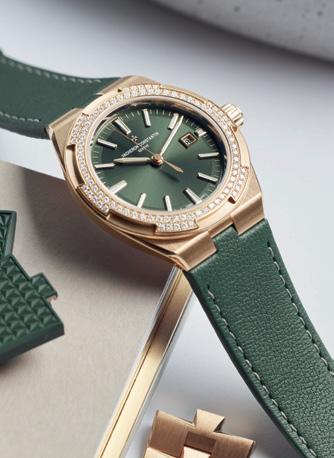


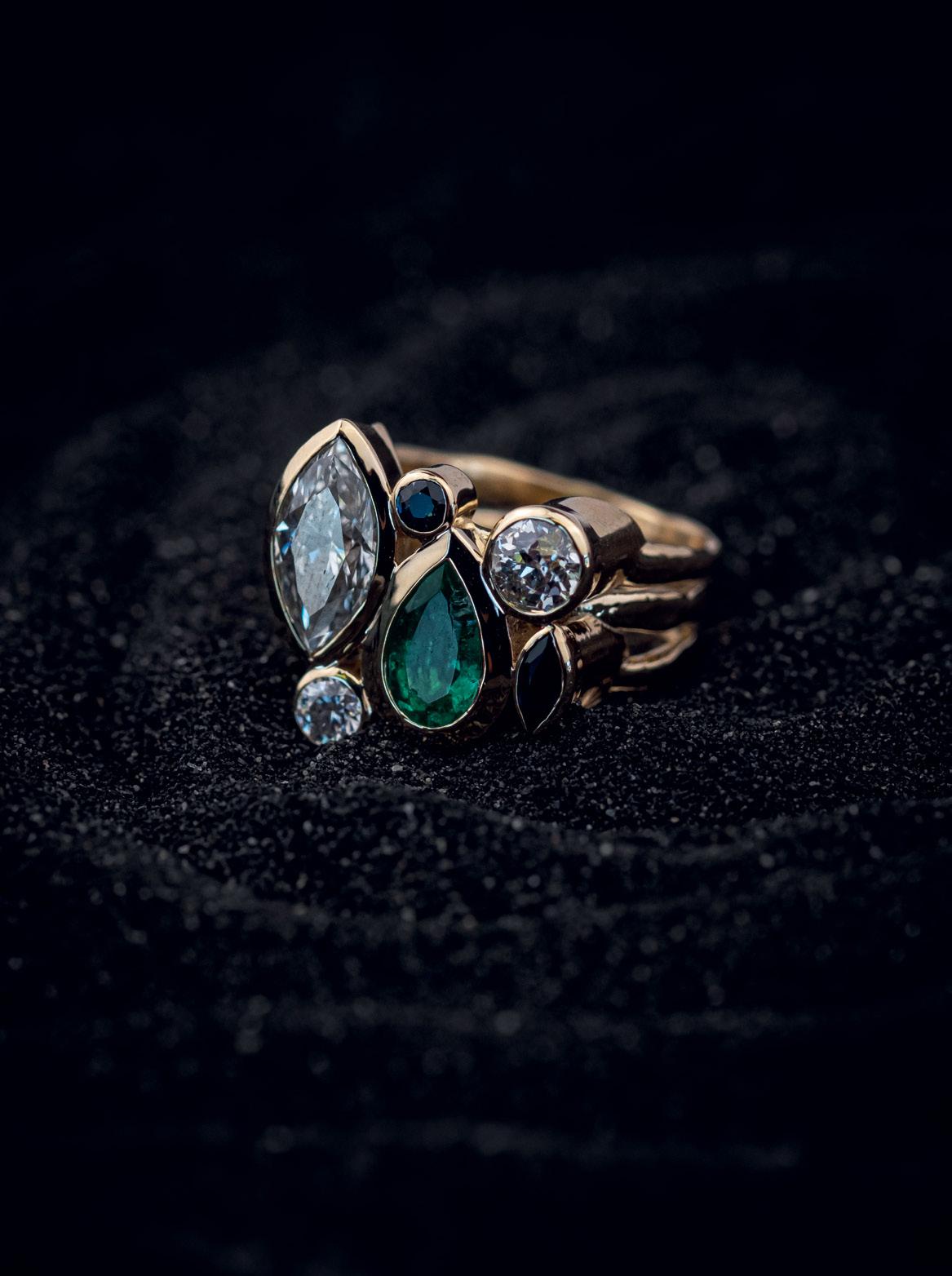
by Antonella Garello
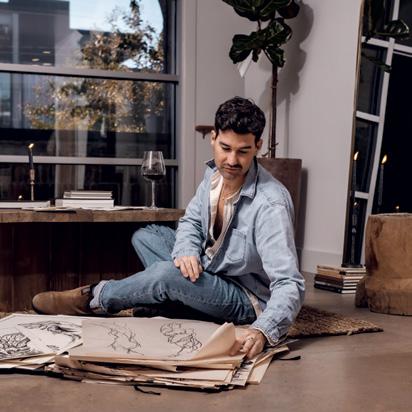
Colby Shelton si definisce un sognatore, e bene intenzionato a rimanere tale. Racconta di un’infanzia scandita dal grande amore per il mare e per le creature e le storie che custodisce, le avventure dei pirati, i naufragi, le navi inabissate coi loro tesori. Un mondo che non lo ha più abbandonato e che continua “inesorabilmente” ad attrarlo e ispirarlo. La vera e propria passione per la gioielleria nasce durante un soggiorno di parecchi mesi in Toscana, dove Colby ha l’occasione di seguire un programma intensivo di design del gioiello, studiando tecniche e segreti di quell’artigianalità fatta di attenzione maniacale al dettaglio che è una peculiarità tutta italiana, e immergendosi nella cultura e nell’arte del Belpaese. «Per me, da giovane adulto, è stato il passo successivo nel mio percorso alla scoperta dell’arte e di me stesso. Sembra una frase presa da da un libro, ma veramente da questa esperienza ho tratto molto più di quanto riesca a esprimere a parole». Rientrato negli Stati Uniti, sente che è giunto il momento di mettersi alla prova e nel 2013 fonda il proprio brand, Shelton Metal, che fin dagli esordi si distingue per la qualità della lavorazione e l’originalità del design. I gioielli di Colby sono vere e proprie sculture da indossare, reminiscenze degli studi compiuti e largamente ispirate alle profondità del mare: «Attraverso i miei progetti riesco a tradurre quello spazio di pace: facendo i conti anche col suo ignoto, che a sua volta mi spinge all’esplorazione. Proteggo questo mondo perché è la mia mente, la mia arte, ma per poter crescere devo scrutarne parti sempre più profonde”. Ogni singolo pezzo viene disegnato e lavorato a mano da Colby in argento, vermeil, oro - quasi sempre riciclato - e pietre naturali di estrazione etica. Secondo Colby, ogni gioiello deve avere una storia da raccontare, una storia degna di essere narrata: è questo messaggio a trasformare un gioiello in qualcosa di più, un tesoro da custodire nel tempo e passare alle generazioni a venire. Con sua grande gioia, sono molti anche i lavori che gli vengono commissionati - anelli di fidanzamento, vere nuziali, gioielli di famiglia da rimodernare - e che lo portano a lavorare gomito a gomito coi committenti, creando con loro connessioni profonde, sentendone tutta l’energia e trasferendo nel gioiello una parte di quelle persone e dei loro sentimenti. «Quello che preferisco è rimodernare le
gioie di famiglia, con tutti i loro anni di storie da raccontare - conferma Colby - Riciclare il metallo e riutilizzare le pietre per un gioiello nuovo, rispettando l’integrità del gioiello originale ma al tempo stesso aggiungendo una nuova dimensione alla sua storia».
La Home Collection nasce invece da un progetto che Colby ha a lungo accarezzato. La sua futura casa - spiega - se la immagina da sempre con arredi e accessori realizzati personalmente da lui, in ogni minimo particolare: e così nel 2021 ha cominciato a realizzare per sé portacandele, cucchiaini da caffè, accessori per aperitivo, posate, e lavorando a mano i dettagli di ogni singolo pezzo è tornato con la memoria alle giornate passate in spiaggia da bambino, a costruire umidi castelli di sabbia e a perdere lo sguardo nel movimento delle onde. «Questi ricordi nostalgici sono riconoscibili in ogni pezzo, dalle texture e dai movimenti organici alle finiture e alla scelta dei metalli. Volevo portare tutto questo nelle case come oggetti da collezione, per regalare momenti
in cui tutti noi possiamo tornare a sentire la sabbia che ci scivola tra le dita». In ogni caso i ricordi non costituiscono mai una gabbia per Colby, che si mantiene sempre aperto a nuove opportunità e sfide creative. Nel 2022 ha disegnato una collezione di gioielli per Sabato Russo, quest’anno ha appena concluso una collaborazione con la designer Kenzie Bongiorno, founder di KB Swim, per una collezione di costumi da bagno impreziositi da elementi in metallo che richiamano il mare, in puro stile Shelton Metal: una collaborazione che ha richiesto un grosso impegno da parte di Colby, chiamato ad affrontare problematiche per lui del tutto nuove. Colby il sognatore non nasconde tutto il suo entusiasmo: «Tutto questo per me è quasi surreale - l’idea di essere un artista, di guadagnarmi da vivere facendo ciò che amo…
Non lo darò mai per scontato, continuerò sempre a cercare nuovi modi per esprimermi e per meritare ogni giorno che questo sogno rimanga realtà».

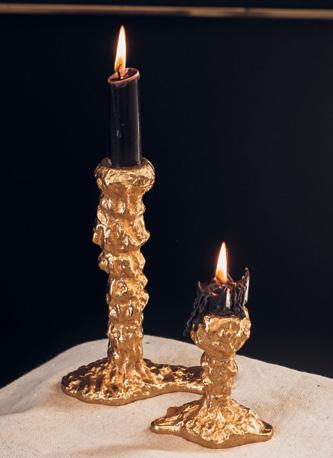

As a child,Colby Shelton Byrd loved stories about treasures and pirates and was irresistibly drawn to the sea.Then a trip to Italy changed his life
Colby Shelton calls himself a dreamer, and has all the intentions of remaining one. He talks of a childhood punctuated by a great love for the sea and the creatures and stories it holds, the adventures of pirates, shipwrecks, sunken ships with their treasures. A world that has never left him and continues to “relentlessly”attract and inspire him.His true passion for jewelry came about during a several-month stay in Tuscany,whereColbyhadtheopportunitytofollowan intensive jewelry design program,studying techniques and secrets of the craftsmanship made of maniacal attention to detail that is an all-Italian peculiarity, and immersing himself in the culture and art of the country.“This was my next step in life as a young adult infindingmyartandfindingmyself.Itsoundsvery“out of a book” but I truly felt more from this experience than I can put into words”.Back in the United States, he felt it was time to prove himself, and in 2013 he founded his own brand,Shelton Metal,which from the beginningstoodoutforthequalityofitsworkmanship and the originality of its design. Colby’s jewelry are true wearable sculptures, reminiscent of his studies andlargelyinspiredbythedepthsofthesea:“Through my designs I am able to translate that space of peace yet with the unknown that inspires me to explore. I protectthisworldbecauseit’smymind,it’smyart-yet I also have to constantly discover deeper parts of this world to grow”.Each individual piece is designed and handcrafted by Colby in silver, vermeil, gold - almost always recycled - and ethically mined natural stones. According to Colby, every piece of jewelry must have a story to tell, a story worth telling: it is this message that turns a piece of jewelry into something more, a treasure to be guarded over time and passed on to the generations to come.Much to his delight,there are also manyjobsthatheiscommissionedtodo-engagement rings, wedding rings, family jewelry that needs to be remodeled-thatleadhimtoworkshouldertoshoulder with clients, making deep connections with them, feeling all their energy and transferring a part of those
people and their feelings into the jewelry.“My favorite is having the opportunity to repurpose heirloom piecesthathavemanyyearsofstories”,Colbystates.“To recycle the metal and use the stones into a new design all while maintaining the integrity of the heirloomyet adding a new dimension to its story”. The Home Collection, on the other hand, came about from a projectthatColbyhaslongcherished.Hisfuturehome, he explains,he has always imagined it with furniture and accessories made personally by him, down to the smallest detail: and so in 2021 he began making candleholders, coffee spoons, aperitif accessories, and cutlery for himself, and working by hand on the details of each piece he returned with his memory to days spent at the beach as a child, building dripping sandcastles and losing his gaze in the movement of the waves. “These nostalgic memories show in each piece from the textures and organic movements to the finishes and metal choices.I wanted to bring this into homes as collectibles,as moments we can all feel the dripping sand between our hands once again”.In any case,memories are never a cage for Colby,who always keeps himself open to new opportunities and creative challenges. In 2022 he designed a jewelry collection for Sabato Russo; this year he has just completed a collaborationwithdesignerKenzieBongiorno,founder of KB Swim, for a swimwear collection embellished with metal elements reminiscent of the sea, in pure Shelton Metal style: a collaboration that required a big commitment from Colby, who was called upon to tackle issues that were completely new to him. Colby the Dreamer does not hide all his enthusiasm,“This is all surreal to me - the idea that I am an artist,making aliving,anddoingwhatIlove.Iwillnevertakethatfor grantedyetIwillalwayspushformorewaystoexpress myself and to realize I am deserving enough for this dream to be a reality”.

by Paola Greco
Gioielli che nascono dalla luce e dal colore delle gemme, vitali elementi ispiratori che guidano nella creazione di autentiche opere d’arte: il titanio, l’oro, il platino e poi la madreperla incastonano e incorniciano pietre preziose quali diamanti, smeraldi, zaffiri, e semi preziose come la rubellite, la tanzanite, la morganite, la kunzite. I gioielli di Maison J’OR sono il perfetto punto d’incontro tra alta tecnologia, risorse e innovazione e competenze - tra le più rare e complesse - di grandi maestri artigiani, impegnati nella costante ricerca dell’eccellenza, custodi di un saper fare in perenne evoluzione. La storia del marchio affonda le radici negli anni ‘80, quando Attilio e Barbara Gelpi hanno deciso di dare forma al loro amore per l’alta manifattura e per le pietre preziose, partendo da un’idea precisa: realizzare gioielli di inestimabile eleganza ed eccellente fattura, in un connubio di poetica bellezza. Con questo spirito nasce il laboratorio Oro Project, le cui capacità tecniche consentono di realizzare creazioni sempre più affascinanti e complesse per prestigiosi marchi internazionali. Ma è con l’ingresso in azienda dei figli Lorenzo e Filippo che nasce il brand J’OR, come nuova realtà espressiva rispetto alla casa madre, per proporre un gioiello di altissima manifattura italiana in grado di esprimere classe, stile, colore e passione


e di interpretare la femminilità contemporanea, fatta di consapevolezza e autodeterminazione, ma anche la sofisticata eleganza maschile, attraverso la creazione di bracciali e gemelli che non temono un caleidoscopio di colori. È sempre Attilio Gelpi che sceglie le pietre - centro e punto di partenza di ogni gioiello - che poi passano sul tavolo del designer per la fase creativa. Filippo Gelpi, attraverso la tecnologia 3D, trasforma gli studi grafici in prototipi per le necessarie prove estetiche e funzionali, per affidarli poi alle risorse interne che si occupano della realizzazione dei gioielli, impegnate nella costante ricerca dell’eccellenza e nello sviluppo di processi e materiali inediti. Le creazioni J’OR trovano spazio in tre aree, ognuna con peculiarità e anima a sé stanti, all’interno delle quali si sviluppano le diverse linee, che si susseguono con cadenza stagionale, come avviene nell’alta moda. In “Capolavori” si trovano gioielli sorprendenti, caratterizzati da pietre dalla caratura importante e da una tecnica orafa di straordinario valore e grado di difficoltà. L’area “Collezioni” include gioielli raffinati, vibranti di colore, luce ed

emozioni, curati in ogni dettaglio e ideati per decantare la forza dell’amore.
Infine, “Prêt-à-porter” celebra la possibilità di vivere il lusso nella quotidianità, con dinamicità e disinvoltura, senza rinunciare alle pietre preziose e ai metalli nobili. Lorenzo Gelpi, in qualità di direttore vendite, si occupa col suo team di esperti dello sviluppo del marchio e delle strategie di marketing e comunicazione. Un percorso che passa inevitabilmente anche per la sostenibilità, valore sempre più imprescindibile e attuale: J’OR infatti si avvale di importanti certificazioni, come quella del Responsible Jewellery Council, l’organizzazione internazionale no profit che ha lo scopo di promuovere, nel contesto della lavorazione dei gioielli in oro e diamanti, pratiche responsabili da un punto di vista etico, sociale e ambientale, nel rispetto dei diritti umani lungo tutta la filiera, dall’estrazione in miniera fino al commercio al dettaglio. La Certificazione RJC si basa su due standard principali: il Code of Practices (COP), concepito per essere applicato a tutti i settori della filiera produttiva, per occuparsi di etica aziendale, diritti umani, prestazioni sociali e ambientali; e il Chain of Custody (CoC) che garantisce la piena tracciabilità dei metalli preziosi nonché un approvvigionamento responsabile, e che coinvolge tutte le strutture e i terzisti esterni di cui ci si avvale per le diverse fasi di lavorazione, immagazzinamento, spedizione e ricezione dei materiali. Queste certificazioni aggiungono ulteriore valore ai gioielli, contribuendo allo storytelling e alla massima trasparenza del brand verso i propri clienti.


Jewelry that is born from the light and color of gems, vital inspirational elements that guide the creation of authentic works of art: titanium, gold, platinum, and mother-of-pearl set and frame precious stones such as diamonds, emeralds, sapphires, and semi-precious stoneslikerubellite,tanzanite,morganite,andkunzite.
The Roman brand’s handcrafted creations express all the beauty and poetics of Italian high-end jewelry
Maison J’OR’s jewelry is the perfect intersection of high technology, resources and innovation, and skills (among the rarest and most complex) of great master craftsmen who are committed to the constant pursuit of excellence, custodians of ever-evolving know-how. The brand’s history has its roots in the 1980s, when Attilio and Barbara Gelpi decided to give shape to their love of fine craftsmanship and precious stones,starting with a specific idea: to make jewelry of inestimable elegance and excellent workmanship,in a combination of poetic beauty. It was with this spirit that the Oro Projectworkshopwasborn,thetechnicalskillsofwhich enable increasingly fascinating and complex creations for prestigious international brands.But it was with the entry of sons Lorenzo and Filippo into the company that J’OR brand was born, as a new expressive reality withrespecttotheparentcompany,toproposejewelryof the highest Italian craftsmanship capable of expressing class, style, color and passion while interpreting contemporary femininity, made up of awareness and self-determination, as well as sophisticated masculine elegance,throughthecreationofbraceletsandcufflinks proudlyofferingakaleidoscopeofcolors.
It is always Attilio Gelpi who chooses the stones (the center and starting point of each piece of jewelry) that thenpassontothedesigner’stableforthecreativestage. Using 3D technology, Filippo Gelpi transforms graphic studies into prototypes for the necessary aesthetic and functional tests,and then entrusts them to the in-house staff involved in jewelry making,who are committed to constantly pursuing excellence and developing novel
processes and materials. J’OR’s creations find space in three areas, each with its own peculiarities and soul, within which the different lines are developed and follow each other seasonally, as is the case in haute couture. In “Capolavori” (Masterpieces) there is amazing jewelry, characterized by large-carat stones and goldsmith technique of extraordinary value and degree of difficulty. The “Collezioni” (Collections) area includes exquisite jewelry,vibrant with color,light and emotion,with attention to every detail and designed to praisethepoweroflove.Finally,“Prêt-à-porter”celebrates the possibility of living luxury in everyday life, with dynamism and ease,without foregoing precious stones and noble metals. Lorenzo Gelpi, as the sales director, works with his team of experts on brand development andmarketingandcommunicationstrategies.
A journey that also inevitably involves sustainability, a valuethatisincreasinglyinescapableandrelevanttoday. In fact, J’OR possesses some important certifications, such as that of the Responsible Jewellery Council, the international nonprofit organization that aims to promote responsible practices within the context of gold and diamond jewelry processing from an ethical, social and environmental point of view, respecting human rights throughout the supply chain, from mining to retail trade. The RJC Certification is based on two main standards: the Code of Practices (COP) designed to be applied to all sectors of the supply chain, to deal with business ethics, human rights, social and environmental performance; and the Chain of Custody (CoC),which ensures full traceability of precious metals aswellasresponsiblesourcing,andinvolvesallfacilities and outside contractors used for the various stages of processing, storage, shipping and receiving materials. These certifications add further value to the jewelry, contributing to the brand’s storytelling and maximum transparencytoitscustomers.
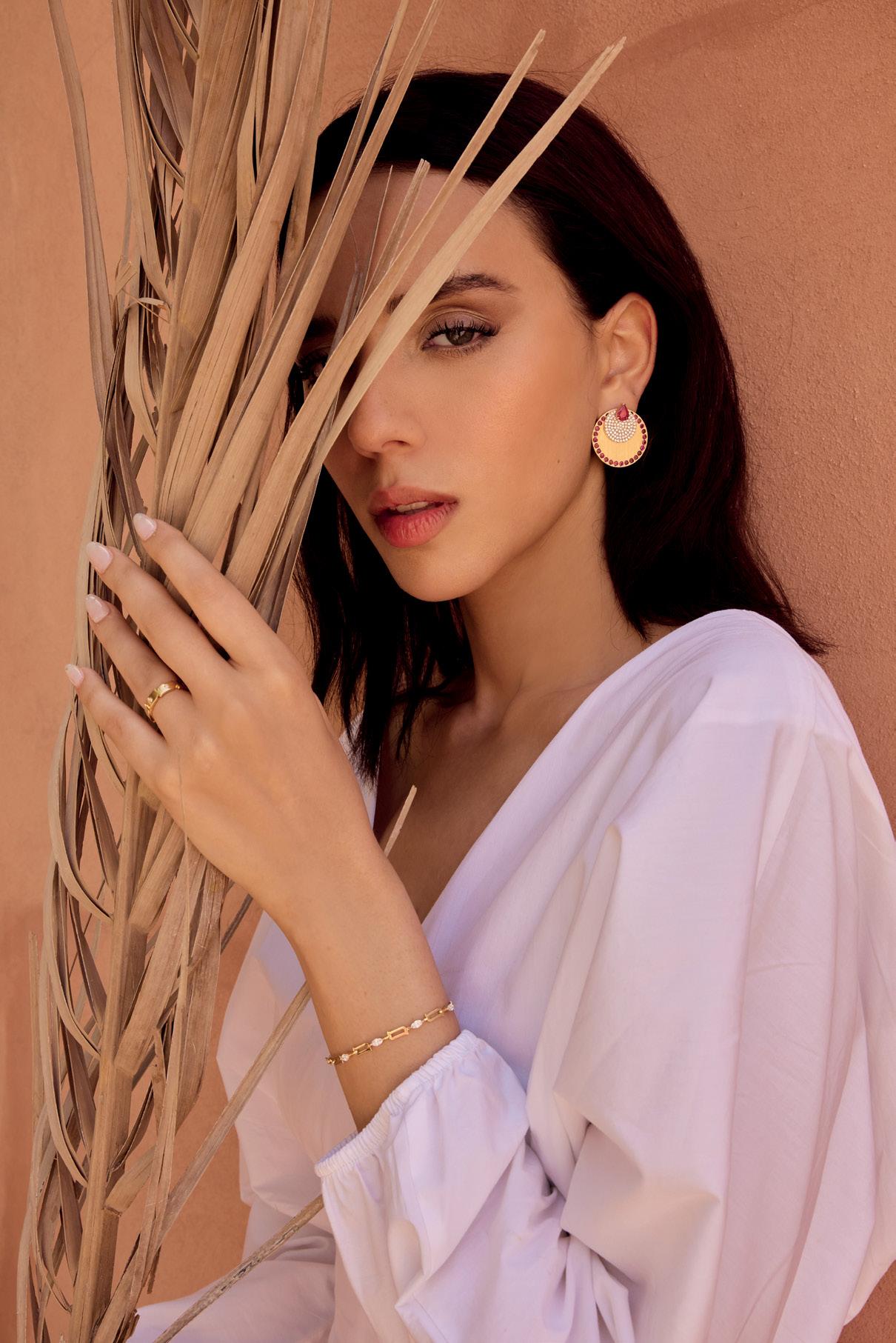
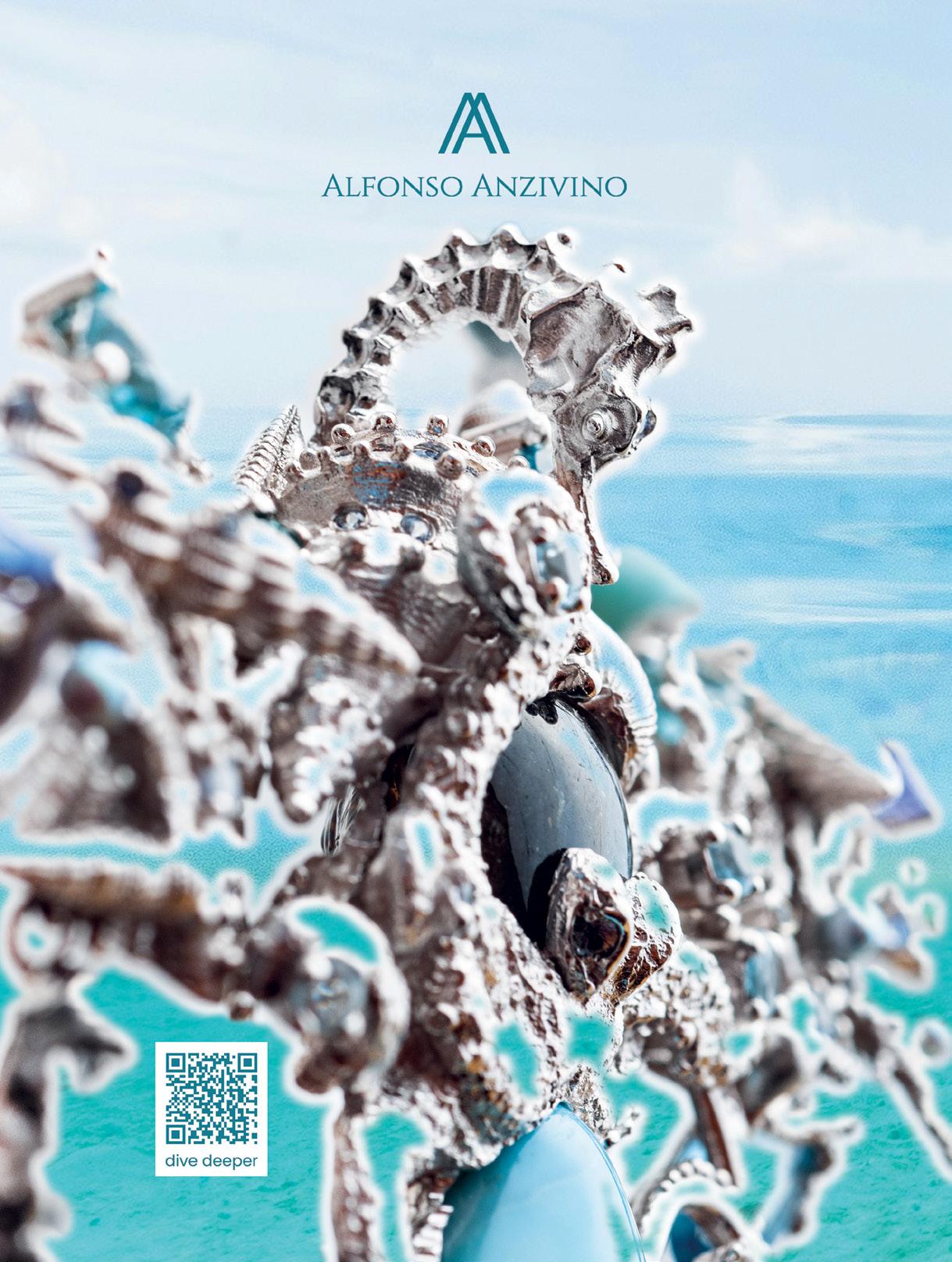

by Antonella Garello
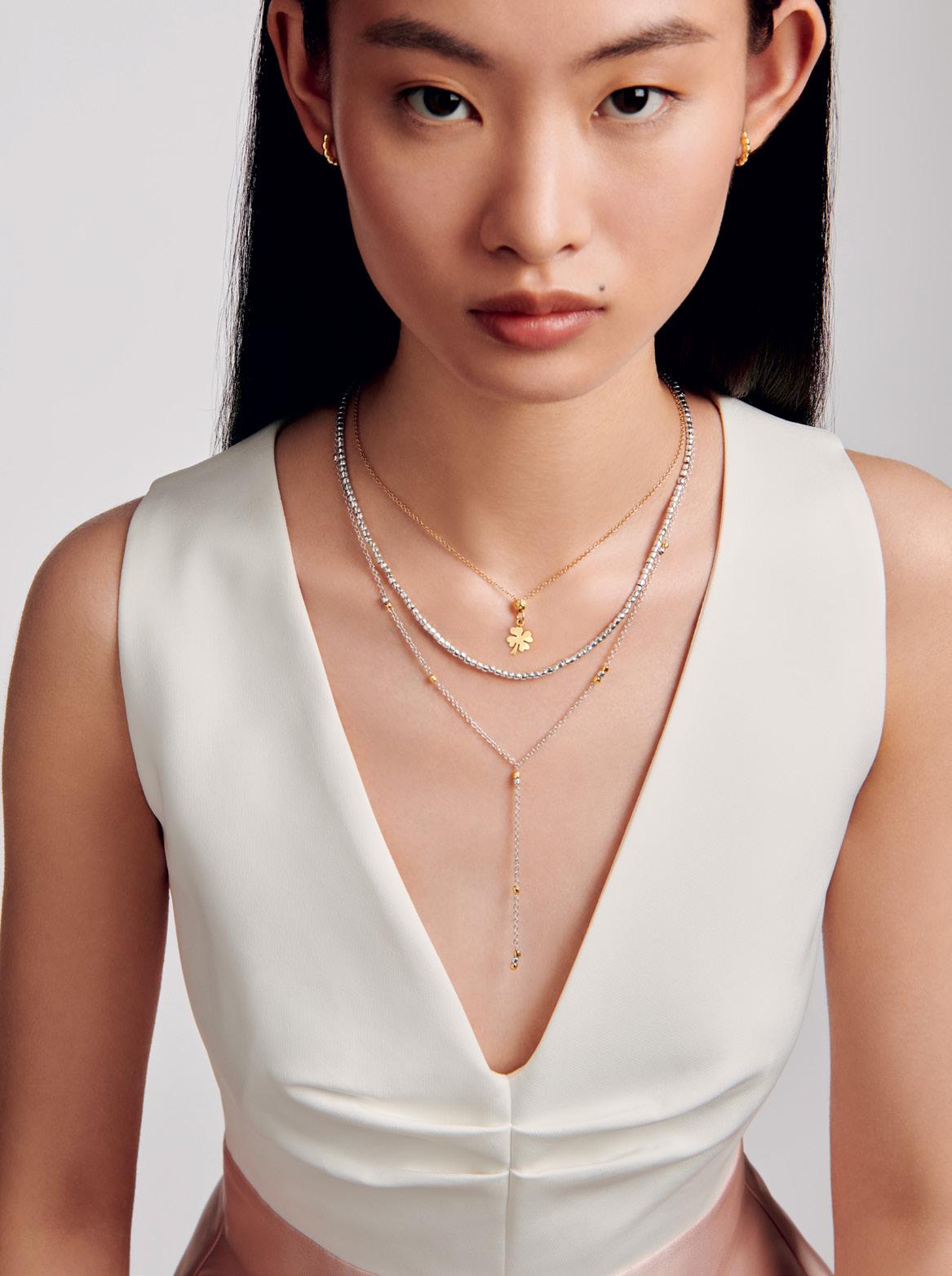
Alzi la mano chi non ha mai regalato - o non si è mai regalato o fatto regalare - un ciondolo DoDo… Nei suoi trent’anni di esistenza i gioielli del brand, tutti componibili a piacere, sono stati testimoni dei momenti importanti nella vita di migliaia di persone appartenenti a tre diverse generazioni, hanno suggellato amori e amicizie, celebrato passioni comuni, hanno fatto ridere, sognare e commuovere, al tempo stesso richiamando l’attenzione sull’importanza di valori fondamentali come la protezione dell’ambiente, l’inclusività, la bellezza di ogni diversità. Il successo di DoDo (oggi il brand è presente nel mondo con 16 punti vendita retail, 435 wholesale e 24 in franchising) è frutto di un’idea che al momento del lancioera il 1994 - andava a rompere le regole della gioielleria tradizionale: realizzare ciondoli con un solo grammo d’oro da infilare in un semplice cordino colorato, associati a messaggi dal significato universale, divertenti, romantici, incoraggianti, da dedicarsi o da dedicare a una persona cara. In trent’anni esatti DoDo ha concepito centinaia di charms, genderless e adatti a ogni età, combinabili tra di loro e con altri componenti iconici del brand come rondelle, granelli, pepite, essentials, studiati perché ciascuno possa creare il proprio DoDo ed esprimere al meglio la propria individualità, tanto più che nel tempo all’oro si sono aggiunti molti altri materiali come l’argento, le pietre naturali, i diamanti, la ceramica, la plastica riciclata, il titanio, gli smalti. L’altro grande fiore all’occhiello del brand è la sensibilità da sempre rivolta alla natura e alle persone, e tradotta in azioni concrete che vanno dall’adesione al protocollo sulla sostenibilità stabilito dal gruppo Kering, cui DoDo appartiene, al sostegno a iniziative ambientali e sociali, cui dedica anche gioielli che contribuiscono a rafforzare e ampliare la community del brand intorno a valori comuni. Da 18 anni, per esempio, DoDo supporta le attività di WWF Italia, quest’anno aderendo al progetto mirato alla conservazione della Foca Monaca del Mediterraneo: a Giugno ha trasformato questo amatissimo mammifero in un charm già molto richiesto dal pubblico, in oro rosa 9K e smalto grigio effetto madreperla applicato a mano, col suo tenero messaggio «Sei così funny!». Per il quinto anno consecutivo, inoltre, DoDo sosterrà l’impresa sociale Tēnaka impegnata nel ripristino delle barriere coralline di Tioman, in Malesia: l’obiettivo è risanare 500 metri quadrati di barriere coralline danneggiate, che andranno ad aggiungersi ai 2500 già restaurati negli anni passati. Per celebrare questa partnership, DoDo ha lanciato un bracciale realizzato con elementi in plastica derivata da bottiglie in PET, riciclabili al 100%, impreziosito da nuove rondelle in

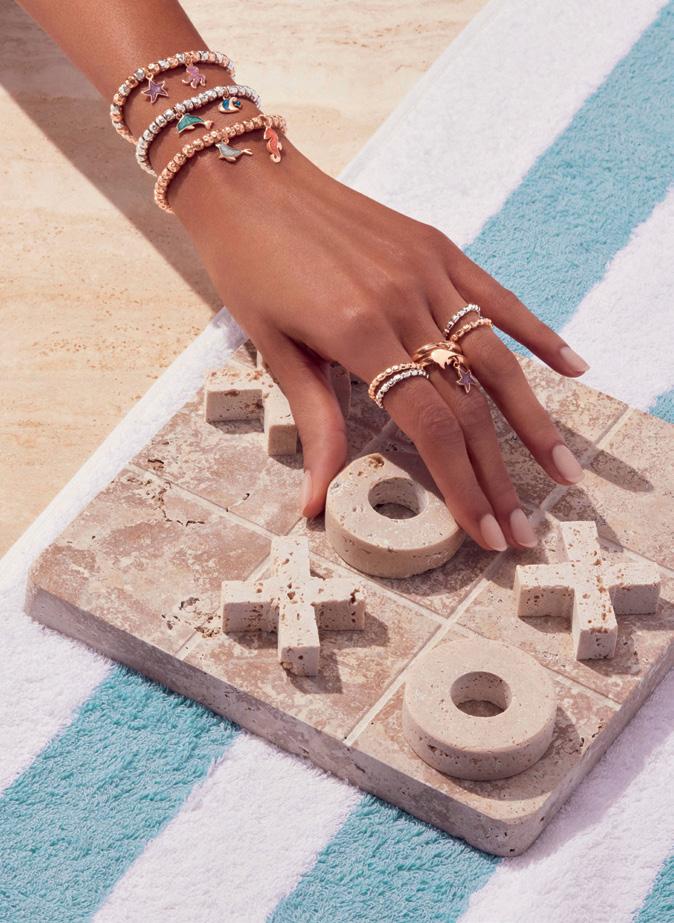
argento. DoDo sostiene inoltre il progetto Casa Arcobaleno, promosso da @spazioapertoservizi Onlus in collaborazione col Comune di Milano, che accoglie i giovani discriminati dalle famiglie di origine a causa del loro orientamento sessuale, identità di genere o per il percorso di transizione intrapreso. Il ciondolo puzzle in oro rosa 9K e smalto rainbow («It’s a match!»), lanciato l’anno scorso in occasione del Pride Month, celebra proprio l’inclusività come valore fondante della filosofia DoDo.
Questo compleanno a cifra tonda, insomma, non celebra solo quello che è stato e indubbiamente è un grande successo di mercato, ma anche e soprattutto i valori che lo hanno determinato e intorno ai quali migliaia di persone continuano a riconoscersi. DoDo ha festeggiato i suoi 30 anni in primavera con un grande evento al teatro Alcione di Milano e, per la gioia della sua community, anche lanciando il nuovo charm celebrativo, Dado, col suo messaggio «Cogli l’occasione!». Su ogni faccia del cubo, un simbolo che ripercorre la storia e l’identità del brand: al numero 1 corrisponde un diamante brown, gemma da sempre cara a DoDo; al due proprio il dodo, animale ormai estinto originario delle Mauritius, ispiratore del brand; tre X rappresentano le tre decadi di vita di DoDo; al quattro corrisponde il Quadrifoglio, simbolo del charm DoDo più venduto; cinque sono le punte di una Stellina - altro simbolo iconico - mentre sei cuoricini sottolineano il lato romantico del


brand. DoDo ha anche lanciato una serie di nuove proposte, in equilibrio tra presente e celebrazioni del passato. La collezione Prêt-àDoDo riprende il concetto dei primi successi: sette bracciali con cordini in nuovi colori, con granelli, rondelle e ciondoli iconici come la Luna, il Cuore, il Quadrifoglio, la Stellina, la Coccinella e - in esclusiva e-commerce - il Drago e l’Unicorno. La collezione Messages from the Sea comprende invece charms in oro rosa e smalti con sfumature perlate, ispirati alle creature marine, tra cui il nuovo charm Foca. Punta sul tema del gioco, infine, la nuova campagna DoDo 2024, “Let’s play in the House”. Riuniti nella House of DoDo intorno a diversi giochi universalmente riconoscibili, gli ambassador Alice Pagani, Giacomo Giorgio e Mikaela Neaze Silva si raccontano attraverso i gioielli di DoDo. La campagna è curata dall’agenzia L’amour extreme, il duo creativo Lebon + Bourgeois ha realizzato scatti indossati, still life e video. DoDo promette insomma di continuare a farci sognare. Messaggi come «Portami con te», «Avanti tutta» «Abbracciami forte», «Sai fare miracoli» «Uno su mille» sono destinati ad accompagnare anche le generazioni future.

The brand,which is part of the Kering Group, celebrated its birthday this year with a big event in Milan and the launch of a celebratory charm,as well as new proposals designed to captivate its community
Raise your hand if you have never given or bought or had a DoDo pendant given to you... In its 30 years of existence, the brand’s jewelry, all of which can be put together however you want,has witnessed important momentsinthelivesofthousandsofpeoplebelonging to three different generations; it has sealed loves and friendships, celebrated common passions, made peoplelaugh,dreamandmove,whileatthesametime drawing attention to the importance of fundamental values such as protecting the environment,inclusivity, and the beauty of all diversity. DoDo’s success (the brand is now worldwide with 16 retail outlets, 435 wholesalers and 24 franchises) is the result of an idea that, at the time of its launch back in 1994, was going to break the rules of traditional jewelry: making pendant with a single gram of gold to be strung on a simple colored cord, associated with messages with universal meaning, fun, romantic, encouraging, to be self dedicated or to be given to a loved one.In exactly thirty years,DoDo has created hundreds of genderless charms suitable for all ages, which can be mixed and matched with each other and with other iconic components of the brand such as rondelle, granelli, pepite,essentials,designed so that everyone can create their own DoDo and express their individuality to the fullest, particularly since over time gold has been joined by many other materials such as silver,natural stones, diamonds, ceramics, recycled plastic, titanium, and enamels. The brand’s other major feather in its cap is its long-standing sensitivity to nature and people, which has been translated into solid actions ranging from adhering to the sustainability protocol established by the Kering group, which DoDo belongs to, to supporting environmental and social

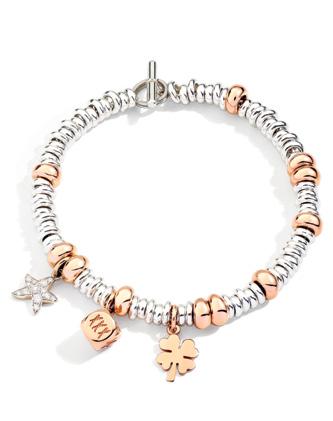
initiatives, which it also dedicates jewelry to that helps strengthen and broaden the brand’s community around common values. For 18 years, for example, DoDo has been supporting the work of WWF Italy,this year joining the project aimed at the conservation of the Mediterranean Monk Seal: in June,it transformed this beloved mammal into a charm that is already in great demand among the public, in 9K rose gold and hand-applied gray mother-of-pearl-effect enamel, with its tender message“You’re so funny!”Also,for the fifth consecutive year, DoDo will support the social enterprise Tēnaka which helps to restore coral reefs in Tioman,Malaysia: the goal is to restore 500 square meters of damaged coral reefs,which will be added to the 2,500 that have already been restored in past years. To celebrate this partnership, DoDo has launched a bracelet made from plastic elements derived from PET bottles, which are 100% recyclable, and embellished with new silver rondelle.DoDo also supports the Casa Arcobalenoproject,promotedby@spazioapertoservizi Onlus in collaboration with the City of Milan, which takes in young people discriminated against by their families of origin because of their sexual orientation, gender identity or the transition process they have chosen.The 9K rose gold and rainbow enamel puzzle pendant (“It’s a match!”),launched last year for Pride Month, celebrates inclusivity as a founding value of

the DoDo philosophy.This big birthday thus celebrates not only what has been and undoubtedly is a great market success,but also and above all the values that drove it and which thousands of people continue to identify with.DoDo celebrated its 30th anniversary in the spring with a big event at the Alcione Theater in Milan and, much to the delight of its community, by launching its new celebratory Die charm (Dado),with itsmessage,“Takeyourchance!”.Oneachfaceofthedie isasymbolthattracesthebrand’shistoryandidentity: the number 1 corresponds to a brown diamond, a gemstone that has always been dear to DoDo; two is the dodo, a now-extinct animal native to Mauritius and the brand’s inspiration; three Xs represent DoDo’s three decades of life; four corresponds to the four-leaf clover,thesymbolofDoDo’sbest-sellingcharm;fiveare the tips of a Starlet, another iconic symbol, while six little hearts underscore the brand’s romantic side. DoDo also launched a series of new proposals, balancing the present with celebrations of the past.
The Prêt-à-DoDo collection picks up the concept of the early successes: seven cord bracelets in new colors, with granelli, rondelle and iconic charms such as the Moon, Heart, Four-leaf clover, Starlet, Ladybug and, as an e-commerce exclusive, the Dragon and Unicorn. The Messages from the Sea collection, on the other hand, includes rose gold and pearl-shaded enamel charms inspired by sea creatures, including the new Seal charm. Lastly, the new DoDo 2024 campaign, “Let’s play in the House”, focuses on the theme of play. Gathered in the House of DoDo around several universally recognizable games, ambassadors Alice Pagani, Giacomo Giorgio and Mikaela Neaze Silva tell their stories through DoDo’s jewelry. The campaign is curated by the agency L’amour extreme, and the creative duo Lebon + Bourgeois created model,still life and video shots.
In short, DoDo promises to continue to let us dream. Messages such as “Take me with you,” “Full ahead”, “Hug me”,“You work miracles”and“I’m the lucky one” are bound to support future generations as well.


by Giuseppe Arena

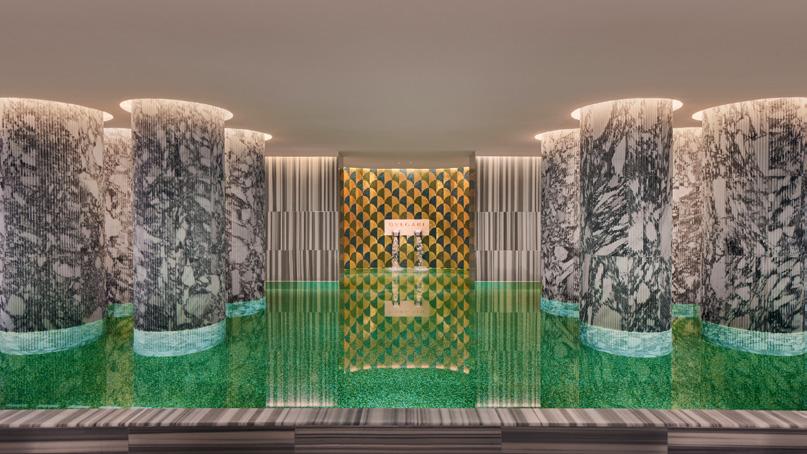
Esclusivo già a partire dalla posizione: situato nel cuore pulsante della Città Eterna, nella centralissima Piazza Augusto Imperatore nel rione Campo Marzio, il Bvlgari Hotel Roma è una porta d’ingresso alle meraviglie del centro storico. L’Hotel offre un accesso privilegiato a Via del Corso, Piazza di Spagna e alla storica boutique Bvlgari di Via Condotti. Esplorare la città da questa posizione è già un viaggio continuo tra arte e storia: ma varcare la soglia del Bvlgari Hotel è come intraprendere un viaggio tra passato e presente, dove ogni dettaglio è stato pensato per celebrare l’arte e la cultura italiana, in particolare quella dell’antica Roma. I marmi pregiati, i tessuti ricercati e gli arredi di design contemporaneo si fondono armoniosamente con gli affreschi antichi e le sculture classiche, creando un’atmosfera di raffinata opulenza, che rievoca gli elementi distintivi del brand Bvlgari. Le 114 camere e suite, ognuna un capolavoro di stile e comfort, offrono panorami mozzafiato sulla città, dai tetti di terracotta alle maestose cupole delle basiliche. Ogni spazio è una tela su cui si dipingono momenti di relax e piacere, con letti sontuosi, bagni in marmo e ogni moderna comodità immaginabile. Qui, il lusso non è solo visibile, ma palpabile in ogni dettaglio. Non fa eccezione il ristorante - Niko Romito - che prende il nome dallo chef stellato che lo guida: qui la gastronomia è un’arte, le ricette iconiche e i sapori più autentici della tradizione italiana sono reinterpretati con maestria e creatività. Ogni piatto è una poesia di sapori, una danza di ingredienti selezionati con cura e preparati con passione. Situato al quinto piano con vista sul Mausoleo di Augusto, il Ristorante Niko Romito non è solo un’esperienza culinaria, ma anche un capolavoro di design. Ogni dettaglio, dagli arredi eleganti, alle pareti in legno mogano, agli accenti di lusso, è stato pensato per creare un ambiente raffinato e accogliente.

Tra le meraviglie del Bvlgari Hotel Roma non si può dimenticare la Spa, un vero e proprio santuario del benessere e della rigenerazione che richiama l’atmosfera delle antiche terme romane. Colonne di marmo si innalzano dalla piscina, mentre vetri colorati tingono l’ambiente di una luce calda e avvolgente. Con i suoi 1.500 metri quadrati, la Bvlgari Spa può essere considerata come un rifugio dove ogni ospite potrà riequilibrare corpo, mente e spirito. Dispone di otto sale per trattamenti firmati Augustinus Bader e una Spa Suite con una grande vasca in onice verde. La piscina coperta di 20 metri è decorata con scintillanti mosaici, ispirati alle celebri Terme di Caracalla. Ma ciò che rende davvero unico il Bvlgari Hotel Roma è il suo servizio impeccabile. Ogni membro del team, con una discrezione e una professionalità ineguagliabile, si dedica con passione a trasformare ogni soggiorno in un’esperienza memorabile. Tutti, come abili maestri di un’arte antica, anticipano i desideri degli ospiti con un’intuizione quasi magica, superando ogni aspettativa. Ogni dettaglio del completo e curato servizio crea un’atmosfera di calore e accoglienza che avvolge l’ospite in un abbraccio di ospitalità e raffinatezza senza tempo. In equilibrio perfetto tra passato e presente, il Bvlgari Hotel Roma non è solo un albergo, ma un poema vivente che celebra il lusso e la storia. Ogni angolo è un sussurro di eleganza senza tempo, ogni dettaglio un tributo alla magnificenza di Roma e al prestigio del marchio Bvlgari. Qui, nel cuore della Città Eterna, l’anima del passato si intreccia con il presente, creando un luogo dove la memoria e il sogno si fondono.

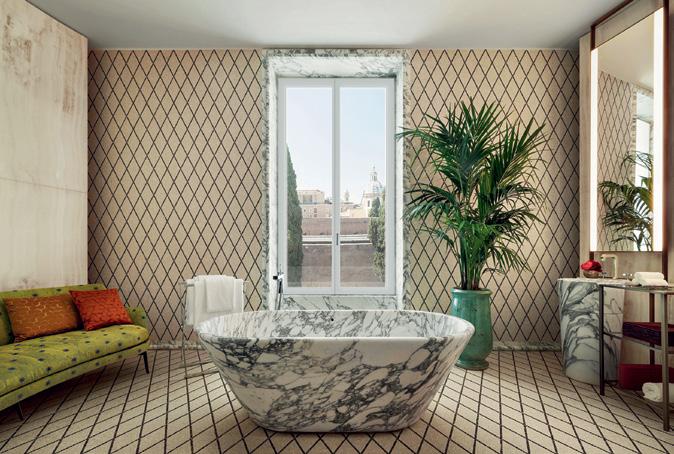
Among the cobblestone streets and majestic remains of ancient Roman civilization,stands a modern jewel that shines with timeless luxury: the Bvlgari Hotel Roma.A real temple of elegance,design and history
Evenitslocationisexclusive:nestledamongthebeating heartofRomeinthecentralPiazzaAugustoImperatore in the Campo Marzio district, the Bvlgari Hotel Roma is a gateway to the wonders of the historic center.The hotel offers privileged access to Via del Corso,Piazza di SpagnaatthefootoftheSpanishStepsandthehistoric Bvlgari boutique on Via Condotti. Exploring the city fromthislocationislikeacontinuousjourneythrough art and history: but crossing the threshold of the Bvlgari Hotel is like embarking on a journey between past and present, where every detail is designed to celebrate Italian art and culture, particularly that of ancient Rome. Fine marble, refined fabrics and
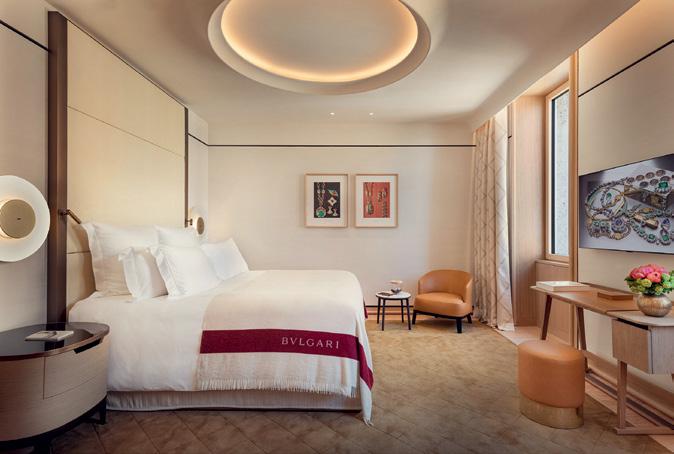
contemporary design furnishings blend harmoniously togetherwithantiquefrescoesandclassicalsculptures, creating an atmosphere of refined opulence, evoking the distinctive elements of the Bvlgari brand.The 114 rooms and suites, each a masterpiece of style and comfort, offer breathtaking views of the city, from terracotta rooftops to majestic basilica domes. Each space is a canvas on which moments of relaxation and pleasure are painted, with sumptuous beds, marble bathroomsandeverymodernconvenienceimaginable. Here, luxury is not only visible, but palpable in every detail. The Niko Romito restaurant, named after the starred chef who leads it is no exception. Here the cuisine is an art form: iconic recipes and the most authentic flavors of Italian tradition are reinterpreted with mastery and creativity. Each dish is a poem of flavors, a dance of carefully selected and passionately prepared ingredients. Located on the fifth floor overlooking the Mausoleum of Augustus, the Niko Romito Restaurant is not only a culinary experience but also a masterpiece of design.Every detail,from the elegant furnishings to the mahogany wood walls and the luxurious accents, is designed to create a refined and welcoming environment. Among the wonders of the Bvlgari Hotel Roma, we cannot forget the Spa, a true sanctuary of well-being and regeneration that calls to mind the atmosphere of ancient Roman baths.
Marble columns rise from the pool,while stained glass tints the room with warm, enveloping light. With its 1,500 square meters, the Bvlgari Spa can be regarded as a haven where each guest can bring body, mind and spirit back into balance. It has eight signature Augustinus Bader treatment rooms and a Spa Suite with a large green onyx tub.The 20-meter indoor pool is decorated with sparkling mosaics, inspired by the famous Caracalla Baths. But what really makes the Bvlgari Hotel Roma unique is its impeccable service. Each team member works passionately to ensure each stay into a memorable experience through their unparalleled discretion and professionalism. Like skilled masters of an ancient art, they anticipate guests’wishes with almost magical insight, exceeding all expectations.Every detail of the well rounded and attentive service creates an atmosphere of warmth and welcome that envelops the guest in an embrace of timeless hospitality and refinement. Striking a perfect balance between past and present, the Bvlgari Hotel Roma is not just a hotel,but a living poem celebrating luxury and history. Every corner is a whisper of timeless elegance, every detail a tribute to the magnificence of Rome and the prestige of the Bvlgari brand.Here,in the heart of the Eternal City,the soulofthepastintertwineswiththepresent,creatinga place where memory and dreams blend together.
by Salvador Asensio

A/ PRAGNELL Bohemia bracelet
bUn gioiello tutto in oro, elastico, flessibile e senza tempo, disponibile anche in oro rosa.
A rich gold jewel, expandable, flexible and timeless, also availableinrosegold.
B/ RAINBOW K Waterfall necklace
Un design aperto e molto sensuale in oro giallo, vivacizzato da piccoli diamanti tra le sferette.
Anopenandverysensualdesigninyellowgold,enlivenedby smalldiamondssetamidstthelittlespheres.
C/ YVONNE LÉON Lion d’Or ring
Il re della giungla è rappresentato con tutta la maestosità di una criniera dorata. In oro giallo con onice, tsavoriti e diamanti.
The king of the jungle is represented with all the magnificence of a golden mane. In yellow gold with onyx, tsavorites and diamonds.
D/ SAJJANTE Sfera Scroll earrings
Spirali in oro giallo, piene di luce calda e scintillii di diamanti, un motivo classico e intramontabile.
Yellowgoldspirals,fullofwarmlightandsparklingdiamonds, a classic and timeless motif.
E/ VAN CLEEF & ARPELS Perlé Toi et Moi secret watch
Dietro la turchese si nascondono una sfera di madreperla e un movimento al quarzo svizzero. In oro giallo con diamanti. Behind the turquoise a mother-of-pearl sphere and a Swiss quartzmovementarehidden.Inyellowgoldwithdiamonds.


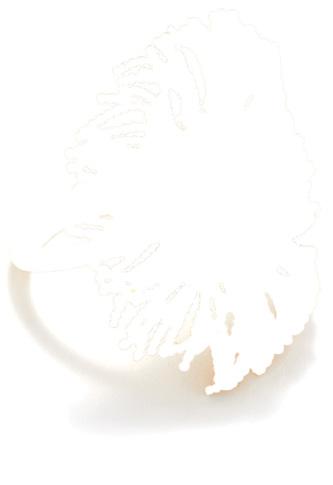


By Domenico Festa

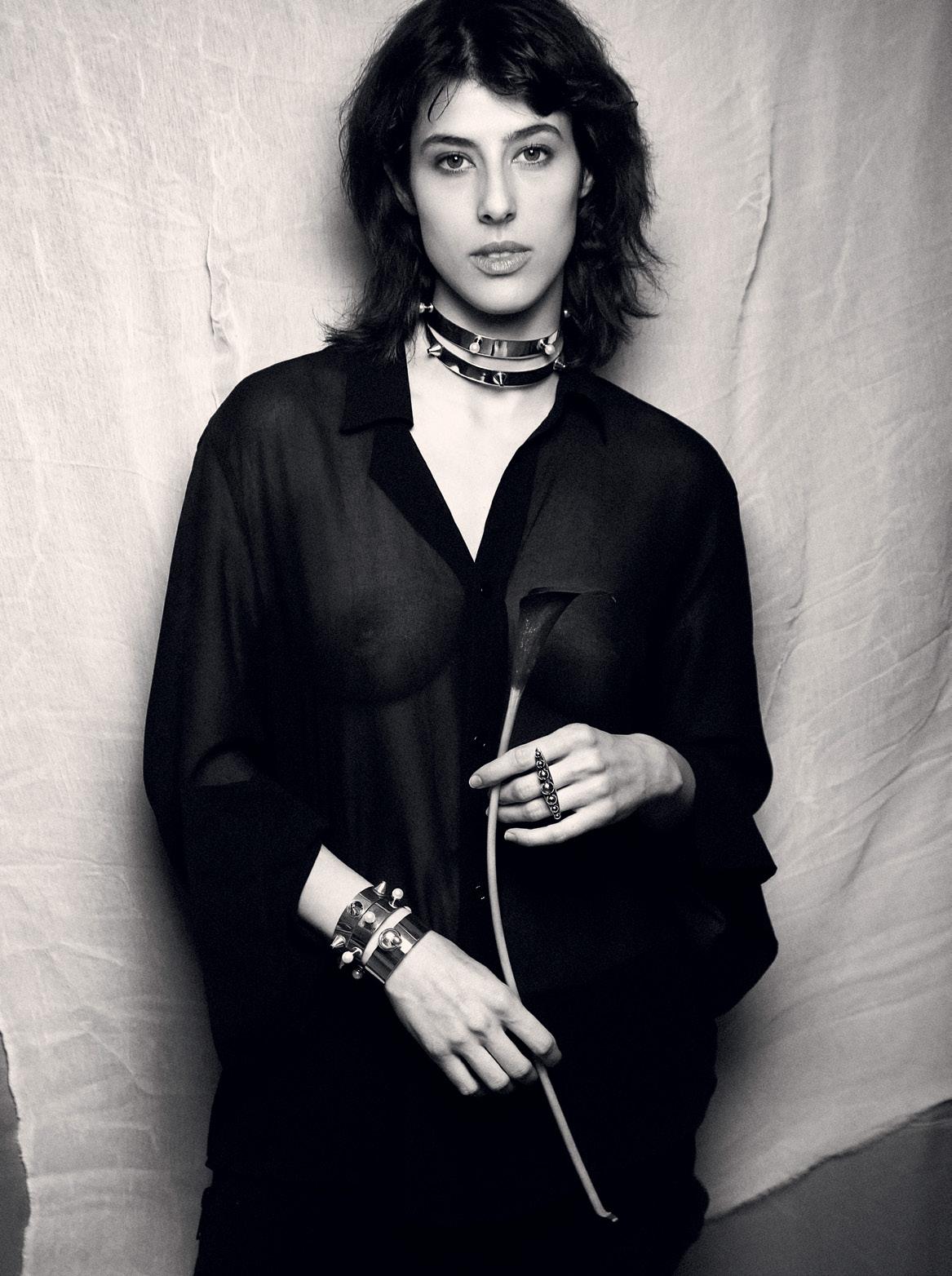
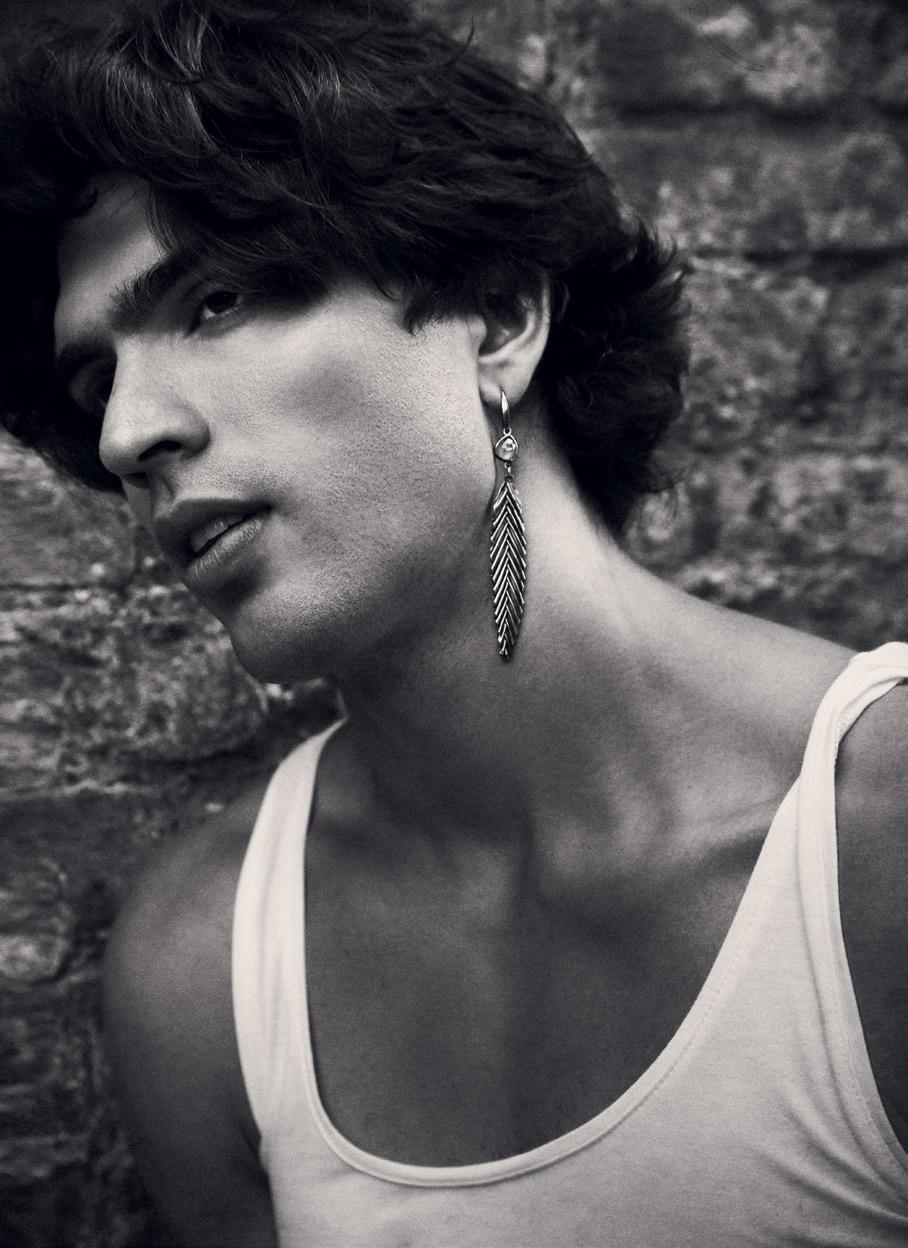

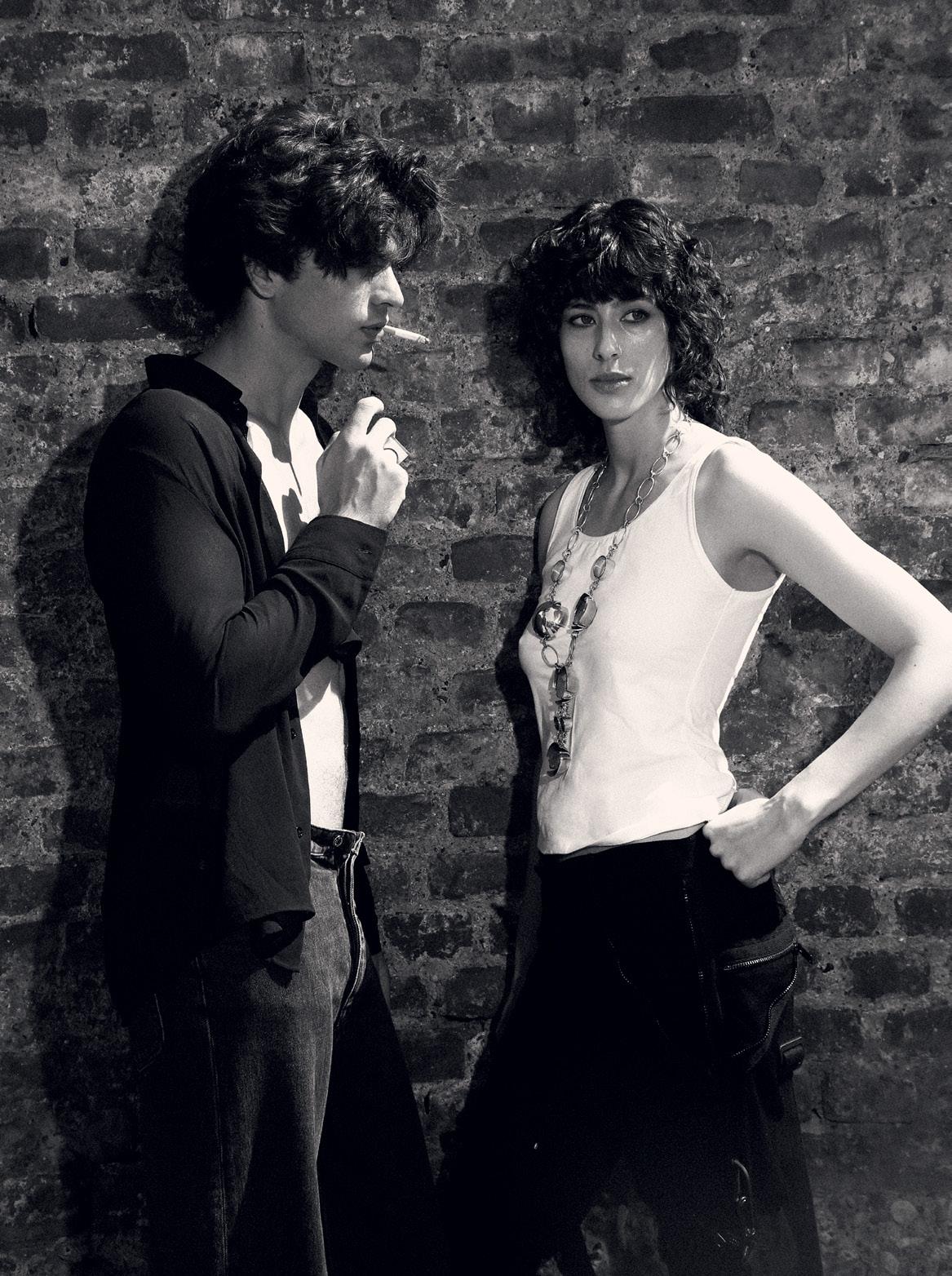

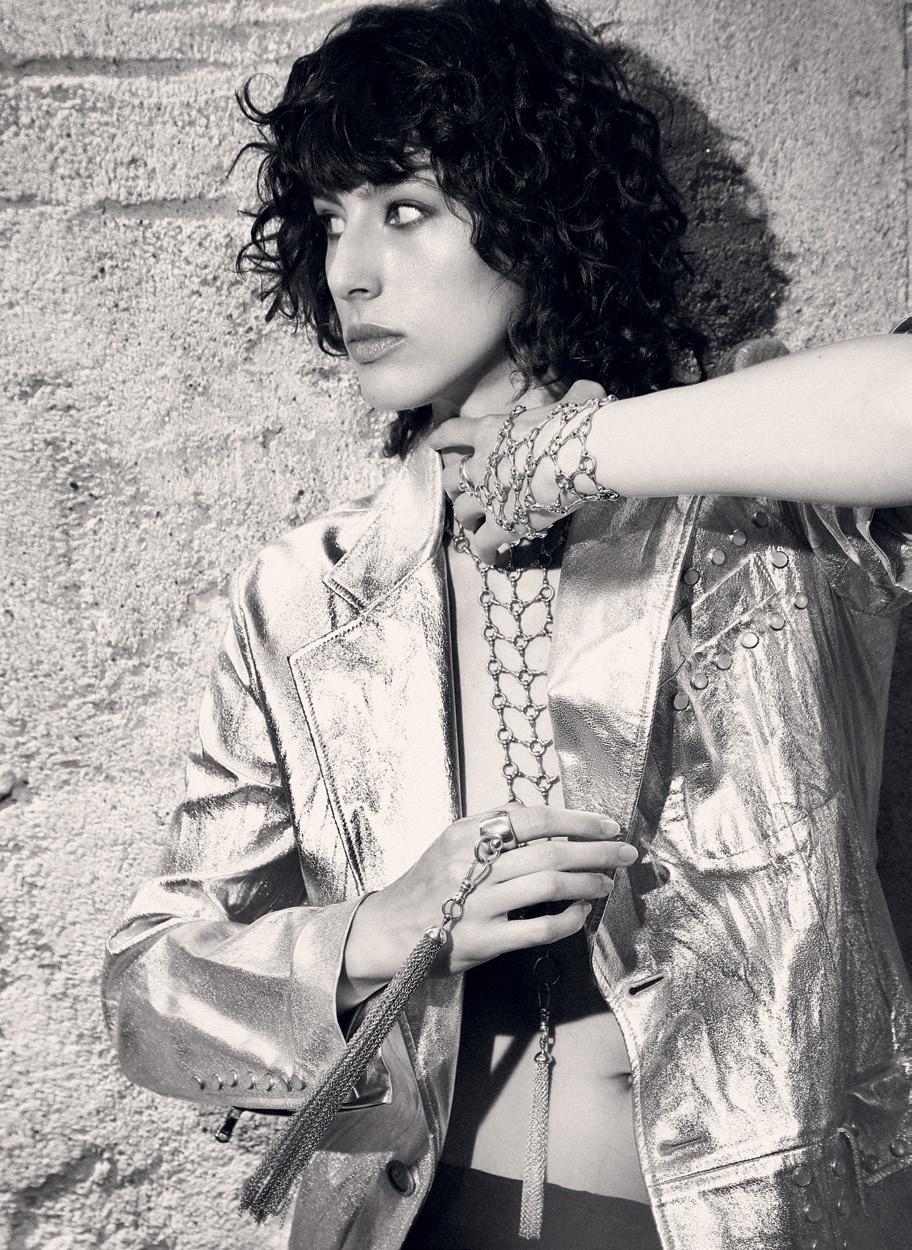
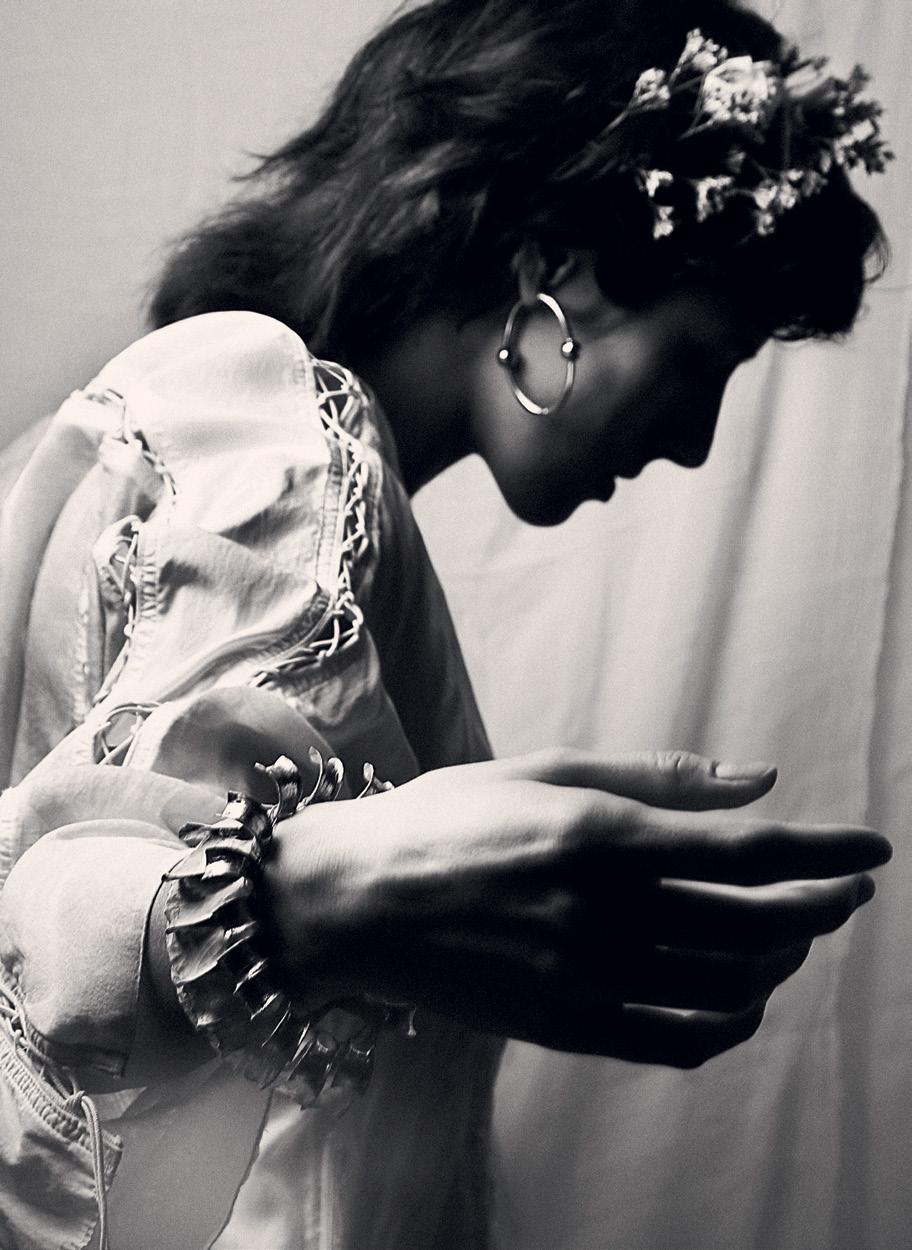
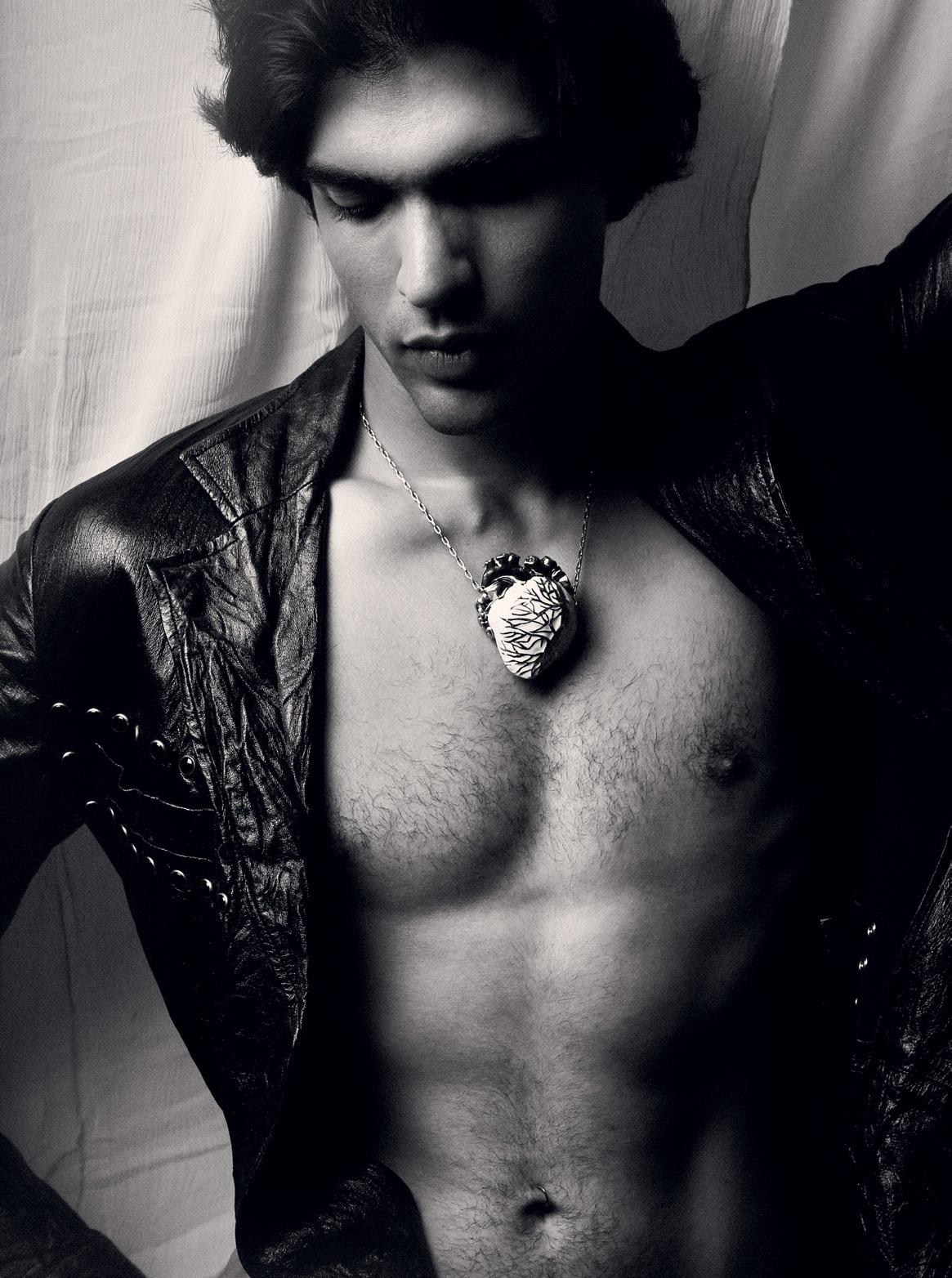
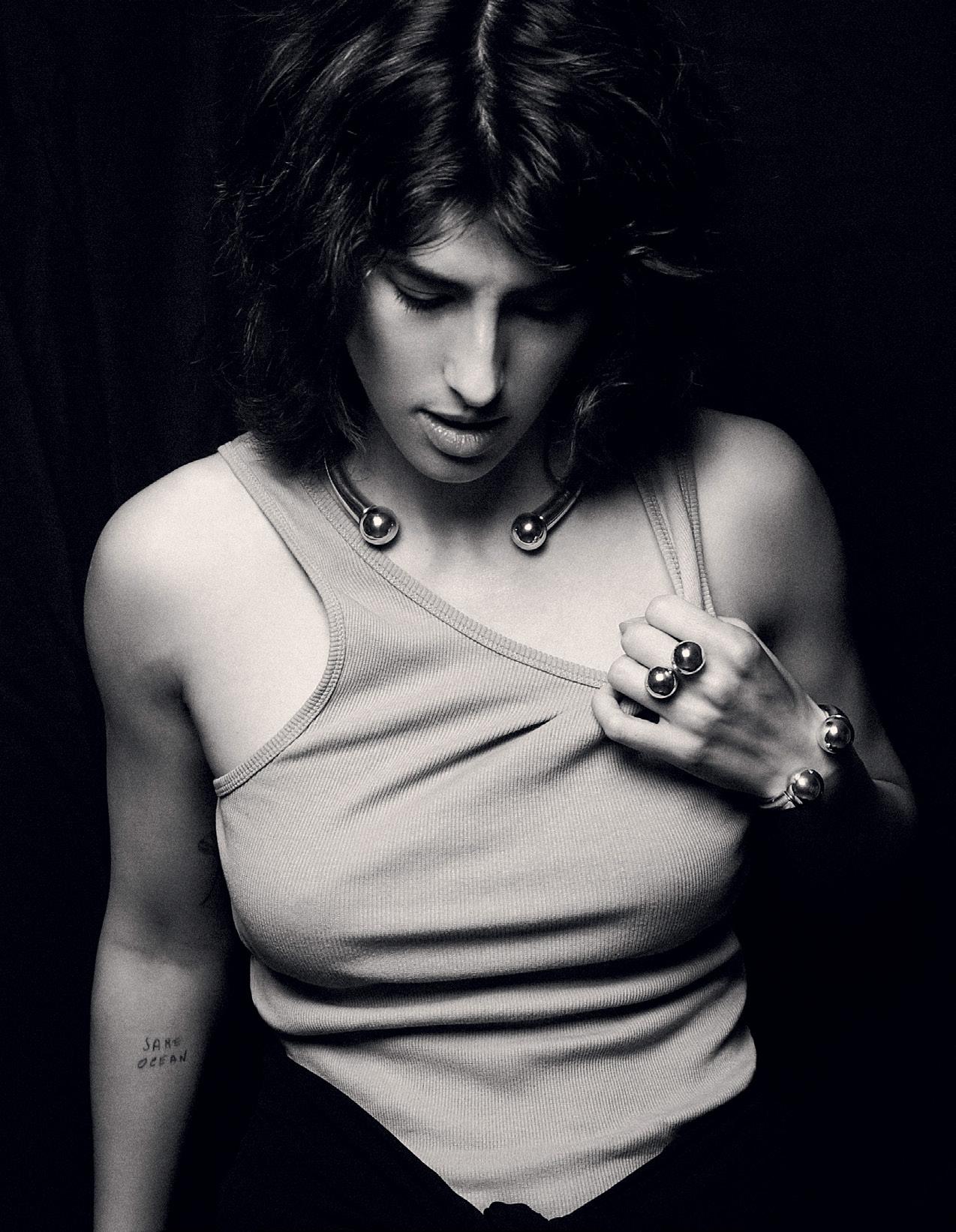

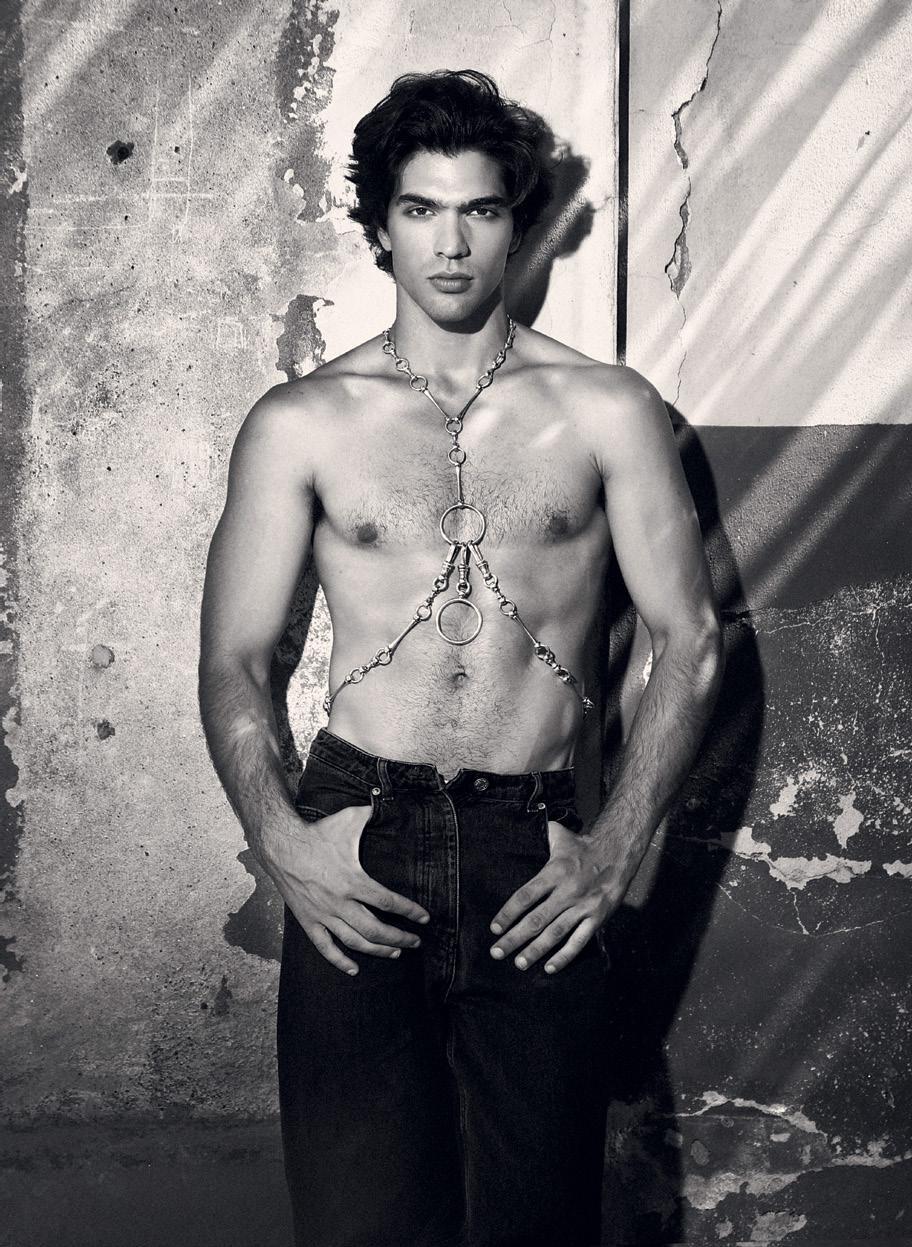
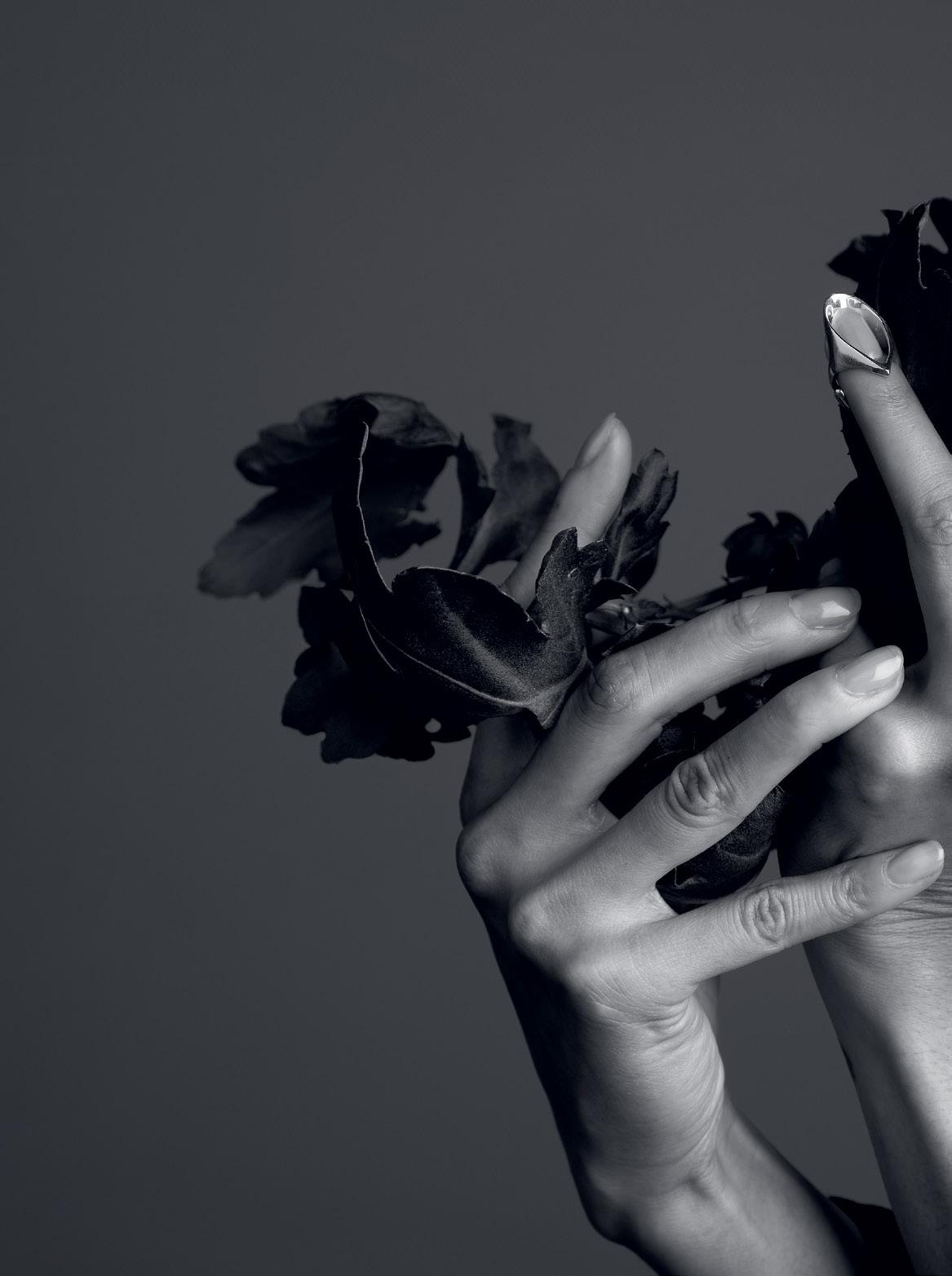
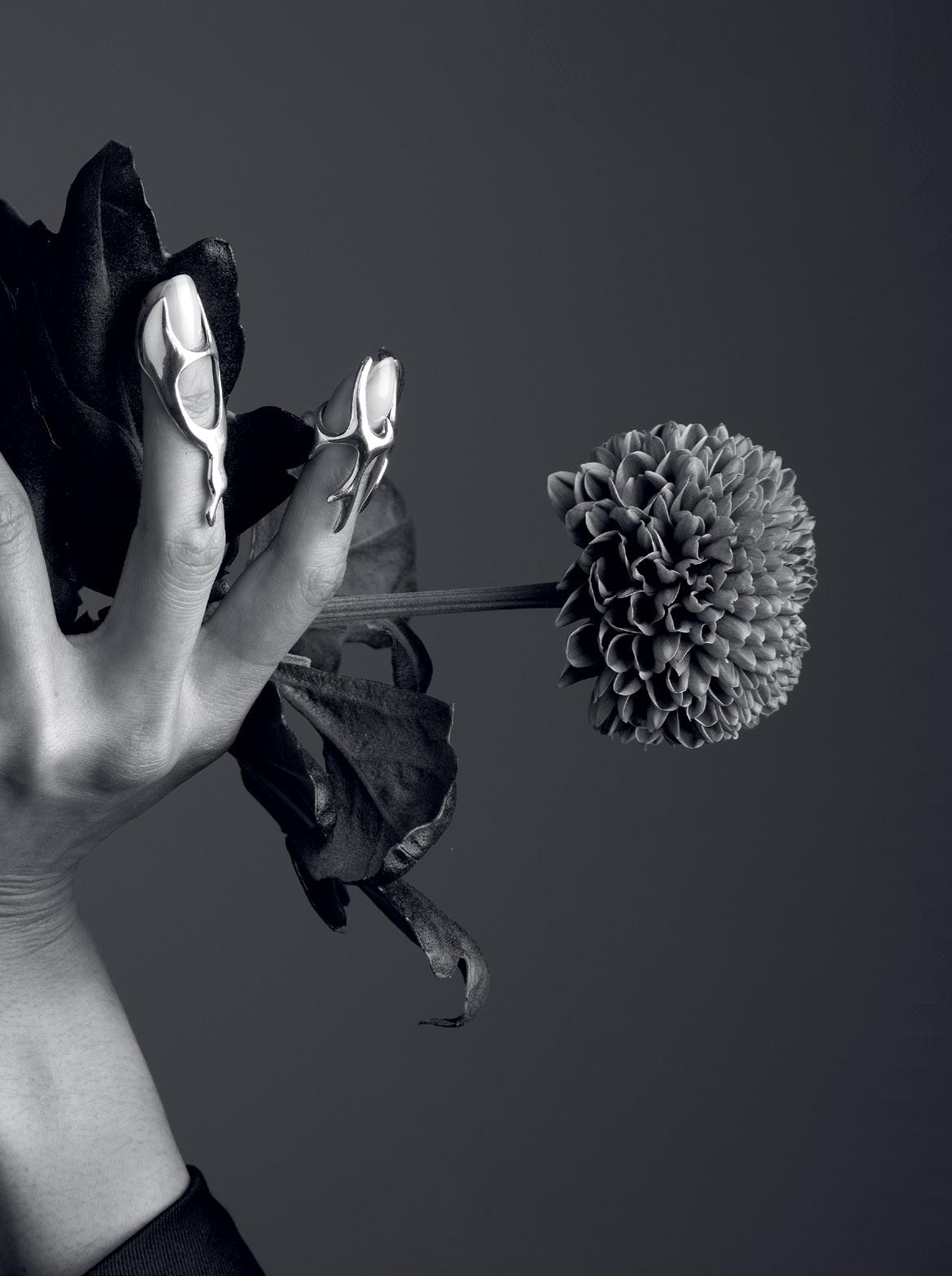
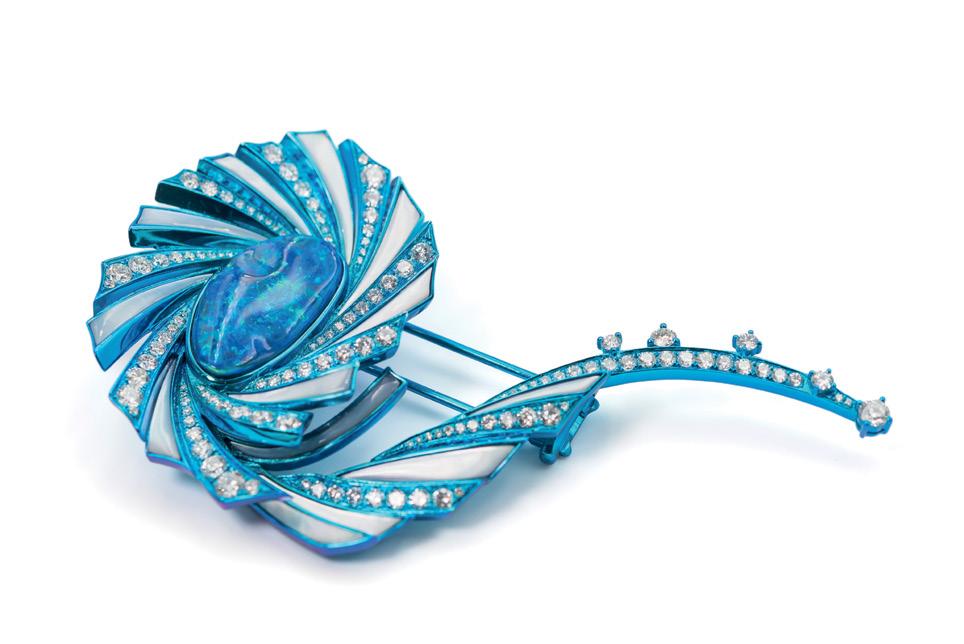
Patrocinata dal Comune di Milano, da Assogemme e CNA, e animata da oltre 400 partecipanti provenienti da più di 60 Paesi in tutto il mondo, la Milano Jewelry Week - MJW torna nel capoluogo lombardo dal 15 al 20 Ottobre, con la sua consolidata formula di evento diffuso, e sempre più internazionale. Alle storiche collaborazioni con AOL (Associazione Orafa Lombarda), ACJ (Association for Contemporary Jewellery), HRD Antwerp, A.N.T.I.C.O (Associazione Nazionale Tutela il Comparto Oro), Assamblage e Scuola Orafa Galdus, si sono infatti aggiunte due partnership prestigiose: Inhorgenta, la principale fiera orafa tedesca e tra le più importanti in Europa, e Piazza Italia, piattaforma multicanale dedicata a facilitare la presenza e l’espansione negli Stati Uniti delle eccellenze italiane.
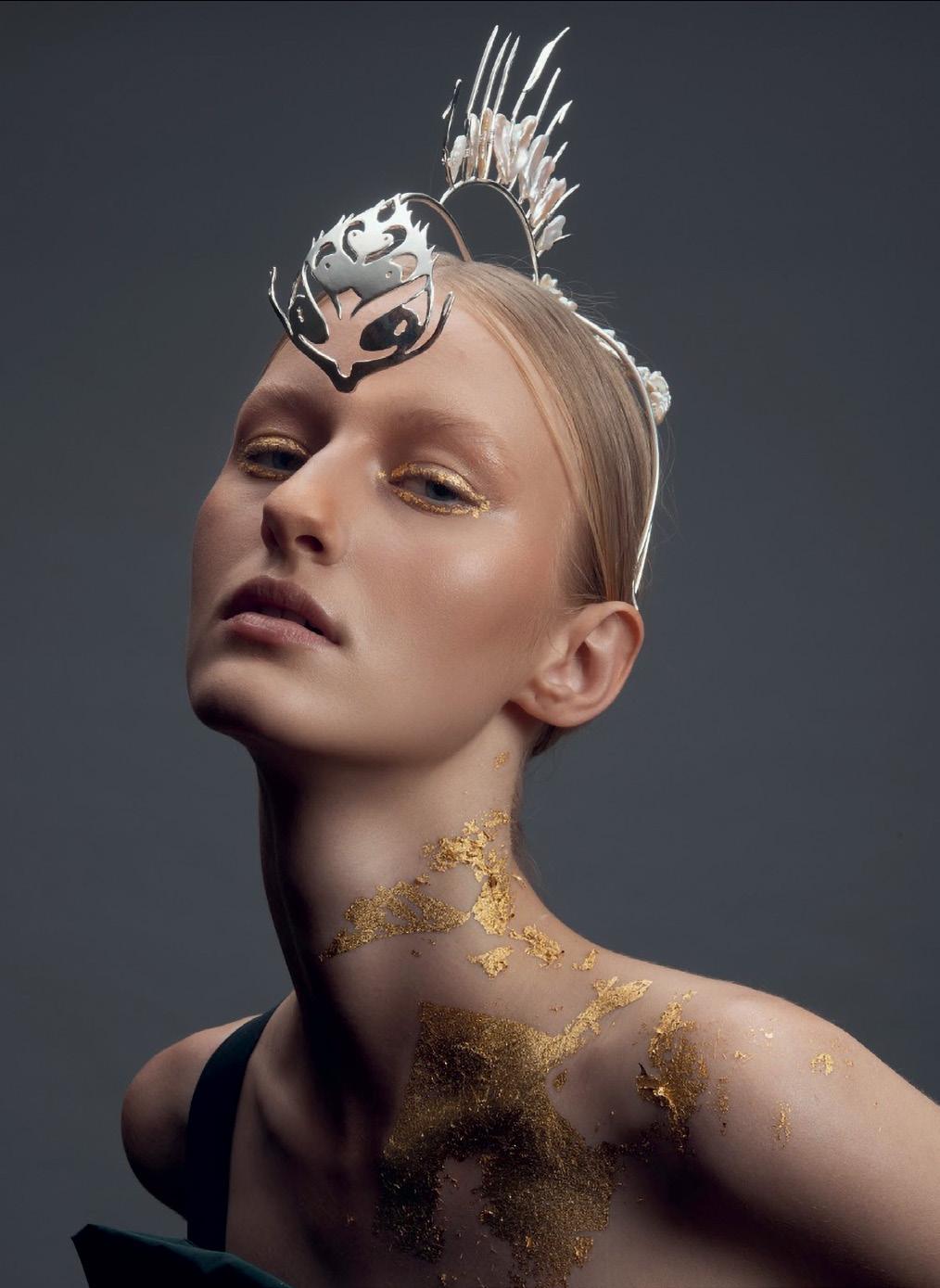
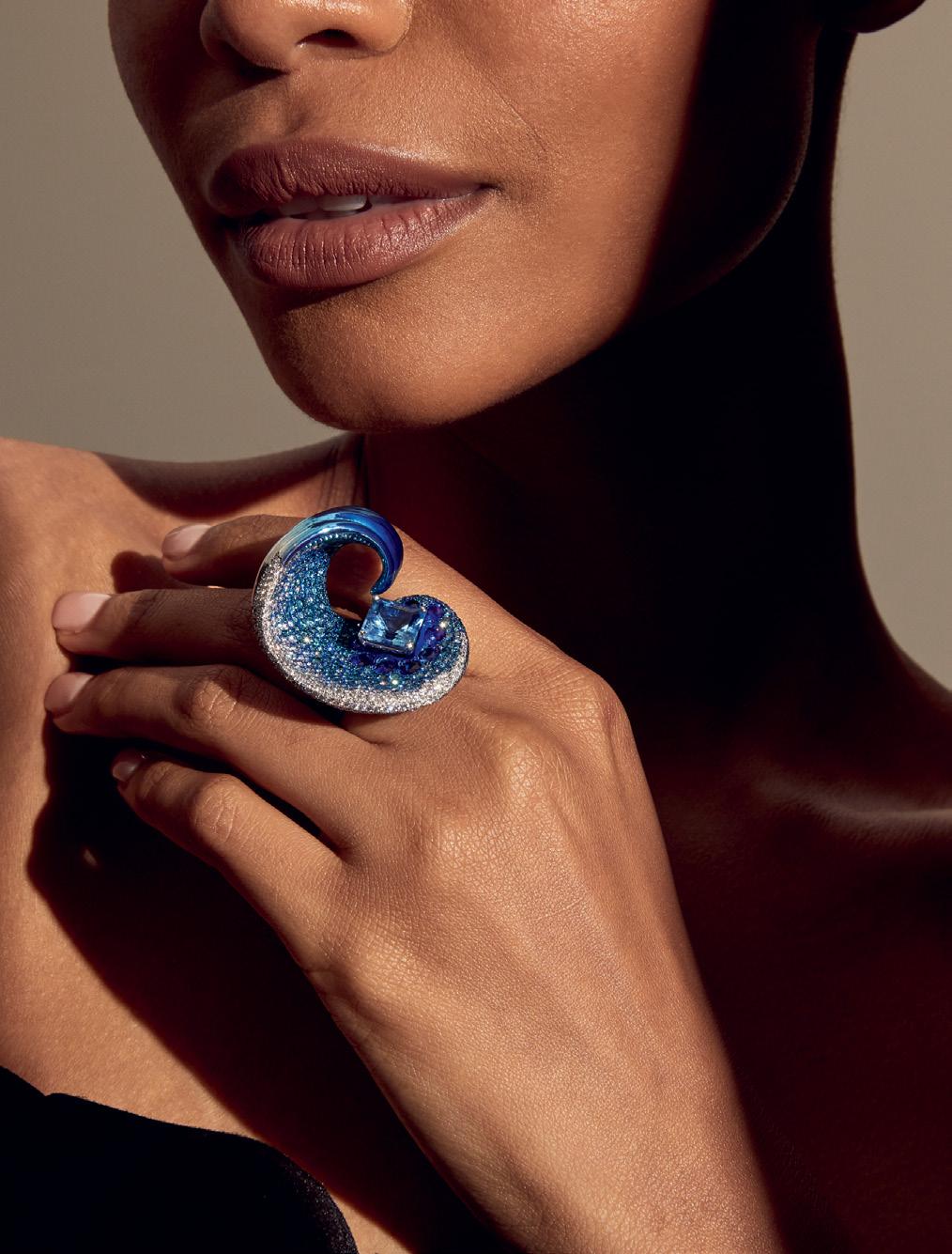

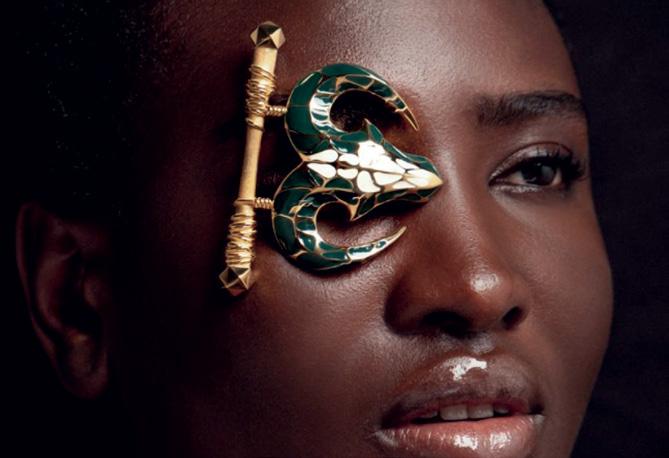
Fitto il programma della Week, come sempre organizzata dal Gruppo Prodes Italia, che prevede in tutto il centro cittadino una serie di experiential journey, mostre, presentazioni di collezioni in anteprima, performance dal vivo, cocktail party, incontri con la stampa: tante occasioni di incontri e nuovi contatti per tutti gli operatori del settore e semplici appassionati. Presso la Pelota e la Scuola Galdus verrà riproposta anche la sessione educational, con workshop, talk e tavole rotonde su temi di attualità che ogni anno registrano grande interesse da parte del pubblico, con sold out per ogni evento. Tra i fiori all’occhiello della manifestazione, Artistar Jewels, giunta alla sua decima edizione, raccoglierà a Palazzo Bovara le creazioni di oltre 230 designer, creatori di gioielli artistici e contemporanei provenienti da tutto il mondo. Le loro opere sono disponibili sul canale di vendita online overjewels.com e pubblicate nel volume Artistar Jewels, presentato durante la MJW per essere distribuito nelle principali librerie italiane e europee oltre a essere inviato a 5000 importanti contatti del settore in tutto il mondo: buyer, galleristi, boutique di lusso, fashion stylist. Una giuria di esperti - tra cui Bryna Pomp, Director, MAD About Jewelry at the Museum of Arts and Design, New York, Alessio Boschi, Founder and Creative Director of Alessio Boschi Jewels, Muriel Piaser, Founder of PRECIOUS ROOM by MP tradeshow & Muriel Piaser Consulting, Romanian National Jewelry Association Assamblage, Guido Solari, Founder and Director of Scuola Orafa Ambrosiana; Director of Via Tadino 30 headquarter, e Shohista Turdiyeva, Editor and Founder of Jewellery Pursuer - selezionerà i tre vincitori e i designer selezionati dalle gallerie facenti parte di Artistar Network, sintesi del lavoro di networking portato avanti da sempre dal progetto di Artistar Jewels. Sempre a Palazzo Bovara saranno inoltre esposti i gioielli dei due guest Angry Jewellery e Chong Ho, mentre un’area sarà interamente dedicata a una selezione di brand curata da Harper’s Bazaar. La Pelota, altra storica location milanese, ospiterà invece The Jewelry HUB, collettiva di 100 brand internazionali, che si presenteranno al pubblico attraverso le proprie collezioni o pezzi unici.
La MJW torna a proporre anche il Talent Show presso la Scuola Orafa Galdus, in collaborazione con Rossana Ricolfi, Coordinatore, Referente e Docente Tecnico dell’istituto, e Andreia Gabriela Popescu, Senior Lecturer presso Assamblage School e pluripremiata artista di gioielli contemporanei. I giovani talenti di scuole e ac-
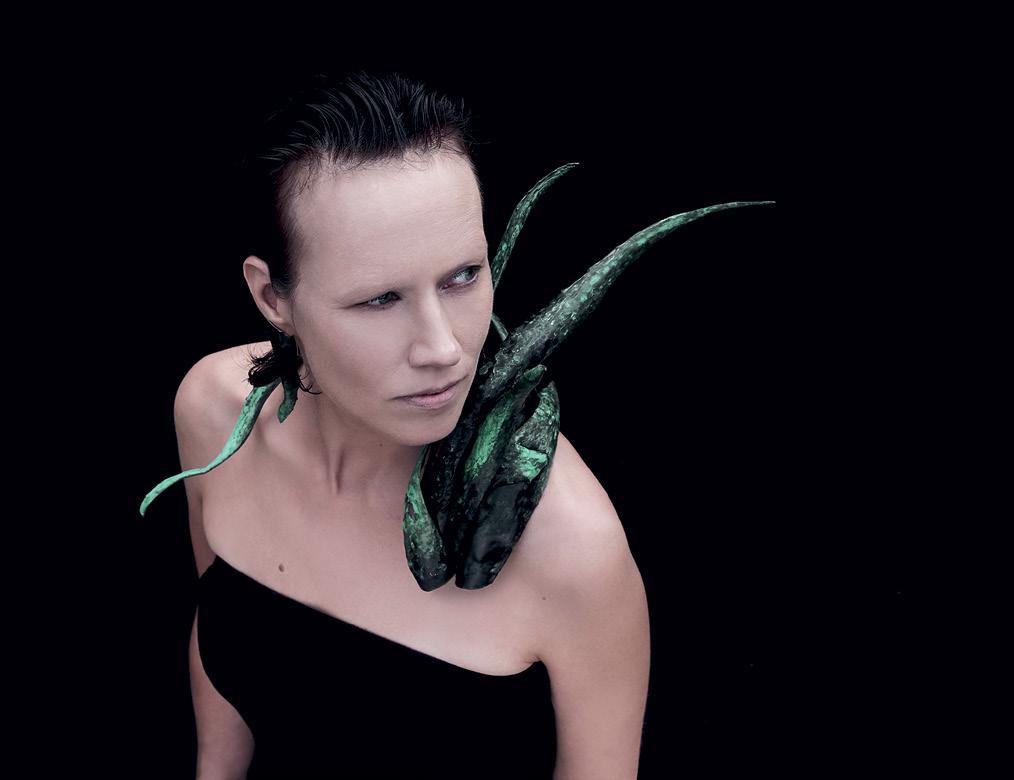
cademie internazionali esporranno le proprie creazioni e parteciperanno automaticamente a due concorsi: il Best Talent Award, assegnato da una giuria di alto profilo, che permetterà ai vincitori di accedere gratuitamente a corsi di alta formazione offerti da scuole internazionali, e il Best Talent by Inhorgenta, che consentirà al vincitore di esporre gratuitamente a Inhorgenta Munich 2025.
Uno dei momenti più emozionanti della MJW sarà sicuramente la MJW Awarding Night, la serata di premiazione, in programma quest’anno il 16 Ottobe, nel corso della quale verranno assegnati più di 30 premi e riconoscimenti: oltre a quelli già menzionati, saranno consegnati: Assamblage Award, Best Exclusive Jewelry Designer, Best in Antique Jewelry, Best in Contemporary Jewels, Best in Creativity, Best in Diamond, Best in Gemstone, Best in Milano, Best in Technique, Best Innovative Design, Best Trend Award, Bryna Pomp Award e The Jewelry HUB Network. Un premio speciale verrà anche assegnato da Piazza Italia a un brand o a un artista indipendente selezionato, che godrà di grande visibilità internazionale.


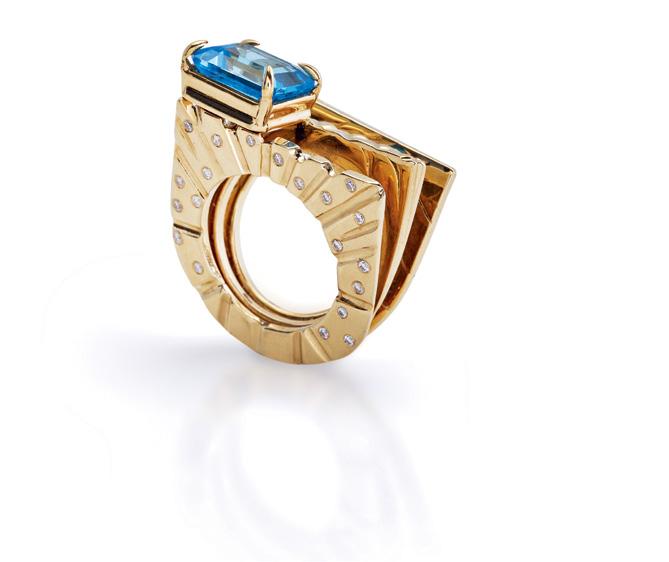
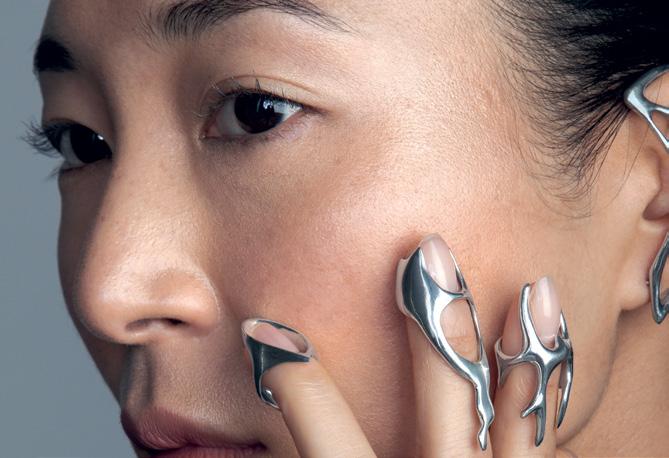
Sponsored by the City of Milan,Assogemme and CNA, and brought to life by more than 400 participants from morethan60countriesaroundtheworld,MilanJewelry Week-MJWreturnstotheLombardcapitalfromOctober 15th to 20th,with its established formula of a citywide, and increasingly international, event. Two prestigious partnershipswereaddedtothehistoricalcollaborations with AOL (The Lombardy Goldsmith Association),ACJ (AssociationforContemporaryJewelery),HRDAntwerp, A.N.T.I.C.O(NationalAssociationfortheProtectionofthe Gold Industry), Assamblage and Scuola Orafa Galdus: Inhorgenta,Germany’s leading jewelry fair and among themostimportantinEurope,andPiazzaItalia,amultichannel platform dedicated to facilitating the presence andexpansionofItalianexcellencesintheUnitedStates. The rich program of the Week, which as always is organized by the Prodes Italia Group, will include a series of experiential journeys, exhibitions, collection preview presentations, live performances, cocktail parties, and meetings with the press across the city center: many opportunities for meetings and new contacts for all industry professionals and simple enthusiasts. At the Pelota and Galdus School the educational session will also be brought back with workshops,talksandpaneldiscussionsontopicalissues that every year receive great interest from the public, with each event being sold out. Among the highlights
of the event, Artistar Jewels, now in its 10th edition: the creations of more than 230 designers, creators of artistic and contemporary jewelry from all over the world will be brought together at Palazzo Bovara.Their worksareavailableviathesaleswebsiteoverjewels.com and published in the book Artistar Jewels, presented during MJW to be distributed across major Italian and European bookstores as well as sent to 5,000 important industry contacts worldwide: buyers, gallery owners, luxury boutiques, fashion stylists. A jury of experts including Bryna Pomp,Director of MAD About Jewelry at the Museum of Arts and Design, New York, Alessio Boschi,Founder and Creative Director of Alessio Boschi Jewels, Muriel Piaser, Founder of PRECIOUS ROOM by MP tradeshow & Muriel Piaser Consulting, Romanian National Jewelry Association Assamblage,Guido Solari, Founder and Director of Scuola Orafa Ambrosiana; Director of Via Tadino 30 headquarter, and Shohista Turdiyeva,EditorandFounderofJewelleryPursuer,will select the three winners and the designers chosen by thegalleriesthatarepartofArtistarNetwork,asynthesis of the networking work continuously carried out by the ArtistarJewelsproject.AlsoondisplayatPalazzoBovara willbejewelryfromthetwoguestsAngryJewelleryand Chong Ho,while an area will be entirely dedicated to a selectionofbrandscuratedbyHarper’sBazaar. LaPelota,anotherhistoricMilaneselocation,willinstead host The Jewelry HUB,a collective of 100 international brands, which will introduce themselves to the public throughtheirowncollectionsoruniquepieces.
The MJW also returns to offer the Talent Show at the GaldusGoldsmithSchool,incollaborationwithRossana Ricolfi, Coordinator, Spokesperson and Technical Teacher at the institute,and Andreia Gabriela Popescu, Senior Lecturer at Assamblage School and awardwinning contemporary jewelry artist. Young talents from international schools and academies will exhibit their creations and automatically participate in two competitions: the Best Talent Award, awarded by a high-profilejury,whichwillgivethewinnersfreeaccess to advanced training courses offered by international schools, and the Best Talent by Inhorgenta, which will allow the winner to exhibit for free at Inhorgenta Munich 2025.
One of the most exciting moments of the MJW will undoubtedly be the MJW Awarding Night, scheduled this year on October 16th,during which more than 30 prizesandawardswillbegivenout.Inadditiontothose already mentioned, the following will be presented: Assamblage Award, Best Exclusive Jewelry Designer, Best in Antique Jewelry, Best in Contemporary Jewels, Best in Creativity, Best in Diamond, Best in Gemstone, BestinMilan,BestinTechnique,BestInnovativeDesign, BestTrendAward,BrynaPompAwardandTheJewelry HUB Network. A special prize will also be awarded by Piazza Italia to a selected independent brand or artist whowillreceivehighinternationalvisibility.
by Antonella Garello
IL MUSEO DIOCESANO DI MILANO OSPITA FINO A FINE OTTOBRE UNA
MOSTRA STRAORDINARIA, CHE RENDE OMAGGIO ALL’ARTE E ALLA
SENSIBILITÀ DI UNO DEI FOTOGRAFI PIÙ INFLUENTI DEL NOVECENTO
Resterà aperta al pubblico fino a fine ottobre la straordinaria retrospettiva su Robert Capa ospitata presso il Museo Diocesano di Milano. La mostra riunisce 300 opere selezionate dagli archivi dell’agenzia Magnum Photos, che restituiscono arte e personalità di Capa, uno dei fotografi più influenti del XX secolo, testimone sensibile dei maggiori conflitti del “secolo breve”: la Guerra Civile spagnola, la Seconda Guerra Mondiale, il conflitto tra Cina e Giappone, le macerie del dopoguerra in Europa, l’Indocina… Capa riserva empatia a ogni situazione, assicura dignità anche ai nemici. Non mancano le sue foto iconiche - quelle dello sbarco in Normandia, la morte del miliziano in Spagna, il ritratto di Trockij, lo sbarco degli Americani in Sicilia, solo per citarne alcune - ma la mostra raccoglie anche tantissime immagini meno note e altrettanto straordinarie, scatti dal Tour de France, i ritratti di artisti e attori, sfilate di moda, viaggi in Israele e URSS… Scorci di pace e resilienza in un mondo in perenne conflitto.


The Museo Diocesano in Milan is hosting an extraordinary exhibition until the end of October, paying homage to the art and sensitivity of one of the most influential photographers of the 20th century
The extraordinary retrospective on Robert Capa, hosted at the Museo Diocesano in Milan, will remain open to the public until the end of October. The exhibition brings together 300 works selected from the archives of the Magnum Photos agency, which tell the art and personality of Capa, one of the most influential photographers of the 20th century, a sensitive witness to the major conflicts of the “short century”: the Spanish Civil War, the Second World War, the conflict between China and Japan, the ruins of post-war Europe, Indochina... Capa reserves empathy for every situation, ensuring dignity even for his enemies. His iconic photos are not missing - those of the Normandy landing, the death of the militiaman in Spain, the portrait of Trotsky, the landing of the Americans in Sicily, just to name a few - but the exhibition also collects many less known and equally extraordinary images, shots from the Tour de France, portraits of artists and actors, fashion shows, trips to Israel and the USSR... Glimpses of peace and resilience in a world in perpetual conflict.


UN VIAGGIO NELL’ECCELLENZA
ARTIGIANA CONTEMPORANEA
Oggetti scelti, ereditati, tramandati, o semplicemente trovati per caso, sono i più fedeli complici della nostra intera esistenza. Diventano straordinari sia per l’affetto che vi riversiamo, sia per le loro intrinseche qualità, spesso espressione di talenti artigiani sconosciuti. È così che il tema della manifestazione Homo Faber 2024, al suo terzo appuntamento veneziano dall’1 al 30 settembre, ha proposto un viaggio metaforico, quello dell’esistenza umana, facendo parlare gli oggetti. Unici e originali, gli oggetti visti in mostra nel percorso costruito all’interno del complesso monumentale della Fondazione Giorgio Cini – la celebre istituzione culturale, partner di lunga data della Michelangelo Foundation, situata sull’isola di San Giorgio Maggiore, a Venezia – sono al contempo pretesto narrativo e la miglior rappresentazione della maestria artigiana che svela una sorprendente varietà di competenze tecniche e approcci innovativi provenienti da tutto il mondo. Grazie a un team di esperti internazionali di alto artigianato – che riunisce opere dal Giappone al Bangladesh, dal Sudafrica all’Australia – e una direzione artistica d’eccezione, Luca Guadagnino insieme all’architetto Nicolò Rosmarini, The Journey of Life – concept ideato da Hanneli Rupert, vicepresidente della Michelangelo Foundation – ha proposto un articolato allestimento ritmato da dieci temi, tutti rappresentati da una variegata selezione di oggetti unici, oltre che dalle consuete dimostrazioni dal vivo. Grande attenzione per la sostenibilità è emersa dalle sensibili creazioni in mostra di Josh Gluckstein, artigiano scultore che crea opere a grandezza naturale di animali selvatici e creature marine in cartone riciclato, e che ha proposto una spettacolare “scultura/barriera corallina” composta da ben 50 specie marine in cartone, alta 2,5 metri; come pure forte consapevolezza appare negli esiti delle ricerche sul biodesign di Zena Holloway: realizzazioni create con tessuti biodegradabili (efficienti dal punto di vista idrico e a zero emissioni) ottenuti a partire dalle radici d’erba per dimostrare le possibili alternative ai tessuti sintetici. Cura per i dettagli e interesse per le potenzialità della creatività contemporanea si manifestano nei monili in paglia di Nathalie Seiller Dejean, artigiana dell’intreccio, che rivisita lavorazioni sviluppate in Svizzera nel XIX secolo per produrre deliziosi accessori, come i tre copricapi nuziali che hanno trovato spazio all’interno della mostra tematica Love. Immaginari fiabeschi hanno accompagnato il percorso allestitivo attraverso la scoperta di un mondo coloratissimo e organico popolato dalle sculture tessili dell’artista americano Liam Lee. Alla sua seconda edizione, la fortunata iniziativa Homo Faber in Città – progetto curato da Michelangelo Foundation for Creativity and Craftsmanship in partnership con Fondazione Cologni dei Mestieri d’Arte e con il sostegno di Cartier - è tornata a proporre l’inedita possibilità di scoprire gli artigiani veneziani al lavoro nelle loro storiche botteghe. Maschere in cartapesta, tradizionali e scultorei oggetti in legno dove si alloggiano i remi delle gondole, la magica lavorazione del vetro in Murano, o la confezione delle bandiere che premiano le competizioni di voga veneta sono solo alcuni esempi delle lavorazioni e degli oggetti da ammirare nelle settanta botteghe che hanno aperto le loro porte ai visitatori tra Venezia, Murano e Burano. Si tratta di artigiani veneziani o stranieri di stanza a Venezia, che hanno reso possibile la creazione di viaggi inediti guidati, secondo itinerari tematici, e personalizzabili grazie all’app e al sito web dedicati alla manifestazione. Una serie di iniziative speciali hanno animato la città di Venezia; tra queste, un appuntamento fisso il mercoledì sera al Fondaco dei Tedeschi, l’affascinante palazzo affacciato sul Canal Grande, accanto al Ponte di Rialto, che ha ospitato una mostra nei suoi spettacolari spazi rinnovati. Homo Faber, quest’anno più che mai, ha invitato al viaggio inteso come esperienza, ricchezza e conoscenza.



HOMO FABER: AN EXCURSION INTO CONTEMPORARY
The Journey of Life, a journey marked by objects,our most precious travel companions
Objects chosen, inherited, handed down or simply found by chance are the most faithful accomplices of our entire existence. They become extraordinary both because of the affection we pour into them and because of their inherent qualities, often an expression of unknown artisan talents. This is how the theme of the event Homo Faber 2024, in its third Venetian event from September 1st to 30th,proposed a metaphorical journey, that of human existence, by making objects speak.Unique and original,the objects we saw on display in the itinerary built within the monumental complex of the Giorgio Cini Foundation (the renowned cultural institution and longtime partner of the Michelangelo Foundation, located on the island of San Giorgio Maggiore in Venice) are
both a narrative pretext and the best representation of craftsmanship revealing an astonishing variety of technical skills and innovative approaches from around the world.Thanks to a team of global experts in high craftsmanship, bringing together works from Japan to Bangladesh,South Africa to Australia,and an exceptional artistic director,Luca Guadagnino together with architect Nicolò Rosmarini,The Journey of Lifea concept conceived by Hanneli Rupert,vice-president of the Michelangelo Foundation - offered an articulate display punctuated by ten themes all represented by a varied selection of unique objects,as well as the usual live demonstrations. Great attention to sustainability emerged from the sensitive creations on display by Josh Gluckstein, a sculptural craftsman who creates life-size works of wild animals and sea creatures from recycled cardboard, and who offered a spectacular “coral barrier/sculpture” composed of as many as 50 marine species in cardboard, 2.5 meters high. Strong elements of awareness appear in the outcomes of Zena Holloway’s biodesign research: creations with biodegradable (water-efficient and zero-emission) fabrics made from grass roots to demonstrate possible alternatives to synthetic fabrics. Attention to detail and an interest in the potential of contemporary creativity are evident in the straw jewelry by Nathalie SeillerDejean,aweavingartisanwhorevisitsprocesses developed in Switzerland in the 19th century to produce delightful accessories, such as the three wedding headdresses that were featured within the Love exhibition. Fairy-tale imagery accompanied the exhibition tour through the discovery of a colorful and organic world populated by the textile sculptures of American artist Liam Lee.
In its second edition, the successful Homo Faber in Città - a project curated by Michelangelo Foundation for Creativity and Craftsmanship in partnership with Fondazione Cologni dei Mestieri d’Arte and with the supportofCartier-wasbacktooffertheunprecedented opportunity to discover Venetian artisans at work in their historic workshops. Papier-mâché masks, traditional and sculptural wooden objects where the oarsofgondolasarehoused,themagicalworkmanship of glass in Murano, or the making of the flags that award Venetian rowing competitions are just a few examples of the workmanship and objects to be admired in the seventy workshops that opened their doors to visitors between Venice, Murano and Burano. These are Venetian or foreign artisans based in Venice,who helped to create unprecedented guided
trips according to themed itineraries, and which are customizable thanks to the event’s app and website.A series of special initiatives brought the city of Venice to life; among them, a regular Wednesday evening event at Fondaco dei Tedeschi, the fascinating palace overlooking the Grand Canal, next to the Rialto Bridge, which hosted an exhibition in its spectacular renovated spaces.
This year more than ever before, Homo Faber has been an encouragement of the journey understood as experience,richness and knowledge.
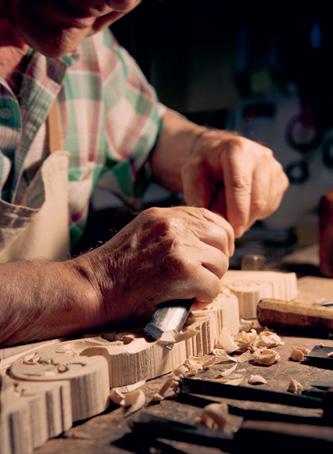

by Rosa Chiesa

PROGETTO E INNOVAZIONE
Fondata nel 1966 da Piero Ambrogio Busnelli (Pierino per tutti) e dai fratelli Cassina, l’azienda C&B (che diventerà poi B&B Italia) trae il suo nome dai cognomi dei fondatori e nasce negli intenti di Piero Busnelli con un obiettivo preciso: rispondere alla necessità di trasformare la modalità di produzione dei mobili e avviarla a un processo di tipo industriale. È proprio Busnelli, un anticipatore in questo campo, a proporre un sodalizio a Cassina – azienda già nota sul mercato – per “rivoluzionare” la produzione di arredo introducendo il processo industriale, ma soprattutto basando ogni nuova proposta sulle fondamentali attività di ricerca, progetto e sviluppo. Se è vero che gli anni Sessanta in Italia sono un periodo di cambiamento profondo, sociale ed economico, innervato dall’ottimismo e da una modernizzazione produttiva trainata dal settore trasporti, da quello illuminotecnico e certamente dalle aziende che puntavano sui “nuovi materiali” come la plastica e il poliuretano, nell’ambito dell’arredamento sono pochi i pionieri di un rinnovamento radicale della produzione poiché il sistema produttivo, ancorché innovativo in alcuni casi, stentava ad affrancarsi completamente dalla caratteristica produzione di alto livello di matrice artigianale. Investimenti raddoppiati nel settore industriale, ma soprattutto un’impennata
del 50% delle spese per i consumi privati, convalidano l’intuizione anche commerciale di Busnelli. C&B dunque, che solo nel 1968 passa da 50 a 150 addetti, contando sui contatti già avviati e condivisi da Cassina con progettisti famosi come Vico Magistretti, Mario Bellini, Gianfranco Frattini, Afra e Tobia Scarpa, costruisce la propria identità su un’organizzazione scientifica della produzione, un forte investimento tecnologico nella fabbrica e un’immagine originale nutrita dai variegati contributi creativi di diversi designer. È del 1969 la creazione del Centro Ricerche – da un’idea di Cesare Cassina, che diventerà Centro Ricerche & Sviluppo e che sarà condiviso tra le aziende dei fondatori – uno strumento fondamentale per la buona riuscita dei progetti che svincola il valore del prodotto dalla sola creatività del progettista per associarlo alla ricerca, cioè all’innovazione. In questi primi anni di attività un rapporto di particolare sintonia con Afra e Tobia Scarpa –quest’ultimo, non solo designer di prodotto, ma prezioso consulente aziendale sulla produzione – dà vita al primo best seller aziendale, il divano Coronado, e al progetto per la sede aziendale mentre l’intesa con Mario Bellini, già noto per le collaborazioni con Olivetti, produrrà alcune note icone aziendali nel segno del Pop come Camaleonda e Le Bambole. C&B affronta con spirito libero il rapporto con i “nuovi materiali”: resine
acriliche, poliuretano espanso, poliestere e fibra di vetro vengono considerati per i loro indubbi vantaggi funzionali ma anche attribuendo loro un’autonomia espressiva, abbandonando vecchi stilemi per abbracciare le istanze del “Pop design” nel rivoluzionare le consuetudini “borghesi” dell’abitare. A sette anni dalla sua fondazione, nel 1973, Busnelli rileva le quote di Cassina e la C&B diventa B&B Italia, una nuova azienda, in cui confluisce il know-how acquisito grazie a quel fondamentale laboratorio per la ricerca sui materiali innovativi e volto all’industrializzazione dei processi che si era incarnato nel Centro Ricerche & Sviluppo. Collaboratori vecchi e nuovi proseguono il percorso avviato con l’azienda, oltre a Mario Bellini, ad Afra e Tobia Scarpa, nasce la collaborazione con un giovane Antonio Citterio che porterà a sviluppare grandi successi come Diesis, in collaborazione con Paolo Nava, e Charles. Renzo Piano, un allora giovane architetto, viene incaricato da Piero Busnelli per il progetto di uffici della B&B Italia a Novedrate, sede che, inaugurando nel 1974, diventa emblema della più alta cultura d’impresa. Appaiono successivamente nuove tipologie di prodotto per il contenimento, librerie, armadi, contenitori multifunzionali che rispondono all’urgenza trasformativa degli interni tipica di quegli anni e a suggellare i successi aziendali vengono assegnati a B&B Italia ben cin-
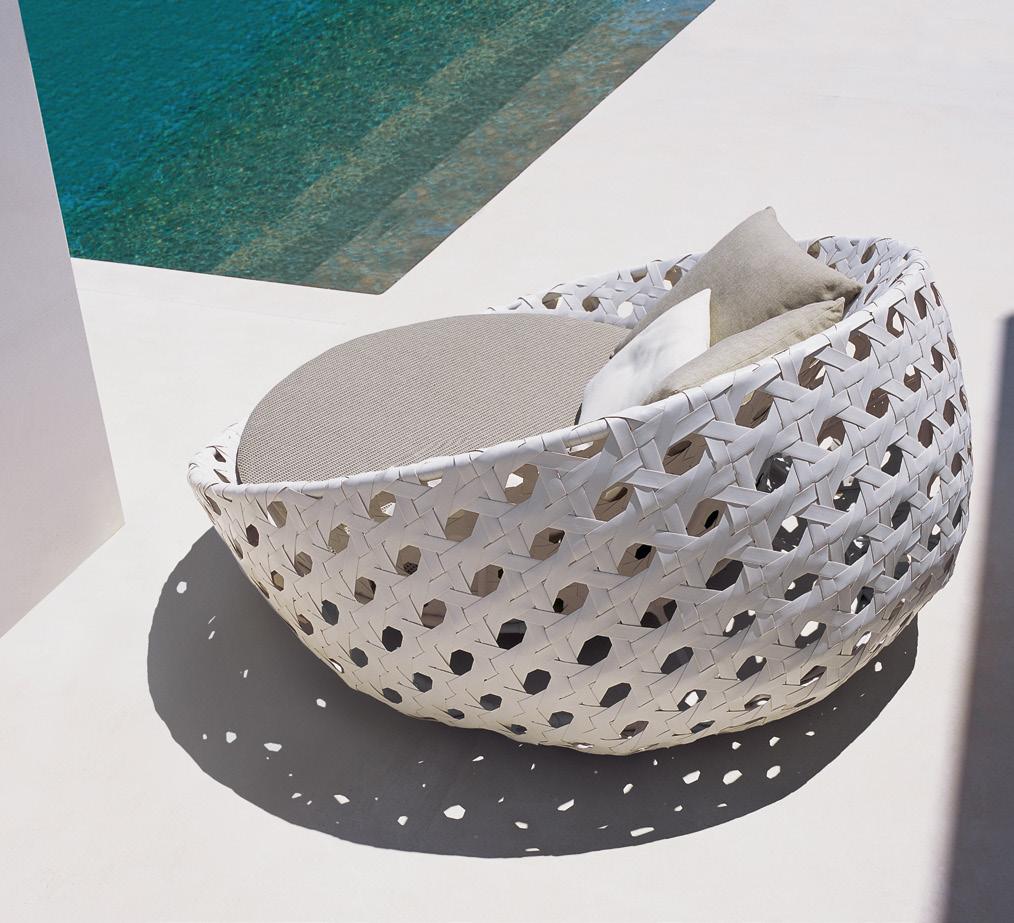

que Compasso d’Oro. Dopo la gestione “familiare” dei Busnelli, da dicembre 2018 B&B Italia è parte di Flos B&B Italia Group, gruppo leader globale con un patrimonio culturale di origine europea, che raggruppa diversi marchi nel mondo dell’arredamento e dell’illuminazione di alta gamma.
Le collaborazioni con i più prestigiosi designer internazionali, da Mario Bellini a Naoto Fukasawa passando da Gaetano Pesce, hanno rappresentato un punto di distinzione dell’azienda fin dal suo apparire (e anche prima con C&B). Inoltre l’azienda si è da sempre impegnata anche in una costante attività di comunicazione, affrontandola con la stessa attitudine innovativa usata nel progetto di prodotti. Il divano Coronado disegnato nel 1966 da Afra e Tobia Scarpa rappresenta un paradigma, la creazione di un archetipo formale (ispirato al divano capitonné) rivisitato attraverso l’uso di componenti industriali. Innovativo per la struttura portante in acciaio, l’imbottitura di poliuretano schiumato a freddo e per l’uso della fibra di poliestere Dacron DuPont, rappresenta la

prima applicazione di questi materiali nell’industria dell’arredo. Unisce la performance artistica, tipica di quegli anni, con un messaggio rivoluzionario e la maniera Pop, la famosa Serie Up (Compasso d’Oro nel 2022) di Gaetano Pesce: spicca Up5_6, la poltrona con pouf scultorea in schiuma poliuretanica che, allora confezionata sottovuoto con una riduzione del volume del 90%, si espandeva a contatto con l’aria per assumere le generose forme femminili pensate dal designer. Ancora, nel 1972, dalla collaborazione con Mario Bellini nasce la serie Le Bambole (Compasso d’Oro nel 1979): innovative sedute dalla forma naturale che nascondono una struttura portante annegandola nel poliuretano, a favore di morbidezza e comfort. Se il divano Sity (Compasso d’Oro nel 1987), messo a punto da Antonio Citterio nel 1986 con il CR&S, inaugura un sistema di poltrone e divani che rispondono efficacemente alle nuove modalità di vivere il salotto, la poltrona Grande Papilio del designer giapponese Naoto Fukasawa nasce nel 2009 dall’idea di mettere in forma il concetto di relax; una seduta iconica ispirata alla grazia del movimento della farfalla. La costellazione di successi dell’azienda vanta collaborazioni variegate che imprimono stili differenti uniti dall’innovazione, dalla ricerca sui materiali e sulle forme. Nel 2007 B&B Italia debutta nel mondo outdoor con Canasta di Patricia Urquiola, che con mano delicata rivisita la paglia di Vienna, in un sottile equilibrio tra essenzialità e décor, valorizzando il concept dell’intreccio, della trama come stratificazione e non solo come pattern. Rimanendo fedele alla sua storia l’azienda non ha mai smesso di intessere relazioni con i designer italiani e stranieri, che ne riconoscono le potenzialità in termini di innovazione: emblematica del “modo italiano” di fare design, B&B Italia
controlla internamente tutta la filiera produttiva, permettendo una grande flessibilità progettuale e realizzativa. Un ruolo non meno importante è quello rivestito dalla grafica e comunicazione aziendale, un lavoro cominciato fin dal 1966 nella collaborazione con Trabacchi, e caratterizzato da un piglio sempre “moderno”, cioè allineato allo spirito del suo tempo. Una vera e propria strategia di corporate image fondata da un lato sui prodotti, sul linguaggio visivo delle campagne di comunicazione e non ultimo dall’immagine offerta dalle sedi produttive. È un fil rouge quello che lega il celeberrimo e irriverente servizio di Oliviero Toscani con la modella Donna Jordan che posa sulle Bambole di Bellini, alla lunare campagna pubblicitaria della Serie Up immortalata dal fotografo svizzero Klaus Zaugg, per arrivare alle recenti strategie di comunicazione che utilizzano vecchi e nuovi media. Oltre ai 10
flagship store, 60 monomarca e 700 punti vendita specializzati – i mercati esteri rappresentano circa l’80% del fatturato – il progetto delle sedi, luogo di relazioni e produzione, rappresenta un importante veicolo di immagine che partecipa in modo efficace alla trasmissione del concetto di design insito nell’azienda. Dalla prima fabbrica di Afra e Tobia Scarpa al CR&S progettato da ACPV (Antonio Citterio Patricia Viel) alla sede di Novedrate (il piccolo Beaubourg), disegnata da un giovane Renzo Piano e Richard Rogers, le architetture si fanno manifesto di un’idea, quella originaria di Piero Busnelli, che pone al centro l’innovazione industriale. La forza di un’idea che si fa racconto unita alla condivisione dei valori progettuali ed etici tra l’azienda e i suoi collaboratori sono dunque alla base di un episodio cardine nella vicenda del design italiano, che prosegue malgrado gli inesorabili e rapidi cambiamenti attuali.
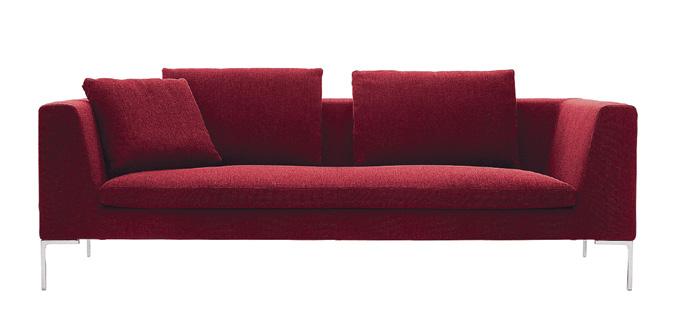
B&B Italia is one of the most important companies in the design industry in Italy and abroad.Since its founding, it has relied on constant Research & Development and industrial know-how gained over time,upholding the genuineness and quality of the“Made in Italy”
Established in 1966 by Piero Ambrogio Busnelli (or Pierino as everyone called him) and the Cassina brothers, the company C&B (which would later become B&B Italia) got its name from the founders’ surnamesandwasfoundedbythewillofPieroBusnelli with a specific goal in mind: to address the need to change the way furniture was made and to start an industrial-type production. It was precisely Busnelli, a pioneer in this field, who proposed a partnership to Cassina - a company already well known on the market - in order to “revolutionize” the production of furniture by introducing the industrial process, but most importantly by basing each new product offer on the fundamental activities of research, design and development.Whileitistruethatthe1960sinItalywere a period of major change, both social and economic, energized by optimism and productive modernization driven by the transportation sector, the lighting engineering sector, and most certainly by companies that focused on “new materials” such as plastic and polyurethane, there were actually only a few pioneers in the furniture sector interested in a radical renewal of the production. This was because the production system, although innovative in some cases, was struggling to completely break free from the traditional high-level artisanal production. Doubled investments in the industrial sector, but above all a 50% upsurge in private consumption expenditures, confirmed Busnelli’s intuition, which also covered commercial aspects.Thus,C&B,which in 1968 alone went from 50 to150employees,bankingonthecontactsalreadymade and shared by Cassina with famous designers such as Vico Magistretti, Mario Bellini, Gianfranco Frattini, Afra and Tobia Scarpa, built its identity on a scientific organization of production, a major technological investment in the factory, and an original image nurtured by the multifaceted creative contributions of various designers.The Research Center was established in 1969 based on the idea of Cesare Cassina. It would later become the Research & Development Center, a facility shared among the founders’companies - a key instrument for the success of projects that freed the valueoftheproductfromthedesigner’screativityalone andassociateditwithresearch,thatistosayinnovation.
In those early years, a special relationship with Afra and Tobia Scarpa – the last was not just a product designer but also a valuable company consultant on production - originated the company’s first best-seller, the Coronado sofa, and the project for the company’s headquarters while the understanding with Mario
Bellini,alreadyknownforhispartnershipswithOlivetti, would produce some well-known company icons in Pop style such as Camaleonda and Le Bambole.It was with a free spirit that C&B approached the relationship with“newmaterials”:acrylicresins,polyurethanefoam, polyester and fiberglass were taken into account for their unquestionable functional advantages but also by assigning them expressive autonomy, leaving old stylistic features behind to embrace “Pop design” in revolutionizingthe“bourgeois”traditionsofliving. In 1973, seven years after its founding, Busnelli took overCassina’ssharesandC&BbecameB&BItalia,anew company that incorporated the know-how acquired thanks to that important laboratory for the search of innovative materials and aimed at the industrialization of processes and which had become the Research & Development Center. Old and new contributors continued along the path started with the company. In addition to Mario Bellini, Afra and Tobia Scarpa, a partnership was established with a young Antonio CitteriothatwouldleadtogreatsuccessessuchasDiesis, in partnership with Paolo Nava, and Charles. Renzo Piano, then a young architect, was commissioned by PieroBusnellitodesignB&BItalia’sofficesinNovedrate, the headquarters inaugurated in 1974 that became in time a symbol of the finest business culture.New types of storage products appeared,such as bookcases,closets, and multifunctional containers that addressed the transformational urgency of interiors typical of those times: as many as five Compasso d’Oro awards were bestowed on B&B Italia to mark its achievements.After being a “family-run” business, in December 2018 B&B Italia became part of Flos B&B Italia Group, a leading globalgroupwithaculturalheritageofEuropeanorigin, bringing together several brands in the world of highendfurnitureandlightingengineering.
Partnerships with some of the most prestigious international designers, from Mario Bellini to Naoto Fukasawa by way of Gaetano Pesce, represented a distinguishingpointforB&Bsinceitsfounding(andeven earlier with C&B).However,the company also engaged in ongoing communication activities, approaching them with the same innovative flair used to design its products.The Coronado sofa designed in 1966 by Afra and Tobia Scarpa represents a paradigm, the creation of a formal archetype (inspired by the capitonné sofa) reinterpretedthroughtheuseofindustrialcomponents. Innovativeforitssteelsupportstructure,itscold-foamed polyurethane padding, and the use of Dacron DuPont polyester fiber,this sofa marked the first application of thesematerialsinthefurnitureindustry.GaetanoPesce’s famous Serie Up (Compasso d’oro in 2022), combined artistic performance, typical of those years, with a revolutionary message and Pop fashion: Up5_6, the armchair with sculptural pouf made of polyurethane foamstandsout.Atthetimevacuum-packedwitha90% reductioninvolume,itexpandedincontactwiththeair to take on those bountiful feminine forms conceived by thedesigner.In1972,thepartnershipwithMarioBellini produced the series Le Bambole (Compasso d’Oro in 1979). This series featured innovative natural-shaped seatsthatconcealedasupportingstructurebydrowning itinpolyurethane,tothebenefitofsoftnessandcomfort. WhiletheSitysofa(Compassod’Oroin1987),developed by Antonio Citterio in 1986 with CR&S, ushered in a systemofarmchairsandsofasthateffectivelyaddressed newwaysofenjoyingthelivingroom,theGrandePapilio armchair by Japanese designer Naoto Fukasawa was conceived in 2009 from the idea of shaping the concept of relaxation; an iconic seat inspired by the butterfly’s graceful movement. The company’s string of successes boasts diverse partnerships that mark different styles linked by innovation, research on materials and on
forms.In 2007 B&B Italia made its debut in the outdoor sector with Canasta by Patricia Urquiola, who with a delicatehandreinterpretedtheViennastraw,inasubtle balance between minimalism and décor, emphasizing the concept of interweaving, of weave as layering and not only as pattern. Staying true to its history, the company never stopped weaving relationships with Italian and foreign designers, who appreciate its potential in terms of innovation: exemplifying the “Italian way”of making design,B&B Italia controls the entire production chain in-house,for great flexibility in terms of design and production.Of no less importance is the role played by graphic design and corporate communication, a task that began as early as 1966 as partofthepartnershipwithTrabacchi,andfeaturingan always“modern”look,in other words,aligned with the spirit of the time.A veritable corporate image strategy founded,ontheonehand,ontheproducts,onthevisual language of the communication campaigns and, last but not least, on the image offered by the production facilities.There is a common thread that joins Oliviero Toscani’s famous and irreverent photo shoot with model Donna Jordan posing on Bellini’s Bambole,and thelunaradvertisingcampaignoftheSerieUpcaptured by Swiss photographer Klaus Zaugg, to the recent communication strategies that use both old and new media.In addition to 10 flagship stores,60 mono-brand stores and 700 specialized outlets - the foreign markets account for about 80% of the company’s turnover - the design of the headquarters, a place of relationships and production, is an important image medium that effectively contributes to conveying the design concept embedded in the company. From the first factory by Afra and Tobia Scarpa to the CR&S designed by ACPV (Antonio Citterio Patricia Viel) to the headquarters in Novedrate (Little Beaubourg), designed by a young Renzo Piano and Richard Rogers,buildings become the manifestoofanidea,PieroBusnelli’soriginalidea,which puts industrial innovation at the center.The strength of an idea that becomes a tale coupled with the sharing of design and ethical values between the company and its collaborators is therefore at the foundation of a key episodeinthehistoryofItaliandesign,whichcontinues despitetoday’srelentlessandrapidchanges.
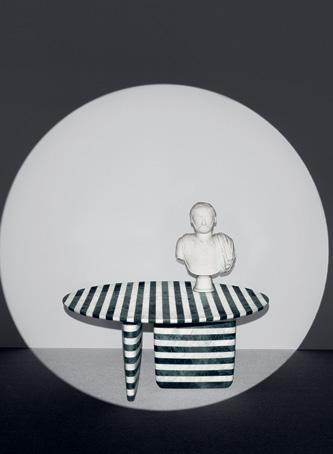
by Salvador Asensio
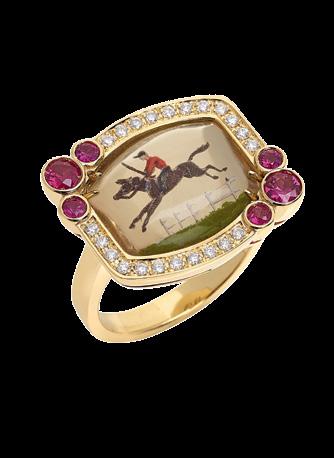
A/ ROWLANDSONS JEWELLERS Goal of the Year brooch Il calciatore con corpo di perla barocca è colto nel momento di massima emozione, in cerca della vittoria. In oro con perla sferica e diamanti.
Thesoccerplayerwithbaroquepearlbodyiscapturedinthe moment of maximum emotion,chasing victory.In gold with sphericalpearlanddiamonds.
B/ JAN LESLIE Basketball Hoop cufflinks
Un dettaglio sportivo per un look elegante, in argento sterling con il colore della classica palla da pallacanestro, smaltata a mano.
A sporty detail for an elegant look,in sterling silver with the coloroftheclassicbasketballball,enameledbyhand.
C/ FRANCESCA VILLA Glory Days ring
Dalla collezione Being Crystal, con autentici elementi equestri vintage di Essex crystal, montati in oro giallo con diamanti e rubini.
From the Being Crystal collection, with authentic vintage Essex crystal equestrian elements, set in yellow gold with diamonds and rubies.
D/ LIN SHIAO TUNG Rhythmic Gymnastics Bear brooch
Un simpatico orsetto di giada verde esegue il suo esercizio di ginnastica ritmica con il nastro. In oro con diamanti bianchi, diamante giallo e pietra di luna.
This cute green jade bear is doing his rhythmic gymnastics exercise with ribbon. In gold with white diamonds, yellow diamond and moonstone.
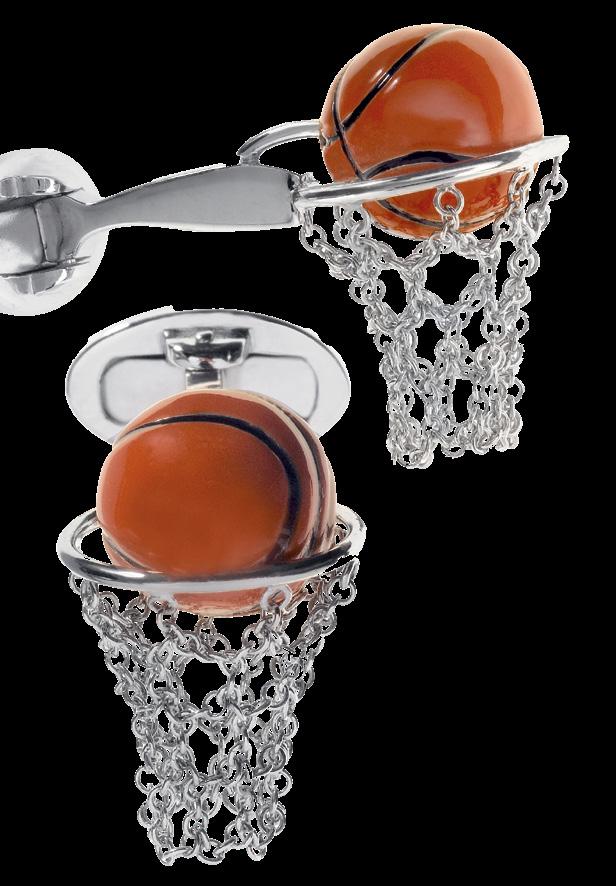


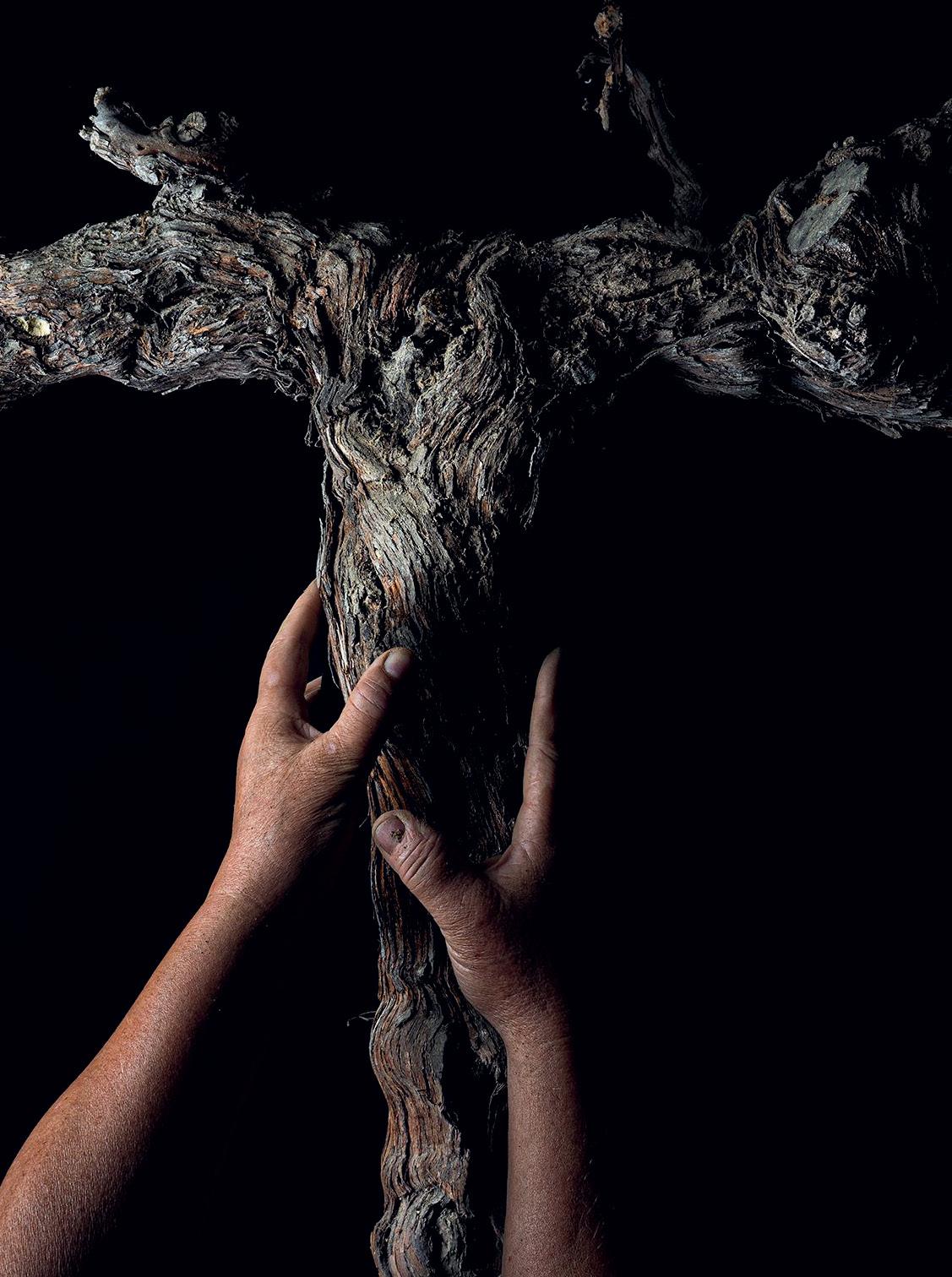
by Elisa Facchetti
UNA STORIA DI ECCELLENZA
Ci troviamo nel cuore del Valdarno di Sopra, una terra ricca di storia che ha accolto nel corso dei secoli grandi personaggi storici e artisti che l’hanno decantata nei loro scritti e dipinta nei loro quadri: da Tito Livio a Plinio il Vecchio, da San Francesco a Cimabue, Giotto, Brunelleschi, Michelangelo, Dante Alighieri, Petrarca, fino a Machiavelli e Leonardo Da Vinci. È in questo suggestivo angolo di Toscana che l’architetto Alberto Moretti Cuseri negli anni ‘50 acquisisce i primi 55 ettari dalla Famiglia Reale Savoia d’Aosta. Ma andiamo con ordine. Nel 1935, tra Firenze e Arezzo, il Duca Amedeo di Savoia d’Aosta, Viceré d’Etiopia, introduce e pianta nelle sue proprietà il primo vigneto, per celebrare la presa dell’Impero Abissino: è la “Vigna dell’Impero”, un clone antico di Sangiovese che si è rivelato essere unico nel suo genere e che, vent’anni più tardi, darà all’architetto Alberto Moretti Cuseri lo stimolo di proseguire e dedicarsi alla passione della viticoltura, dando un primo inizio a quella che oggi è la realtà di Tenuta Sette Ponti. Grazie alla grande vocazione di questo territorio, inizia ad occuparsi dei vigneti producendo uve per la vendita ai produttori, senza vinificarle. Negli anni ’90 il figlio Antonio Moretti Cuseri prende il controllo dell’azienda del padre e, affiancato dai migliori viticoltori ed enologi per valutare la vocazione dei terreni, inaugura una produzione di vini di qualità, dando così il via al suo progetto vitivinicolo.
I PRIMI VINI PRODOTTI
Con l’arrivo di Antonio Moretti Cuseri termina l’attività di vendita di uve ad altri produttori e nel 1998 nasce la prima etichetta, Crognolo: ha come base la storica varietà di Sangiovese proveniente da cloni della più antica vigna della tenuta, Vigna dell’Impero. Per la prima volta si parla di Tenuta Sette Ponti, appellativo che evoca i Sette Ponti sul fiume Arno presenti sulla strada che da Firenze porta ad Arezzo, uno dei quali, il Buriano, presente anche nel celebre dipinto Gioconda di Leonardo Da Vinci. Il 1999 vede l’uscita della prima annata di Oreno, vino che dopo solo tre vendemmie raggiungerà la vetta delle più importanti classifiche mondiali.



LA PROPRIETÀ: BIO PER NATURA
Sono 60 gli ettari di vigneto che caratterizzano
Tenuta Sette Ponti. Le vigne, gestite in regime di agricoltura biologica, sono il risultato del lavoro di esperti agricoltori e agronomi che hanno l’obiettivo di realizzare vini di grande qualità, partendo proprio dalle cure agronomiche tra i filari. Una qualità che è seguita fin dall’inizio del ciclo vegetativo e produttivo: dalla potatura, al germogliamento, alla fioritura, all’allegagione, all’invaiatura (il momento in cui l’acino inizia a prendere colore), al diradamento dei grappoli invaiati, alla vendemmia e alla selezione degli acini. Il tutto tenendo conto della corretta maturazione, fenolica e aromatica, in modo da ottenere un perfetto equilibrio tra zuccheri, acidi e una giusta carica antocianica, tannica e di aromi. Per la loro collocazione, orientamento geografico, latitudine e longitudine, le vigne danno vita a vini unici per eleganza, struttura, capacità d’invecchiamento e sentori fruttati. Contribuiscono a questo, non ultimi, i venti e le brezze dell’adiacente Pratomagno che arieggiano e rendono sane le vigne stesse. Antonio Moretti Cuseri, spinto dalla volontà di sviluppare una viticoltura in piena sintonia con l’ambiente e le tradizioni del territorio, già dall’inizio del suo progetto, nei primi anni 2000, intraprende un percorso di cultura sostenibile e biologica, dalla vigna all’imbottigliamento. Il rispetto per l’ambiente e per ogni singolo terroir regala vini dalla personalità unica e irripetibile.
LA PRODUZIONE OGGI
La massima attenzione alla terra e agli impianti, il rispetto della natura e dei suoi ritmi, l’amore
per la vigna sono gli elementi chiave per ottenere vini riconosciuti a livello internazionale e apprezzati dalla critica nazionale e straniera. Come Oreno, che nel 2021 ha celebrato le sue prime 20 annate, signature wine di Tenuta Sette Ponti: taglio bordolese composto da una selezione delle migliori uve di Merlot, Cabernet Sauvignon e Petit Verdot; Vigna dell’Impero, un Sangiovese in purezza proveniente dall’omonimo vigneto piantato nel 1935, che si distingue per essere un vino prestigioso ed elegante ed è prodotto in edizione limitata solo nelle annate migliori.
Dallo stesso vigneto, dove in parte era impiantato Trebbiano, nasce Vigna dell’impero Trebbiano, sul mercato nel 2023 con l’annata 2020. Sette invece è un grande omaggio all’arte enoica, da sette diverse vigne di Merlot, biologico e vinificato in purezza.
LA TERZA GENERAZIONE…
PER UN FUTURO STRAORDINARIO
Nel 2018 iniziano ad occuparsi delle tenute insieme ad Antonio Moretti Cuseri anche i figli Amedeo, con il ruolo di amministratore e responsabile del mercato italiano, e Alberto, con il ruolo di direttore export e della comunicazione. Una nuova generazione portavoce di valori forti, espressione di una tradizione e una grande passione trasmessa dal padre. Si consolida una visione nuova e audace del mondo del vino: vini qualitativamente elevati e di carattere internazionale, simbolo del Made in Italy e del buongusto artigianale e autentico. I vini della famiglia Moretti Cuseri diventano protagonisti anche nel mondo lifestyle, della moda, degli eventi.

The Moretti Cuseri family, bearer of a wine culture and of a remarkable search for quality in some of the most important winemaking areas of Tuscany and Sicily, started its winemaking history in the area between Florence and Arezzo,where Tenuta Sette Ponti was first established
We are in the heart of Valdarno di Sopra, a land rich in history that over the centuries has welcomed important historical figures and artists who have praised it in their writings and depicted it in their paintings: from Titus Livy to Pliny the Elder, from St. Francis to Cimabue,Giotto,Brunelleschi,Michelangelo, Dante Alighieri, Petrarch, and even Machiavelli and Leonardo Da Vinci. It was in this charming corner of Tuscanythat,inthe1950s,thearchitectAlbertoMoretti Cuseri bought the first 55 hectares from the Royal Savoy Family of Aosta.But let’s proceed in good order. In1935,intheareabetweenFlorenceandArezzo,Duke AmedeoofSavoy-Aosta,ViceroyofEthiopia,introduced and planted the first vineyard on his property to celebrate the conquest of the Abyssinian Empire: it is the “Vineyard of the Empire,”an ancient clone of the Sangiovesethatendedupbeingtheonlyoneofitskind and that,twenty years later,gave the architect Alberto Moretti Cuseri the incentive to endure and dedicate himself to the passion of viticulture, thus providing a first start to what is now Tenuta Sette Ponti. Thanks to this excellent soil potential present in this area,he began to tend the vineyards, producing grapes to be sold to producers without making wine. In the 1990s, his son Antonio Moretti Cuseri took over his father’s company and, assisted by the best viticulturists and oenologists to assess the suitability of the land, began producing quality wines, thus kicking off his winemaking project.
When Antonio Moretti Cuseri came along, the sale of grapes to other producers came to an end and in 1998 the first label,Crognolo,was produced.This wine has as its base the historic Sangiovese variety from clones of the estate’s oldest vineyard,the“Vigna dell’Impero”. For the first time the name Tenuta Sette Ponti (“Seven Bridges”) is mentioned,a name that calls to mind the
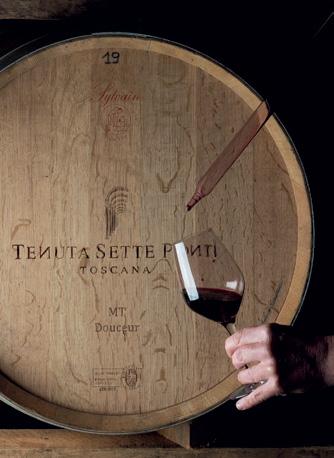
Bridges across the Arno River located on the road that runs from Florence to Arezzo. One of these bridges,the Buriano,is even depicted in Leonardo Da Vinci’s famous painting,the Mona Lisa.The year 1999 marked the inauguration of the first vintage of Oreno, a wine that after just three vintages reached the top of the world’s most important rankings.
THE ESTATE: ORGANIC BY NATURE
The Tenuta Sette Ponti estate features 60 hectares of vineyards. The vineyards, managed by organic farming methods, are the result of the work carried out by expert farmers and agronomists with the goal of making high-quality wines, starting precisely from the agronomic care of the rows. Quality that is pursued from the very beginning of the growing and productioncycle:frompruningtosprouting,flowering, fruit set,veraison (the moment when the grapes begin to take on color), thinning of the veraison clusters, harvesting and grape selection. All of this is done takingintoaccountproperripening,bothphenolicand aromatic, to obtain a perfect balance of sugars, acids andaproperanthocyanic,tannicandaromaticcharge. Duetotheirlocation,geographicalorientation,latitude and longitude, the vineyards produce wines that are uniquefortheirelegance,structure,agingcapacityand fruity hints.The winds and breezes from the adjacent Pratomagno area contribute to this, and in no small measure, as they ventilate the vines and keep them

healthy.AntonioMorettiCuseri,promptedbyadesireto develop a form of viticulture in full harmony with the environment and the traditions of the area, from the very outset of his project in the early 2000s embarked on a journey of sustainable and organic culture,from the vineyard to the bottling process. Respect for the environment and for each terroir results in wines with a unique,one-of-a-kind personality.
WINE PRODUCTION AT THE PRESENT TIME
The highest regard for the land and the facilities, respect for nature and its rhythms, and love for the vineyard are all key elements to obtaining wines that are acknowledged worldwide and acclaimed by domestic and foreign critics. Like Oreno, Tenuta Sette Ponti’s signature wine, which celebrated its first 20 vintages in 2021: a Bordeaux blend made from a selection of the best grapes of Merlot, Cabernet SauvignonandPetitVerdot;“Vignadell’Impero”,apure Sangiovese from the vineyard bearing the same name planted in 1935,which sets itself apart as a prestigious and elegant wine and is produced in limited editions only in the best vintages.Vigna dell’impero Trebbiano comes from the same vineyard where Trebbiano was in part planted, marketed in 2023 with the 2020 vintage. Sette (“Seven”), on the other hand, is a great tribute to the art of winemaking, made from seven different vineyards of Merlot, organic and vinified in purity.
THE THIRD GENERATION... FOR AN ASTONISHING FUTURE
In 2018, Antonio Moretti Cuseri’s sons started to tend to the estates along with their father. Amedeo as administrator and head of the Italian market, and Alberto as head of export and communication.A new generation bearer of strong values, an expression of tradition and great passion handed down by their father. A new and bold vision of the winemaking world is established: wines with high quality and international appeal, symbols of the “Made in Italy” and of artisanal and genuine good taste. The wines produced by the Moretti Cuseri family have also taken centerstageintheworldoflifestyle,fashion,andevents.
17th - 18th - 19th
Palazzo del GHIACCIO
DALL’OLTREPÒ PAVESE UNA GRANDE STORIA DI SPUMANTI

by Elisa Facchetti
SPECIALIZZATA NELLA SPUMANTISTICA, LA TENUTA OLTRENERO SI DISTINGUE PER I SUOI SPUMANTI METODO CLASSICO. RE INDISCUSSO DELL’AZIENDA E VITIGNO PRINCIPE È IL PINOT NERO CHE IN QUESTE TERRE, DA OLTRE DUE SECOLI, ESPRIME TUTTA LA SUA CLASSE E PERSONALITÀ
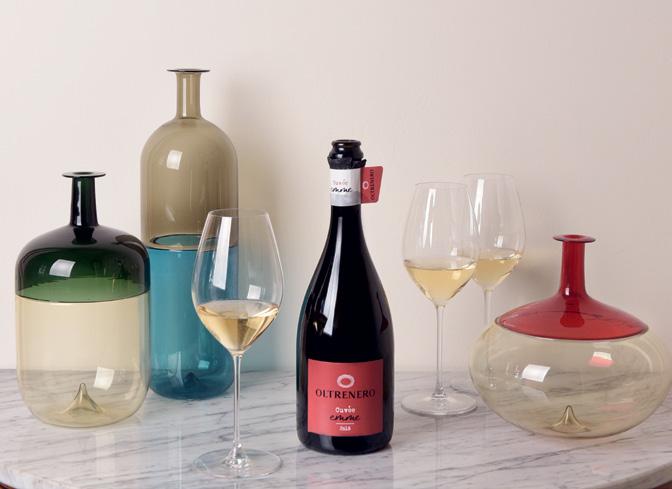
DAL MEDIOEVO A OGGI LA STORICA
TRADIZIONE DEL PINTO NERO
La viticoltura nell’Oltrepò Pavese è antichissima e i primi documenti scritti risalgono a Plinio e a Strabone che nel 40 a.C., passando con una legione romana, scrisse “vino buono, popolo ospitale e botti in legno molto grandi”. Ma è al Medioevo che risalgono le origini della Tenuta Oltrenero, quando i monaci benedettini iniziarono a coltivare le terre dopo lunghi anni di abbandono facendo rifiorire la vite. In questa epoca il paese di origine era chiamato Zenevredo della Pusterla per l’appartenenza quasi completa del suo territorio al Monastero di Santa Maria Teodote, detto anche della Pusterla, per un piccolo accesso creato nel XII secolo nel muro di cinta dell’edificio che portava direttettamente all’esterno, senza dover pagare così dazi. L’area coltivata, conosciuta anche con il nome di “Vecchio Piemonte”, alla fine dell’Ottocento iniziò a distinguersi per la produzione spumantistica italiana, grazie alle uve Pinot Nero, un vitigno di eccellenza particolarmente adatto ad essere vinificato in bianco e dare poi origine a nobili spumanti prodotti con il metodo classico.
L’azienda vitivinicola Oltrenero inizia la sua ascesa nel 1987, quando diventa proprietà della famiglia veneta Zonin, la quale, compreso il valore di questo territorio, ha espanso la superficie vitata dai 30 ettari iniziali ai 104 attuali (di cui 84 vitati) acquistando la Tenuta Il Bosco che sorgeva su terreni coltivati a vite fin dal medioevo dai Benedettini. In questa fase di ampliamento, è stata privilegiata la grande ricchezza di varietà autoctone nobili come la sorprendente Croatina e la Barbera, ma soprattutto il Pinot Nero. I vigneti
di Oltrenero si estendono su morbide colline modellate migliaia di anni fa dall’azione delle morene glaciali che hanno depositato uno strato di argilla ricco di sali minerali, rendendolo terreno vocato alla coltura della vite. Attualmente circa il 75% del Pinot Nero coltivato in Italia è localizzato proprio nell’Oltrepò Pavese: oggi, come due secoli fa, questo vitigno esprime tutta la sua classe e personalità.
SOSTENIBILITÀ E CURA DELLE UVE
La grande cura dei vigneti di Oltrenero è finalizzata all’ottenimento della perfetta sanità delle uve e a ricreare quelle condizioni particolari che da sempre permettono di ottenere un vino di grande qualità. Tutte le fasi della coltivazione della vite, infatti, dalla potatura delle piante fino alla vendemmia, sono seguite meticolosamente dagli agronomi della Tenuta, e sotto la supervisione dell’enologo e direttore di Oltrenero Paolo Tealdi, che ha subito adottato una gestione sostenibile. Come? Ha intensificato gli inerbimenti polifunzionali, le essenze che migliorano la fertilità del suolo, ma anche quelle mellifere per api e insetti, decisive per la biodiversità. Ha inoltre puntato sulla riorganizzazione delle tecnologie della Tenuta e sull’ottimizzazione della gestione delle aree boschive per tutelare le specie florovivaistiche e ridurre la Carbon Foot Print, grazie all’utilizzo strategico di macchinari durante i trattamenti fitosanitari, a basso o nullo impatto ambientale.
OLTRE IL PINOT NERO, LE ECCELLENZE OLTRENERO
Nelle suggestive e silenziose cantine sotterranee della Tenuta Oltrenero, il controllo della tempera-
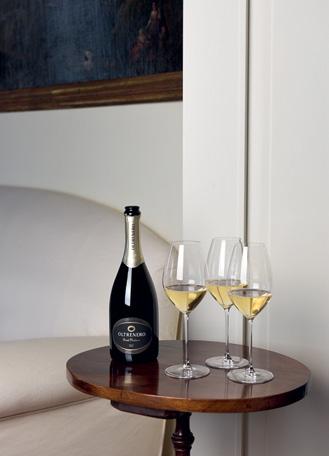
tura e dell’umidità ricrea al suo interno le condizioni ottimali di una grotta. È qui che le bottiglie possono riposare protette dalla luce e dagli sbalzi climatici e consentire la lenta maturazione degli spumanti secondo il metodo classico della rifermentazione in bottiglia. Fragrante e seducente, Oltrenero Cuvée Brut è uno spumante dal sentore unico che richiama note di ribes maturo, fiore bianco, crosta di pane, capaci di esprimere una profumazione molto piacevole. ll Brut Nature, dopo 48 mesi di riposo, offre profumi finissimi e un sorso dalla trama piena e ricca di sfumature. Le viti vecchie più di trent’anni, le rese decisamente contenute, la vinificazione in piccole partite, per singola parcella, con il Metodo Classico danno vita a uno Spumante elegante e grintoso capace di esprimere la cultura millenaria custodita tra le colline dell’Oltrepò. Metodo classico da 100% Pinot Nero, Il Cruasé di Oltrenero, vinificato in rosa, è una bollicina definita “cruasé” – nome creato dal termine francese “cru” a cui in questo contesto viene attribuito il significato di selezione, e “rosé”, dal colore brillante e dalla spuma soffice – di grande freschezza e profumi fragranti. Ha una storia da raccontare l’Oltrenero Cuvée EMME, ovvero Emme come Meunier, il “Pinot del Mugnaio”, che deve il suo nome al fatto che la parte inferiore della foglia di vite è ricoperta da una setosità bianca che la fa apparire come fosse ricoperta di farina. Un blanc de noirs accattivante e intrigante che, nella complessità di un metodo classico, regala un sorso al contempo fresco e cremoso, di grande piacevolezza.
Il patrimonio vitivinicolo di questo territorio, tra i ginepri e rigogliose viti, è tramandato da generazioni così da poter essere incessantemente perfezionato: un circolo senza fine di saperi antichi e tradizioni custodite che si esprimono nel presente con uno sguardo sempre volto al futuro. Proprio questa filosofia è espressa dall’iconico simbolo della Tenuta Oltrenero: un armonioso moto circolare che rigenera continuamente sé stesso tendendo alla perfezione.
Specializing in sparkling wines,the Oltrenero Estate is famous for its classic method sparkling wines. The undisputed king of the estate and the main grape variety is Pinot Noir,which has expressed all its class and personality in these lands for more than two centuries
FROM THE MIDDLE AGES TO THE PRESENT DAY, THE HISTORIC TRADITION OF THE PINOT NOIR ViticultureinOltrepòPaveseisveryold,andtheearliest written records date back to Pliny and Strabo, who in 40 B.C., passing through with a Roman legion, wrote “good wine, hospitable people and very large wooden barrels”.But it is the Middle Ages that the origins of the Oltrenero Estate date back to,when Benedictine monks began cultivating the land after many years of neglect, making the vines flourish again.At this time the village of origin was called Zenevredo della Pusterla due to the area almost completely belonging to the Monastery St. Mary Theodote,also called della Pusterla (“small door”), because of a small access created in the 12th century in the wall of the building that led directly outside, without having to pay duties. The cultivated area, also known as“Old Piedmont,”began to distinguish itself for Italiansparklingwineproductionattheendofthe19th century,thankstoPinotNoirgrapes,avineofexcellence particularly suited to being vinified as a white wine and then giving rise to noble sparkling wines produced with the classic method. The Oltrenero winery began

its rise in 1987, when it became the property of the Venetian Zonin family,which,realizing the value of this land, expanded the area planted with vines from the initial 30 hectares to the current 104 hectares (of which 84 are planted with vines) by purchasing the Il Bosco estate, which stood on land planted with vines by the Benedictines since the Middle Ages. In this expansion phase,the great wealth of noble native varieties such as the amazing Croatina and Barbera,but especially Pinot Noir,hasbeenfavored.Oltrenero’svineyardsstretchover softhillsshapedthousandsofyearsagobytheactionof glacial moraines that deposited a layer of clay rich in mineralsalts,makingitsuitablesoilforvinecultivation. Currentlysome75%ofthePinotNoirgrowninItalyisin OltrepòPavese:today,thisvineexpressesallitsclassand personality,justlikeitdidtwocenturiesago.
SUSTAINABILITY AND CARING FOR THE GRAPES
Taking great care of Oltrenero’s vineyards is centered around obtaining perfect grape health and recreating those special conditions that have always made it possible to obtain a wine of great quality. In fact, all stages of vine cultivation, from the pruning of the vines to the harvest, are meticulously followed by the estate’s agronomists, and under the supervision of Oltrenero’s oenologist and director Paolo Tealdi, who has immediately adopted sustainable management. Indeed, he has intensified multifunctional grassing, essences that improve soil fertility, and also those that are melliferous for bees and insects, which are crucial for biodiversity.He has also focused on reorganizing the Estate’s technologies and optimizing the management of forest areas to protect floricultural species and reducethecarbonfootprintthroughthestrategicuseof machinery during phytosanitary treatments with low ornoenvironmentalimpact.
BEYOND PINOT NOIR: OLTRENERO’S BEST
In the Oltrenero Estate’s evocative and quiet undergroundcellars,temperatureandhumiditycontrol recreates the optimal conditions of a cave inside. It is here that the bottles can rest protected from light and weather changes and allow the slow maturation of sparkling wines according to the classic method of refermentation in the bottle. Fragrant and seductive, Oltrenero Cuvée Brut is a sparkling wine with a unique scentthatrecallsnotesofripecurrant,whiteflower,and breadcrust,andiscapableofexpressingaverypleasant fragrance. Brut Nature, after 48 months of rest, offers very fine aromas and a sip with a full and nuanced texture.Vinesthataremorethan30yearsold,decidedly low yields,and vinification in small batches in a single plot, using the Classic Method give rise to an elegant and gritty sparkling wine capable of expressing the millennialcultureguardedamongthehillsofOltrepò.A classic method made from 100% Pinot Noir,Oltrenero’s Cruasé, vinified as a rosé wine, is a bubble defined as “cruasé”, a name created from the French term “cru” which in this context is given the meaning of selection, and “rosé,” with its brilliant color and slight fizziness, withlotsoffreshnessandfragrantaromas.TheOltrenero CuvéeEMME,orEmme(“M”)asinMeunier,the“Miller’s Pinot,”hasastorytotell;itowesitsnametothefactthat the underside of the vine leaf is covered with a white silkiness that makes it appear as if it were covered with flour.Acaptivatingandintriguingblancdenoirsthat,in the complexity of a classic method,provides a sip that is both fresh and dense,very pleasant.The winemaking heritageofthisarea,amongthejunipersandlushvines, has been handed down for generations so that it can be ceaselessly perfected: an endless circle of ancient knowledgeandguardedtraditionsthatareexpressedin thepresentwithaneyealwaysbeingkeptonthefuture. Thisveryphilosophyisexpressedbytheiconicsymbolof the Oltrenero Estate: a harmonious circular motion that continuallyregeneratesitselfwhilestrivingforperfection.

by Antonella Garello

SUPERCAR OWNERS CIRCLE HA ORGANIZZATO
AD ANDERMATT UN EVENTO SPETTACOLARE PER FESTEGGIARE IL SUO DECENNALE, CON AUTOMOTIVE PARTNERS D’ECCEZIONE QUALI
LOTUS, HWA, ASTON MARTIN ZÜRICH, OFFICIAL
FERRARI DEALER NIKI HASLER, PAGANI OF LUGANO E NARAN AUTOMOTIVE. TRA
PANORAMI ALPINI DI ECCEZIONALE BELLEZZA, LA MANIFESTAZIONE HA RIUNITO OLTRE 100
APPASSIONATI COLLEZIONISTI PROVENIENTI DA
TUTTO IL MONDO, TESTIMONI E PROTAGONISTI DI MOMENTI INDIMENTICABILI
Esclusivi, unici, indimenticabili: non c’è altro modo per descrivere gli eventi organizzati per i suoi membri da Supercar Owners Circle (SOC), club elitario di appassionati di supercar, di hypercar - veri e propri gioielli riservati a pochi eletti - e classic car fondato dieci anni fa ad Andermatt da Florian e Stefan Lemberger. Proprio ad Andermatt, che dalla sua splendida posizione nella alta valle di Ursern è da sempre meta turistica d’eccezione, ricercata da una clientela internazionale, si è svolta la tre giorni che a fine giugno ha segnato l’inizio dei festeggiamenti per i dieci anni di vita del Club. L’evento, che ha richiamato oltre 100 collezionisti provenienti da Paesi di tutto il mondo, tra cui Giappone, Stati Uniti, Olanda e Montecarlo, ha visto la partecipazione di alcune delle auto che hanno fatto la storia dell’automobilismo, tra classic car e youngtimer costruite tra il 1930 e i primi anni 2000; tra queste sono state premiate una delle quindici Ferrari 365 Daytona Competizione Gruppo 4 ufficiali, che si è aggiudicata il titolo di best of show. A seguire la Porsche 906, la Mercedes 300 SL Gullwing, e la Koenigsegg CCX arrivata direttamente dal Montana, USA. Tra i momenti indimenticabili offerti dall’evento vanno annoverati tre “debutti” d’eccezione: la prima guida su strada della HWA EVO ispirata alla Mercedes 190 EVO II, che
combina caratteristiche altamente tecnologiche e un motore ad alte prestazioni con un design che richiama l’iconica berlina sportiva degli anni ‘90; il debutto della Lotus Type 66, conosciuta anche come Lotus “perduta”, che è stata accesa e messa in movimento per la prima volta, riportando in pista un modello progettato nel 1970 e mai costruito fino alla sua presentazione ufficiale in California nell’ambito del Monterey Car Week 2023; il debutto mondiale della Naran hyper-coupé – costruita in soli 39 esemplarifrutto della collaborazione tra Ameerh Naran e Jowyn Wong, di WYN Design: una hypercar con due sedili aggiuntivi per i fortunati passeggeri. I partecipanti hanno attraversato tre celeberrimi passi di montagna - Susten, Furka e Oberalp - chiusi al traffico per l’occasione, godendo di un’esperienza di guida indimenticabile in mezzo a panorami spettacolari. Supportato dal 5 stelle The Chedi Andermatt e patrocinato da Andermatt Swiss Alps, l’evento è stato realizzato in collaborazione con Carbon Connect AG che lo ha certificato carbon neutral, ed è stato impreziosito dalle proiezioni luminose del light artist svizzero Gerry Hofstetter. Grazie alla vendita di queste opere d’arte e ad altre attività di fundraising sono stati raccolti circa 100.000 franchi svizzeri, parte dei quali saranno devoluti a sostegno di enti e iniziative locali.

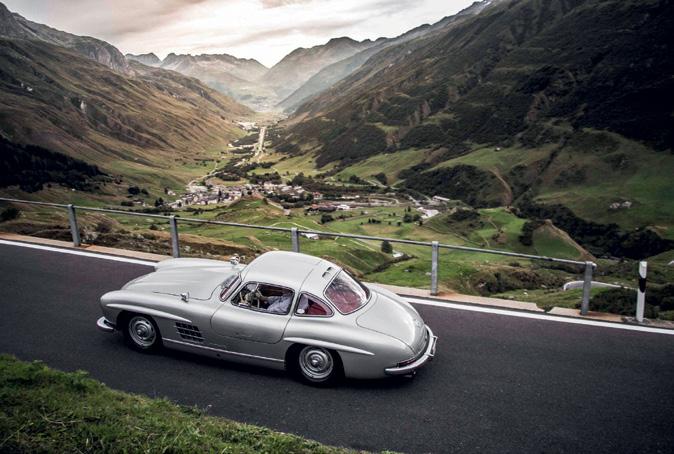

Supercar Owners Circle organized a spectacular event in Andermatt to celebrate its 10th anniversary,with some extraordinary automotive partners such as Lotus,HWA, Aston Martin Zürich,Official Ferrari Dealer Niki Hasler, Pagani of Lugano and Naran Automotive.Amid exceptionally beautiful alpine views, the event brought together more than 100 passionate collectors from all over the world as witnesses and main stars of unforgettable moments
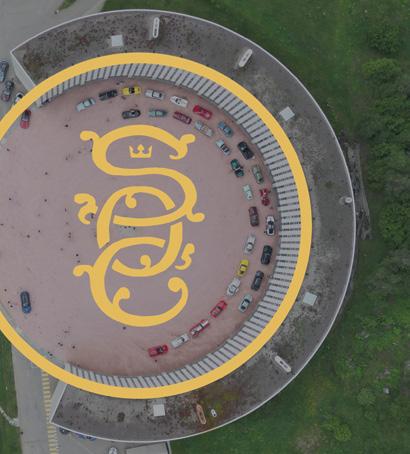

Exclusive, unique, unforgettable: there is no other way to describe the events organized for its members by Supercar Owners Circle (SOC), an elite club of enthusiasts of supercars,hypercars - true gems reserved for a select few - and classic cars founded ten years ago in Andermatt by Florian and Stefan Lemberger.It was in Andermatt itself,which from its splendid location in theupperUrsernvalleyhasalwaysbeenanexceptional tourist destination sought after by an international clientele, that the three-day event took place at the end of June that marked the beginning of the club’s ten-year celebration. The event, which drew more than 100 collectors from countries around the world, including Japan, the United States, the Netherlands and Monte Carlo, featured some of the cars that have made automotive history, including classic cars and youngtimers built between 1930 and the early 2000s; among them was one of fifteen official Ferrari 365 Daytona Competizione Group 4 cars, which won the title of best of show. This was followed by the Porsche 906,the Mercedes 300 SL Gullwing,and the Koenigsegg CCX that came straight from Montana, USA. Three outstanding “debuts” must be counted among the unforgettable moments offered by the event: the first road drive of the HWA EVO inspired by the Mercedes 190 EVO II, combineing high-tech features and a highperformance engine with a design reminiscent of the
iconic 1990s sports sedan; the debut of the Lotus Type 66, also known as the “lost”Lotus, which was fired up and put into motion for the first time,bringing back a model to the track that was designed in 1970 and never built until its official unveiling in California as part of Monterey Car Week 2023; the world debut of the Naran hyper-coupé (with only 39 models built),the result of a collaborationbetweenAmeerhNaranandJowynWong fromWYNDesign:ahypercarwithtwoadditionalseats fortheluckypassengers.
Participants crossed three celebrated mountain passesSusten,Furka and Oberalp - which were closed to traffic for the occasion, enjoying an unforgettable driving experienceamidspectacularscenery.
Supported by the 5-star The Chedi Andermatt and sponsored by Andermatt Swiss Alps, the event was held in collaboration with Carbon Connect AG, which certified it as carbon neutral, and was enhanced by light projections by Swiss light artist Gerry Hofstetter. Through the sale of these artworks and other fundraising activities, about 100,000 Swiss francs were raised, part of which will be donated to support local organizationsandinitiatives.
by Antonella Garello
AL CONTEST DI LAS VEGAS SONO STATI
DUE I PRIMI PREMI CONQUISTATI DA BRAND ITALIANI: DUE CREAZIONI CHE, PUR DIVERSISSIME, SANNO ESPRIMERE TUTTA LA RAFFINATEZZA E LA PERIZIA DEL MADE IN ITALY

Francesca Villa non avrebbe potuto immaginare un risultato migliore per la sua prima volta ai Couture Design Awards di Las Vegas: col medesimo gioiello - uno splendido bracciale della collezione Change your Stripes - non solo ha vinto il primo premio nella categoria Best in Debuting, ma è anche risultata terza nella categoria Best in Haute Couture. Francesca parte sempre da elementi vintage che va a scovare in tutto il mondo tra mercatini specializzati e collezionisti e per questa creazione il punto di partenza sono stati dei cammei vintage in resina che venivano prodotti in Giappone negli anni Cinquanta per un’azienda americana la quale li utilizzava per decorare accessori da uomo. Lei li ha invece usati per sviluppare un’intera collezione di originalissimi gioielli, reversibili grazie a un particolare meccanismo: così li si indossa scegliendo la parte che meglio si adatta al proprio mood del giorno. «Il bracciale ad esempio ha un lato più scherzoso e uno più serio. Il primo è giocato su una geometria data dalle righe orizzontali e verticali, abbinata però a elementi decorativi miniati un po’ fuori dagli schemi, come il ravanello, la zucca, i pomodori. Nell’altro lato i cammei coi loro motivi classicheggianti sono accostati a pelle e diamanti». La descrizione puramente tecnica del bracciale - che per la cro -
by Antonella Garello
naca ha richiesto 230 ore di lavoro e l’impiego di oro, diamanti, diaspri, smeraldi, citrini, zaffiri, tormaline oltre alle parti in pelle, alle miniature e ai cammei - non basta a rendere conto né della visione creativa della designer né dei livelli di perfezione raggiunti dagli artigiani coinvolti nel progetto, che hanno superato difficoltà di ogni tipo: «Le miniature sono tutte realizzate completamente a mano libera, senza contorno d’oro, gli inserti in pelle sono lavorati e dipinti a mano da un atelier fiorentino che ha anche studiato la particolare bombatura della costa richiesta, abbiamo messo a punto cerniere particolari che assicurassero la perfetta mobilità e reversibilità
del bracciale, l’incassatura ha richiesto anch’essa una particolare abilità… E potrei andare avanti a descrivere le soluzioni studiate per ogni singolo elemento. In fondo l’aspetto più bello di questo bracciale è proprio la collaborazione dei bravissimi artigiani - italiani - con expertise completamente diverse, che si sono innamorati del progetto e vi si sono dedicati con dedizione ciascuno per la propria parte: è la perfezione di tanti dettagli che ha veramente fatto la differenza» conclude Francesca Villa.
È invece ispirata alla Fenice, il favoloso uccello sacro agli antichi Egizi e Greci, la maestosa collana realizzata da Gismondi 1754 con oltre 100
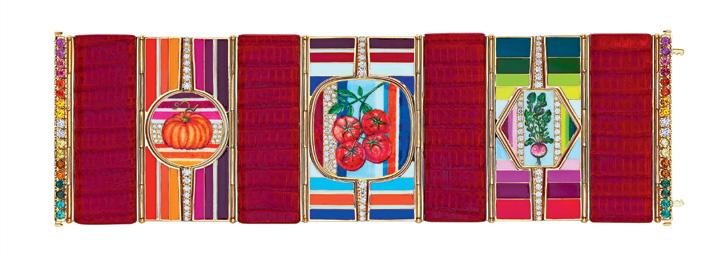
carati di diamanti che ha conquistato il primo premio nella categoria Best in Diamonds above $40K. In vacanza a St. Barths con la famiglia, Massimo Gismondi, Direttore Creativo e CEO del brand, è rimasto affascinato dallo spettacolo delle foglie delle palme mosse dal vento nella magica luce dell’isola, che gli hanno rimandato l’immagine della mitica creatura così come descritta dagli antichi, alzata in volo col suo splendido piumaggio nella luce del sole. Secondo vari miti, e ancora oggi nell’immaginario collettivo, la Fenice è simbolo di morte e risurrezione, perché, dopo aver vissuto per 500 anni, si ritirava in un luogo appartato e vi costruiva un nido dove attendeva la morte e, nell’arco di tre giorni, la successiva rinascita come nuova, giovane e splendida Fenice. «Oltre all’eccezionale bellezza, ogni Fenice che risorge è la conoscenza immortale e l’esperienza delle difficili circostanze del passato, un simbolo di rinnovamento, speranza e possibilità del nostro destino» commenta Massimo Gismondi. La collana Fenice si sviluppa attorno a un eccezionale diamante bianco pear shaped D Color da 5,05 carati: i fili di diamanti, round e pear shaped, sono posizionati in maniera volutamente disordinata, con diverse lunghezze e direzioni, a rappresentare sia le piume della Fenice sia i rami delle palme. Il gioiello misura oltre 15 cm e vi sono incastonati più di 64 carati di diamanti pear shaped e 31 carati di diamanti round. Un lavoro, nelle parole di Massimo Gismondi, «di passione e di determinazione», che ha richiesto oltre 500 ore di lavorazione da parte di maestri gioiellieri che lo hanno realizzato nell’atelier di Genova, riuscendo a tradurre il mito in un capolavoro di luce e raffinatezza.
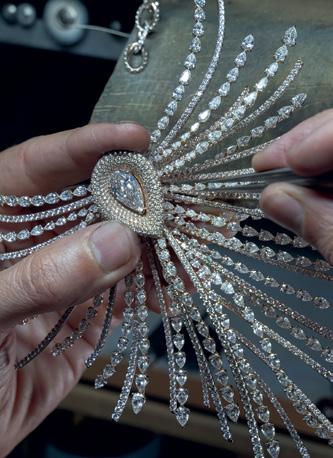
Two
Italian brands were awarded first prize at the Couture Design Awards held in Las Vegas: two creations that,although very different,express all the sophistication and expertise of the“Made in Italy”
Francesca Villa could not have imagined a better outcome for her first time at the Couture Design Awards in Las Vegas: with the same jewel - a stunning bracelet from the Change your Stripes collection - not only did she win first prize in the Best in Debuting category, but also placed third in the Best in Haute Couture category.Francesca always starts with vintage pieces that she manages to discover around the world at specialized flea markets and collectors. For this creation,the starting point was vintage cameos made of resin that were made in Japan in the 1950s for an Americancompanythatusedthemtoembellishmen’s accessories. She instead used them to create an entire collection of very original jewelry that is reversible thanks to a special mechanism: this way you can wear them by choosing the side that best suits your mood of the day.“The bracelet,for example,features one side that is more playful while the other is more serious. Thefirstdisplaysageometrycreatedbyhorizontaland vertical stripes,combined with ornamental miniature elements a bit outside the norm, such as radishes, pumpkins, and tomatoes, while on the other side cameos with classical motifs are paired with leather and diamonds”. The purely technical description of the bracelet - which,by the way,required 230 hours of work and the use of gold,diamonds,jaspers,emeralds, citrines, sapphires, and tourmalines in addition to leather parts,miniatures and cameos - does not suffice toaccountforeitherthedesigner’screativevisionorthe levels of perfection achieved by the artisans involved in the project, who overcame all kinds of difficulties: “All the miniatures are made completely by hand, without any gold outline, while the leather inserts are handcrafted and hand-painted by a Florentine atelierwhoalsostudiedtheparticularcurvatureofthe requested edge.We also developed special hinges that would guarantee perfect movement and reversibility of the bracelet,the setting also required special skills... And I could go on and on in describing the solutions devised for each element.After all,the most beautiful aspect of this bracelet is precisely the cooperation of the talented artisans - all Italians - with completely different expertise, who fell in love with the project and dedicated themselves to it,each one for their part: it is the perfection of so many details that made the difference”,concluded Francesca Villa.

The majestic necklace made by Gismondi 1754 with more than 100 carats of diamonds that won first prize intheBestinDiamondsabove$40Kcategoryisinstead inspired by the Phoenix, the fabled bird sacred to the ancient Egyptians and Greeks. While vacationing in St. Barths with his family, Massimo Gismondi, the brand’s Creative Director and CEO, was fascinated by the spectacle of palm leaves swaying in the wind in the island’s magical light,which reminded him of the image of the mythical creature as described by the ancients, soaring with its beautiful plumage in the sunlight.
According to various myths, and still today in the collective imagination, the Phoenix is a symbol of death and resurrection because, after having lived for 500 years,it would retreat to a secluded place and build a nest where it would await death and, within three days, its subsequent rebirth as a new, young and magnificent Phoenix.“In addition to exceptional beauty, each Phoenix that rises again represents the immortal knowledge and experience of the difficult events of the past, a symbol of renewal, hope and possibility of our fate”commented Massimo Gismondi. The Phoenix necklace is designed around an exceptional 5.05-carat pear-shaped D Color white diamond: the strands of diamonds, round- and pearshaped,aredeliberatelyarrangedinarandommanner, with different lengths and directions, to represent both the Phoenix’s feathers and the palm branches. The jewel measures over 15 cm and is set with over 64 caratsofpear-shapeddiamondsand31caratsofround diamonds. In Massimo Gismondi’s words, it is a work “of passion and determination,” requiring more than 500 hours of labor by master jewelers who crafted it in the Genoa atelier,managing to translate the myth into a masterpiece of light and sophistication.
LIBRO ILLUSTRA STORIA, DIFFUSIONE E SIGNIFICATO
DELLA PERLA NEL CORSO DEI SECOLI
by Antonella Garello

Dagli orecchini a tre perle di cui - come ci narra Omero nell’Iliade - si adorna Era per sedurre Giove al collier di perle bianche sfoggiato da Harry Styles: possono aver mutato il loro ruolo nella società, nella moda, nei commerci, nella cosmetica, ma le perle hanno mantenuto inalterato il loro fascino dalla notte dei tempi fino ai giorni nostri e a ogni latitudine. E a spiegare il perché di questo incanto sono riusciti con questo interessantissimo volume - che ci accompagna dall’Europa al Nuovo Mondo all’Asia, dal golfo Persico a quello di Mannar, dalla Cina al Giappone - tre storici. Maria Giuseppina Muzzarelli, Luca Molà e Giorgio Riello hanno esaminato una sterminata mole di fonti: sono infatti i testi,“letterari e giuridici, gli atti notarili, le cronache, i documenti processuali, i resoconti di viaggiatori”, oltre ai tantissimi dipinti sopravvissuti (al contrario delle perle, che andavano largamente soggette a deterioramento e distruzione) a testimoniare l’importanza e le valenze di cui questi “piccoli oggetti luminosi” sono stati investiti nel corso del tempo. E innumerevoli sono gli aneddoti, le curiosità, le storie e le cose da scoprire che ci riserva la lettura.
Associate all’acqua e alla nascita in età antica (Afrodite emerge dal mare e le gocce d’acqua sul suo corpo si trasformano in perle), ma anche al dolore e al lutto (ci è infatti familiare l’immagine
delle perle come lacrime, delle donne se bianche, degli uomini se nere), le perle in età precristiana sono segni di ricchezza e rarità: Cleopatra ne inghiotte una di straordinarie dimensioni, sciolta in una coppa d’aceto, Cesare ne dona una di enorme valore all’amante Servilia, l’aristocratico Clodio ne fa servire ai commensali. Nelle Sacre Scritture dopo gli zaffiri sono le perle le gemme più citate e nel mondo cristiano la perla viene associata a purezza e spiritualità: “Non gettate le vostre perle davanti ai porci”, ammonisce Gesù nel Vangelo, mentre un passo del Cantico dei Cantici sembra stabilire il nesso, destinato a durare nei secoli, tra le perle e l’amore coniugale - e nel Quattrocento la perla si imporrà come canonico dono dei fidanzati alle promesse spose. Il viaggio di Marco Polo costituisce una vera rivoluzione (apprendiamo tra l’altro che ai tanti riferimenti alle perle contenuti nel Milione non rimarrà insensibile Cristoforo Colombo, come attestano le sue note autografe sulle pagine della propria copia). Le perle diventano oggetti di desiderio e di gran moda ed è infatti tra il Trecento e il Seicento - i secoli della loro maggiore diffusione e popolarità
- che si concentrano le ricerche degli autori. Mentre si moltiplicano i puntigliosi tentativi di disciplinare il lusso con apposite leggi, multe e gabelle (che servivano comunque a rimpinguare le casse cittadine), la domanda crescente stimola la diffusione di perle false o “trattate”. Lo stesso Leonardo, nel Codice Atlantico, propone un metodo per preparare “pasta di perle minute”, atta a ricreare perle di maggiore volume: un mix di vero e falso. Pure e preziose, le perle fino a tutto il Settecento vengono fiduciosamente impiegate come antidoto e medicinale - contro la peste, le affezioni oculari, le scrofole e via dicendo - o come cosmetico (del resto gli autori ricordano che ancora oggi sono vendute creme anti-age o dentifrici sbiancanti che contengono estratti di perle). Oggi non sono ancora all’ordine del giorno i gioielli con perle per gli uomini? Lo erano nel Cinquecento e nel Seicento, almeno per regnanti e aristocratici, come attestano i dipinti riprodotti nel libro: in particolare mostrano una predilezione spiccata per le perle i re e i gentiluomini della corte inglese, dove potere ed eleganza si concretizzano in lunghe collane, orecchini voluminosi (che sa-
ranno archiviati dall’avvento delle parrucche maschili nel Settecento), addirittura opulente bandoliere. Con l’età moderna e le grandi esplorazioni e scoperte geografiche del Cinquecento e Seicento il mondo “si allarga”. I resoconti di viaggiatori e mercanti fotografano le nuove rotte commerciali, le leggi dei mercati, l’ingegno dei “mercatanti” (è del 1503 il “tariffario” del veneziano Bartolomeo De Pasi, con le corrispondenze delle unità di misura dei vari centri commerciali in Europa, Asia e Africa). Nel Nuovo Mondo allungano ombre sullo sfruttamento dei banchi i disastri causati (già allora!) dalla pesca intensiva e dallo sfruttamento impietoso della manodopera locale e degli schiavi catturati in Africa. Secoli dopo, a fine Ottocento, il giapponese Kokichi Mikimoto metterà a punto un metodo efficace per la coltivazione delle perle, che contribuirà un’altra volta alla loro diffusione globale. Oggi le perle vivono una perfetta doppia vita, da una parte al centro di gioielli classici, adatti a occasioni formali, dall’altra protagoniste di monili e accessori dal design innovativo, perfetti per un uso quotidiano, per ogni genere e per ogni età. La perla sta vivendo la sua ennesima trasformazione.
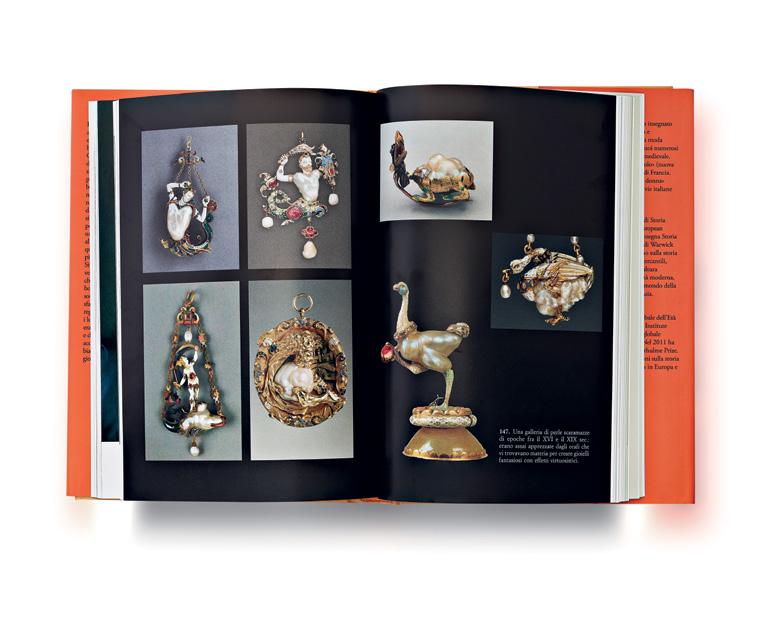
From the three-pearl earrings with which - as Homer recounts in the Iliad - Hera adorned herself to seduce Jupiter,tothewhitepearlnecklacewornbyHarryStyles: their role in society, fashion, trade and cosmetics may have changed,but pearls have maintained their charm from the dawn of time until today and at all latitudes. Three historians succeeded in explaining the reasons behindthischarmwiththisveryinterestingpublication, which takes us from Europe to the New World to Asia, from the Persian Gulf to the Gulf of Mannar, from China to Japan. Maria Giuseppina Muzzarelli, Luca Molà and Giorgio Riello examined a vast number of sources. Indeed,“literary and legal texts, notarial acts, chronicles,court documents,travelers’accounts”,as well as the many paintings that have survived (as opposed to pearls,which were widely prone to deterioration and destruction) bear witness to the importance and value conferred on these“small shiny objects”over time.And there are countless anecdotes,trivia,tales and items in storeforustodiscoveraswecontinueourreading.
Rich in anecdotes, curiosities,great and small stories,and cultured references,the book illustrates the history, diffusion,and significance of the pearl throughout the centuries
Associated with water and birth in ancient times (Aphrodite rises from the sea and the drops of water on her body turn into pearls), but also with grief and mourning (we are familiar with the image of pearls as tears, tears of women if white, of men if black), pearls in pre-Christianity times were symbols of wealth and rarity: Cleopatra swallowed an extraordinarily large one dissolved in a cup of vinegar, Caesar gifted one of enormous value to his mistress Servilia, the aristocratic Clodius had them served to banqueters. In the Scriptures, pearls, after sapphires, are the most frequently mentioned gems, and in the Christian world the pearl is closely associated with purity and spirituality: “Do not throw your pearls before swine”, Jesus warns in the Gospel, while a passage from the Song of Songs seems to establish the link,meant to last throughthecenturies,betweenpearlsandmaritalloveinthe15thcentury,pearlswouldcometoprominenceas a customary gift from fiancés to their betrothed brides. Marco Polo’s journey represents a real revolution (we learn,among other things,that Christopher Columbus was not to remain indifferent to the many references to pearlscontainedintheMillion,ashishandwrittennotes on the pages of his copy testify).Pearls became objects of desire and high fashion, and the authors’ research focuses precisely on the period between the 14th and 17th centuries - the time of their greatest diffusion and popularity. While the painstaking attempts to govern
luxury with special laws,fines and taxes (which served to fatten city coffers anyway) multiplied, the growing demand encouraged the spread of fake or “processed” pearls. Leonardo himself, in the Codex Atlanticus, suggested a method for preparing a“paste made from tiny pearls,”suited to recreating larger pearls: a mix of true and false. Pure and valuable, until the end of the 18th century pearls were trustingly used as an antidote and medicine - against plague, eye afflictions, scrofula, and so on - or as a cosmetic (after all, the authors point out that anti-aging creams or tubes of whitening toothpaste containing pearl extracts are still on the market to this day). Isn’t pearl jewelry for men still commonly used nowadays? They were so in the 16th and 17th centuries, at least for rulers and aristocrats, as evidenced by the paintings depicted in the book: in particular, a keen preference for pearls was shown by the kings and gentlemen of the English court, where power and elegance were embodied in long necklaces, bulky earrings (which would be shelved with the advent of men’s wigs in the 18th century), and even opulent bandoliers.With the modern age and the great geographical explorations and discoveries of the 16th and17thcenturies,theworld“expanded”.
The accounts of travelers and traders captured the new trade routes, the laws of the markets, and the resourcefulness of the “merchants” (the Venetian Bartolomeo De Pasi’s“tariff book”,with equivalences of the units of measurement of the various trade centers in Europe, Asia and Africa, dates back to 1503). In the New World, the disasters caused (even back then!) by intensive fishing and the merciless exploitation of the local labor force and the slaves captured in Africa cast shadows on the exploitation of the banks of pearls. Centuries later, at the end of the 19th century, the JapaneseKokichiMikimotodevisedasuccessfulmethod of pearl cultivation that would contribute another time to their worldwide diffusion. Today, pearls are living a perfect double life,on the one hand at the center of classic jewelry,suitable for formal occasions,and on the otherplayingtheleadingroleinjewelryandaccessories featuring innovative designs, perfect for everyday use, for every gender and every age.The pearl is undergoing yetanothertransformation.


